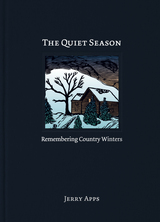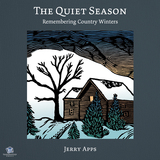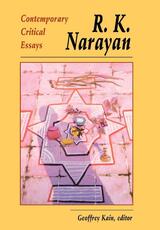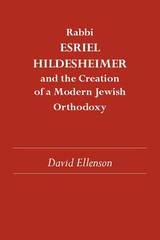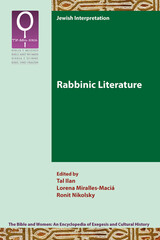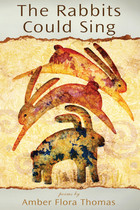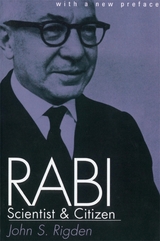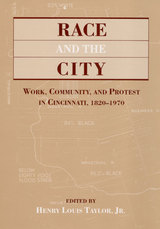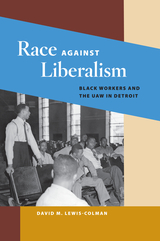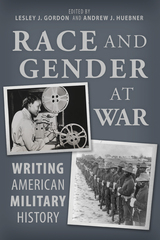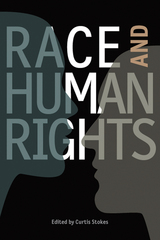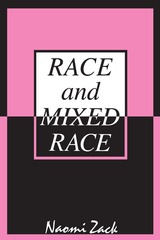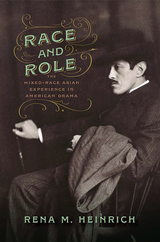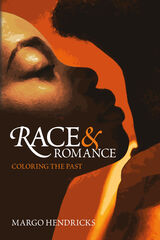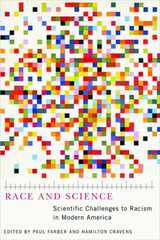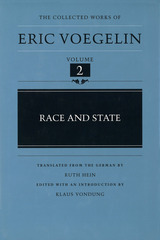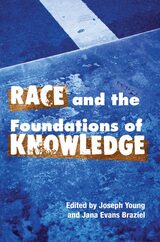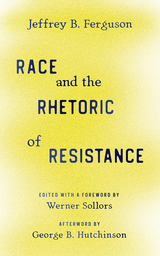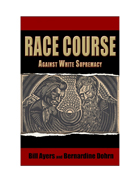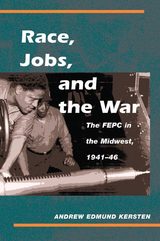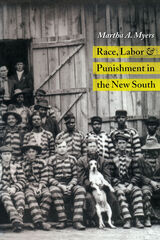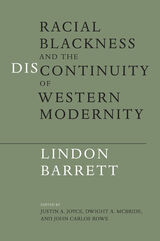 R. F. D.: Charles Allen Smart
Charles Allen Smart
Ohio University Press, 1998 “This book,” the author tells us in his preface, “is intended to be a picture of life on a farm in Southern Ohio in the 1930s.” It is a faithful portrait of farm life as thousands of men and women experienced it from one end of the country to the other and from pioneering times to the present century. Originally published in 1938 to enthusiastic reviews and commercial success, RFD is the story of one couple’s trials with leaving the comforts of city life for a chance to get back to the land. From his farm near Chillicothe, Ohio, Charles Allen Smart gives a realistic rendering of what it meant to farm in the 1930s. It is part of the book’s intrinsic honesty that it could not be as good as Walden. Thoreau had worked out a philosophy that suited him and that he was ready to recommend to others. Mr. Smart had no prescription for the general ailments, beyond a belief that creating things is important and that owning, buying, and selling things are unimportant. What he tells us throughout this unusual book is that for him life on this particular farm, in this particular house, with this particular set-up of friends, neighbors, dogs, sheep, hens, cattle, trees, corn, vegetables, grass, and weather, costs less in human values than life in New York City—or in Chillicothe. Ohio University Press is especially pleased to reissue this midwestern classic with a new foreword by noted farm writer Gene Logsdon.
 R. H. Tawney and His Times: Socialism as Fellowship
Ross Terrill
Harvard University Press, 1973 Economic historian, democratic socialist, educator, and British labor party activist, R. H. Tawney touched many worlds. His life, too, spanned great distance and change. When he was born in Calcutta in 1880, Gladstone, Tennyson, and Queen Victoria were flourishing and the British Empire was approaching its height. By the time of his death in 1962, the Empire had shrunk to a few tourist islands, and socialism, once so shocking, was now commonplace.
Ross Terrill, in this absorbing first study of Tawney’s thought, view his subject within three related contexts. The first is Tawney, the man. Terrill makes skillful use of unpublished material—the early diary, speech and lecture notes, letters, interviews with friends and associates—to tell the story of Tawney’s life in relation to his times. Second is social democracy. Tawney was one of its most influential philosophers and prophets, and this book argues for the continuing validity of his socialism as a path between capitalism and communism. Third is British politics. From Edwardian liberal “consensus” to mid-century collectivist “consensus,” Tawney’s long career, often at odds with prevailing orthodoxies, offers a window on British political culture.
Four key ideas are found in Tawney’s political thought: equality and the dispersion of power—the “shape of socialism”; function and citizenship—the “life of socialism.” These ideas, and indeed the life of the man himself, Terrill believes, are summed up in socialism as fellowship. “As long as men are men,” Tawney said, “a poor society cannot be too poor to find a right order of life, nor a rich society too rich to have need to seek it.”
This book is a blend of biography, history, and the study of political ideas. It provides a striking portrait of a remarkable man and a panorama of changing ideas and situations in the society where he tried to realize his socialist vision. It offers many glimpses of Tawney’s associates, among them Beveridge, the Webbs, Laski, A. P. Wadsworth, Temple, Margaret Cole, and Leonard Woolf; and surprising snippets, like the fact that Tawney used the phrase “private affluence and public squalor” in 1919.
R. K. Narayan: A Critical Appreciation
William Walsh
University of Chicago Press, 1982 R. K. Narayan, author of more than a dozen novels and numerous short stories, is a writer of international stature. Only recently, however, has he received the critical attention that is his due.
This lucid and often eloquent study provides both new and devoted Narayan readers with an introduction to his life and work. William Walsh, who makes generous and apt use of quotations from Narayan's work, traces Narayan's artistic development and brings into clear relief the qualities that characterize his fiction: gentle irony, humor, and a tolerance of human foibles. Both a criticism and an appreciation, this work will prove valuable to those already acquainted with this delightful and important novelist and will lead others to his work for the first time.
 Rabad of Posquiers: A Twelfth-Century Talmudist
Isadore Twersky
Harvard University Press Provence during the twelfth century was the scene of a remarkable renaissance in Jewish scholarship. Cities such as Lunel, Carcassonne, and Montpellier became centers of learning--pivotal points of contemporary Jewish life whose influence was important in the evolution of Jewish culture in general and the development of Jewish law in particular.
Rabad of Posquières--Rabbi Abraham ben David--was one of the most creative Talmudic scholars of this period. Although celebrated for his criticism of Maimonides' Mishneh Torah, the nature and significance of his halakic work have never before been clarified nor have his achievements been fully assessed.
This biographical treatise on Rabad captures his personality, chronicles his role in the intellectual history of the Jews in southern France during the twelfth century, and outlines his influence on subsequent generations. Rabad's disciples and followers are discussed, as well as his reaction to the philosophic literature of Spanish Judaism and his relation to the emerging medieval kabbalah. Characterization of his works, description of his halakic methodology, and analysis of his literary sources focus attention on basic problems of medieval Jewish history.
Rabbi Abraham Ibn Ezra: Studies in the Writings of a Twelfth-Century Jewish Polymath
Isadore Twersky
Harvard University Press, 1993 The biblical commentaries of Rabbi Abraham ibn Ezra (1089/1092–1164/1167) have become indispensable to anyone desiring a full appreciation of the biblical text, and this noted scholar also wrote extensively on philology, philosophy, mathematics, and astrology. The six essays in this book explore ibn Ezra’s multifaceted work and intellectual legacy. They illuminate his exegetical methodology; the role of astrology in his work; his philological insights into the Hebrew language; the possibility of his influence on the great Jewish philosopher and jurist, Maimonides; the numerous supercommentaries called forth by his enigmatic commentary; and modern Jewish perspectives on him.
Contributors are Jay M. Harris, Simhah Kogut, Y. Tzvi Langermann, Nahum Sarna, Uriel Simon, and Isadore Twersky. Two of the essays are in Hebrew.
Rabbi Esriel Hildesheimer and the Creation of a Modern Jewish Orthodoxy
David Ellenson
University of Alabama Press, 1990 The story of modern Orthodox Judaism is usually told only from the perspective of Rabbi Samson Raphael Hirsch. Ellenson’s work, a thorough examination of the life and work of one of Hirsch’s contemporaries, Rabbi Esriel Hildesheimer, reveals another important contributor to the creation of a modern Jewish Orthodoxy during the late 1800s. like Hirsch, Hildesheirmer felt the need to continue certain traditions while at the same time introducing certain innovations to meet the demands of a modern society. This original study of an Orthodox rabbinic leader shows how Hildesheirmer’s flexible and pragmatic approach to these problems continues to be relevant to modern Judaism. The way in which this book draws upon response literature for its comprehension of Hildesheimer makes it a distinctive work in modern Jewish historiography and sociology.
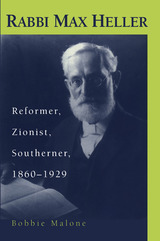 Rabbi Max Heller: Reformer, Zionist, Southerner, 1860-1929
Barbara S. Malone
University of Alabama Press, 1997 This biography of a pioneering Zionist and leader of American Reform Judaism adds significantly to our understanding of American and southern Jewish history.
Max Heller was a man of both passionate conviction and inner contradiction. He sought to be at the center of current affairs, not as a spokesperson of centrist opinion, but as an agitator or mediator, constantly struggling to find an acceptable path as he confronted the major issues of the day--racism and Jewish emancipation in eastern Europe, nationalism and nativism, immigration and assimilation. Heller's life experience provides a distinct vantage point from which to view the complexity of race relations in New Orleans and the South and the confluence of cultures that molded his development as a leader. A Bohemian immigrant and one of the first U.S.-trained rabbis, Max Heller served for 40 years as spiritual leader of a Reform Jewish congregation in New Orleans--at that time the largest city in the South. Far more than a congregational rabbi, Heller assumed an activist role in local affairs, Reform Judaism, and the Zionist movement, maintaining positions often unpopular with his neighbors, congregants, and colleagues. His deep concern for social justice led him to question two basic assumptions that characterized his larger social milieu--segregation and Jewish assimilation.
Heller, a consummate Progressive with clear vision and ideas substantially ahead of their time, led his congregation, his community, Reform Jewish colleagues, and Zionist sympathizers in a difficult era.
 Rabbi Moses Nahmanides (Ramban): Explorations in His Religious and Literary Virtuosity
Isadore Twersky
Harvard University Press, 1983 This rich little volume, which substantively enhances our knowledge and appreciation of R. Moses Nahmanides, contains an introduction by Isadore Twersky and five original and learned articles by well-known scholars: David Berger, Brooklyn College ("Miracles and the Natural Order in Nahmanides"); Ezra Fleischer, The Hebrew University ("The 'Gerona School' of Hebrew Poetry"); Moshe Idel, The Hebrew University ("'We Have No Kabbalistic Tradition on This'"); Bezalel Safran, Harvard University ("Rabbi Azriel and Nahmanides: Two Views of the Fall of Man"); and Bernard Septimus, Harvard University ("'Open Rebuke and Concealed Love': Nahmanides and the Andalusian Tradition").
Ramban's attitude to aggadah, poetry, exegesis and rationalism, his coupling of genuine conservatism and powerful originality, his views on the nature of man, law of nature, miracles, history of kabbalah, dialectics of halakah, his relation to the Spanish intellectual-spiritual background, Proencal culture, and French Talmudism--these are some of the topics explored in these pages. In connection with these specific topics of Nahmanides research, some broader historical issues are also touched upon: continuities and differences between Islamic and Christian Spain; varieties of thirteenth-centurey kabbalah; preoccupations of medieval halakists; root problems of Scriptural exegesis; the re-orientation of Hebrew poetry in Christian Spain; the relation of philosophy and mysticism.
Anyone interested in the luminous achievement and enduring influence of Ramban, probably the greatest figure in 13th century Jewish history, will turn to this volume.
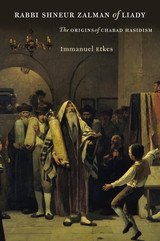 Rabbi Shneur Zalman of Liady: The Origins of Chabad Hasidism
Immanuel Etkes
Brandeis University Press, 2014 Rabbi Shneur Zalman of Liady (1745–1812), in imperial Russia, was the founder and first rebbe of Chabad, a branch of Hasidic Judaism that flourishes to the present day. The Chabad-Lubavitch movement he founded in the region now known as Belarus played, and continues to play, an important part in the modernization processes and postwar revitalization of Orthodox Jewry. Drawing on historical source materials that include Shneur Zalman’s own works and correspondence, as well as documents concerning his imprisonment and interrogation by the Russian authorities, Etkes focuses on Zalman’s performance as a Hasidic leader, his unique personal qualities and achievements, and the role he played in the conflict between Hasidim and its opponents. In addition, Etkes draws a vivid picture of the entire generation that came under Rabbi Shneur Zalman’s influence. This comprehensive biography will appeal to scholars and students of the history of Hasidism, East European Jewry, and Jewish spirituality.
Rabbinic Authority
Elliot L. Stevens
Central Conference of American Rabbis, 1982 Prominent rabbis from both pulpit and academia examine how the rabbinate is affected by halacha, personal charisma, semichah, Reform minhag, and the rabbi's own religious views.
Rabbinic Literature
Tal Ilan
SBL Press, 2022 This volume in the Bible and Women series is devoted to rabbinic literature from late Jewish antiquity to the early Middle Ages. Fifteen contributions feature different approaches to the question of biblical women and gender and encompass a wide variety of rabbinic corpora, including the Mishnah-Tosefta, halakhic and aggadic midrashim, Talmud, and late midrash. Some essays analyze biblical law and gender relations as they are reflected in the rabbinic sages’ argumentation, while others examine either the rabbinic portrayal of a certain woman or a group of women or the role of biblical women in a specific rabbinic context. Contributors include Judith R. Baskin, Yuval Blankovsky, Alexander A. Dubrau, Cecilia Haendler, Tal Ilan, Gail Labovitz, Moshe Lavee, Lorena Miralles-Maciá, Ronit Nikolsky, Susanne Plietzsch, Natalie C. Polzer, Olga I. Ruiz-Morell, Devora Steinmetz, Christiane Hannah Tzuberi, and Dvora Weisberg.
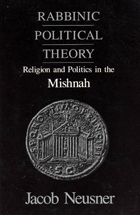 Rabbinic Political Theory: Religion and Politics in the Mishnah
Jacob Neusner
University of Chicago Press, 1991 In The Economics of the Mishnah Jacob Neusner showed how economics functioned as an active and generative ingredient in the system of the Mishnah. With this new study, Rabbinic Political Theory, he moves from the economics to the politics of the Mishnah, placing that politics in the broader context of ancient political theory.
Neusner begins his study with a modification of Weber's categories for a theory of politics: myth, institutions, administration, passion, responsibility, and proportion. Detailing the Mishnah's conception of politics, Neusner considers what he calls the stable and static structure and system through comparison with Aristotle. Although Aristotle's Politics and the Mishnah share a common economic theory based on the fundamental unit of the householder, they diverge in their conceptions of political structure and order. Aristotle embeds economics within political economy, while, Neusner argues, the Mishnah presents the anomaly of an economics separated from politics.
Using modern political terms, this study explicates the complicated politics developed by the philosopher-theologians of the Mishnah. It is a first-rate contribution to our understanding of the intersection of politics, political philosophy, and the Mishnaic system.
Rabbi's Manual
David Polish
Central Conference of American Rabbis, 1988 Written in contemporary, gender-inclusive language, the Rabbi's Manual contains traditional and innovative services and ceremonies for birth and infancy, adoption, public and private naming ceremonies, an 8th day covenant service for daughters, four wedding services and associated public prayers, a ritual release at divorce, services at death and memorials, prayers at a time of illness and Giyur (conversion) services and prayers.
 The Rabbit Between Us
Victor Menza
Seagull Books, 2021 One morning as they parted, Victor Menza’s daughter handed him a bunny postcard. This gift made him wonder why rabbits had been their symbol of visitation: “How did this kind of creature become such a powerful way of feeling your presence?”
Through philosophy, history, education, art, and personal musing on everyday uncanny experiences, Menza reveals why people have long found rabbits our special kin and emblems of love. Menza considers human nature and how we are undone by separation—both from each other and from our childhood selves. Surprising allies in these non-traditional philosophical wanderings include Ludwig Wittgenstein, Elizabeth Bowen, Albert Murray, Beatrix Potter, Donald Winnicott, Sterling Stuckey, and Lev Vygotsky.
Menza examines what symbols are and how they work, the value of dialect, and the subversive lesson of animal fables, alongside his thoughts on language learning, memory, and slavery. Only now did he see that he’d taken to Brer Rabbit early on. Just as the Uncle Remus tales displayed the small hero’s virtues in warm dialogues, The Rabbit Between Us shows we abound in talents and moves when we “lean like Socrates did to the Aesop in us.” Gentle and political at once, this unique book will appeal to any intellectually curious reader.
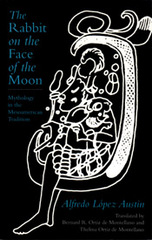 The Rabbit on the Face of the Moon: Mythology in the Mesoamerican Tradition
Alfredo Lopez Austin
University of Utah Press, 1996 Eighteen essays provide an accessible, entertaining look into a system of millennia-old legends and beliefs. Mythology is one of the great creations of humankind. It forms the core of sacred books and reflects the deepest preoccupations of human beings, their most intimate secrets, their glories, and their infamies. In 1990, Alfredo López Austin, one of the foremost scholars of ancient Mesoamerican thought, began a series of essays about mythology in the Mesoamerican tradition, published in México Indígena. Although his articles were written for general readers, they were also intended to engage specialists. They span a divers subject matter: myths and names, eclipses, stars, left and right, Méxican origins, Aztec incantations, animals, and the incorporation of Christian elements into the living mythologies of Mexico. The title essay relates the Mesoamerican myth explaining why there is a rabbit o the moon’s face to a Buddhist image and suggests the importance of the profound mythical concepts presented by each image. The eighteen essays in this volume are unified by their basis in Mesoamerican tradition and provide an accessible, entertaining look into a system of millennia-old legends and beliefs.
The Rabbits Could Sing: Poems
Amber Flora Thomas
University of Alaska Press, 2012 The poems included in The Rabbits Could Sing delve farther into territory that Amber Flora Thomas visited in her prize-winning book Eye of Water, showing even more clearly how “the seam has been pulled so far open on the past” that “the dress will never close.” Here, the poem acts not as a body in itself but as a garb drawn around the here and now. Loss, longing, and violation are sustenance to a spirit jarred from its animal flesh and torn apart, unsettling the reader with surprising images that are difficult to forget. The poems in The Rabbits Could Sing invite the reader into a world thick with the lush bounty of summer in the far north, where the present is never far from the shadow of the past.
Rabbits with Horns and Other Astounding Viruses
Carl Zimmer
University of Chicago Press, 2011 Viruses are the smallest living things known to science, yet they hold the entire planet in their sway. Rabbits with Horns and Other Astounding Viruses explores the bizarre places viruses dwell, and considers the often unexpected ways they influence our world. From agricultural production and crystal caves to rabbits with horns and cervical cancer, viruses are behind many of the wonders—some fascinating, some frightening—of the natural world, as well as some of our greatest medical challenges. Through his engaging considerations of the tobacco mosaic virus, viruses in ocean algae, and the human papillomavirus, award-winning science writer Carl Zimmer brings us up to speed on the nuances and depth of today's cutting-edge scientific research on virology.
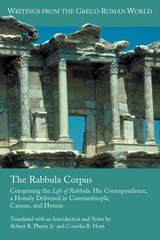 The Rabbula Corpus: Comprising the Life of Rabbula, His Correspondence, a Homily Delivered in Constan
Robert R. Phenix Jr.
SBL Press, 2017 A significant new study of Rabbula and Christianity in Edessa
This volume makes available for the first time both the Syriac text and an English translation of every available original composition by Rabbula, the controversial bishop of Edessa (ca. 411–435 CE). It includes a new edition of the Life of Rabbula and other biographical traditions about him, including his conversion from paganism to Christianity. The texts collected in the volume are a valuable source for studying the reception history of biblical themes. In addition, the corpus offers insights into the beginnings of ecclesiastical legislation in the East, charitable work, pilgrimage, ascetic ideals, and church administration. Horn and Phenix examine Rabbula’s contribution to the Christological controversies of the fifth and sixth centuries, including his influence on Cyril of Alexandria in his debate with Theodoret of Cyrrhus and Theodore of Mopsuestia.
Features
- A critical study of the theological, cultural, and historical development of Syriac Christianity
- Thorough historical, theological, and socio-cultural analysis provided for each text
- A previously unidentified Christian Palestinian Aramaic fragment
Rabelais in English Literature
Huntington Brown
Harvard University Press Traces those motives and modes of expression in English literature from the Elizabethans through the great masters of the eighteenth century which have been inspired or affected by the example of Gargantua and Pantagruel. The material presented is sure to interest both the student of the French Renaissance, as a notable memorial of the vitality of its greatest genius, and the student of English literature, as the makings of a tradition which is clearly in the ascendant today. Appendices include extracts from certain imitators and critics not readily accessible outside large libraries.
Rabi, Scientist and Citizen: With a New Preface
John S. Rigden
Harvard University Press, 2000 This is a welcome reissue, with a new Preface, of John S. Rigden’s stellar biography of I. I. Rabi, one of the most influential physicists of the twentieth century. Rabi’s discovery of the magnetic resonance method won him the Nobel Prize in 1944 and stimulated research leading to, among other things, refinements in quantum electrodynamics, refined molecular beam methods, radio astronomy with the hydrogen 21-cm line, atomic clocks, and solid state masers.
 Rabinal Achi: A Fifteenth-Century Maya Dynastic Drama
Alain Breton
University Press of Colorado, 2007 The Rabinal Achi, one of the most remarkable works of Mayan literature, dates back to the 1400s. In 2005, UNESCO declared Rabinal Achi to be a Masterpiece of the Oral and Intangible Heritage of Humanity. This drama is still performed with a ritual dance in the village of Rabinal (Baja Verapaz).
The drama is set in the Guatemalan highlands in the second half of the fifteenth century. In an exemplary trial that takes place in Kajyub, the capital of the Rabinaleb at that time, a captured enemy warrior (Quiché Achi) appears before the royal court. A series of combative dialogues pits the offending warrior against the local warrior (Rabinal Achi) and the king (Job Toj), reconstructing the deeds of those involved and retracing the antagonistic history of these two Mayan groups, the Quiché and the Rabinaleb.
Alain Breton approaches the text from an anthropological and ethnographical perspective, demonstrating that this indigenous text reenacts pre-Columbian historic paradigms. Breton's work is based on the Pérez Manuscript (1913), a facsimile of which is included in its entirety. Breton translated into French an entirely new transcription of the original text, and Teresa Lavender Fagan and Robert Schneider translated the text into English. Both the transcription and the translation are accompanied by detailed commentary and a glossary.
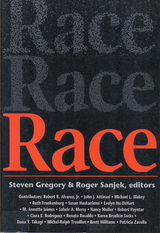 Race
Gregory, Steven
Rutgers University Press, 1994 “What unites these essays is a common focus on the ‘social construction’ of racial categories and a desire to expose the exercise of racism and its intersection with other forms of social domination such as class, gender, and ethnicity . . . Fascinating.”––Multicultural Review “The coming together of theoretical, multiethnic, and ‘on-the-ground’ perspectives makes this book a particularly valuable contribution to the discourse on race.”––Paula Giddings “Timely and thoughtful. . . contributes to our understanding of how race operates as a social process and in the contextualization of power and status.”––Contemporary Sociology “A treasure chest full of gems. Virtually every article is fascinating and important, and as a collection, its impact is tremendous. Neo-conservative myths and fantasies fall like nine-pins before its well-researched and tightly argued papers.”––Martin Bernal, author of Black Athena “A timely antidote to that reaction tome, The Bell Curve.”––Daily News (New York) “Let’s be clear from the start what this book is about,” writes Roger Sanjek. “Race is the framework of ranked categories, segmenting the human population, that was developed by Western Europeans following their global expansion.”To contemporary social scientists, this ranking is baseless, though it has had all-too-real effects.
Drawing on anthropology, history, sociology, ethnic studies, and women's studies, this volume explores the role of race in a variety of cultural and historical contexts. The contributors show how racial ideologies intersect with gender, class, nation and sexuality in the formation of complex social identities and hierarchies. The essays address such topics as race and Egyptian nationalism, the construction of “whiteness” in the United States, and the transformation of racial categories in post-colonial Haiti. They demonstrate how social elites and members of subordinated groups construct and rework racial meanings and identities within the context of global political, economic, and cultural change. Race provides a comprehensive and empirically grounded survey of contemporary theoretical approaches to studying the complex interplay of race, power, and identity.
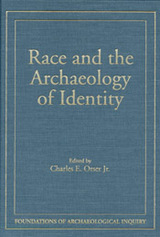 Race & Archaeology Of Identity
Charles Orser Jr
University of Utah Press, 2002 Race is not a subject most people associate with archaeological research. Yet because of archaeologists’ interest in long time-spans they are perfectly positioned to investigate the “naturalness” of racial designations through time. Race and the Archaeology of Identity brings together twelve of America’s most perceptive and talented historical archaeologists. Their focus is on the recent archaeological record—stretching geographically from Jamaica to northern Michigan; their time frame is from colonial days to the late nineteenth century; and their subjects range from frontier fur traders to Victorian city dwellers. Using textual and archaeological sources, contributors explore such topics as the connections of race to economics, the creation and maintenance of institutionalized poverty, the role of race in structuring and guiding intercultural connections, and the importance of race in creating and defining space. Contributors explore such topics as the connections of race to economics, the role of race in structuring and guiding intercultural connections, and the importance of race in creating and defining space.
RACE & THE CITY: Work, Community, and Protest in Cincinnati, 1820-1970
Edited by Henry Louis Taylor, Jr.
University of Illinois Press, 1993 "Provides a rich prism through which to explore the social, economic, and political development
of black Cincinnati. These studies offer insight into both the dynamics of racism and a
community's changing responses to it." -- Peter Rachleff, author of Black Labor in
Richmond
Race against Liberalism: Black Workers and the UAW in Detroit
David M. Lewis-Colman
University of Illinois Press, 2007 Race against Liberalism examines how black worker activism in Detroit shaped the racial politics of the labor movement and the white working class. David M. Lewis-Colman traces the substantive, long-standing disagreements between liberals and the black workers who embraced autonomous race-based action. As he shows, black autoworkers placed themselves at the center of Detroit's working-class politics and sought to forge a kind of working class unity that accommodated their interests as African Americans. The book covers the independent caucuses in the 1940s and the Trade Union Leadership Council in the 1950s; the black power movement and Revolutionary Union Movements of the mid-1960s; and the independent race-based activism of the 1970s that resulted in Coleman Young's 1973 election as the city's first black mayor.
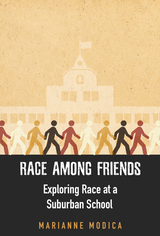 Race among Friends: Exploring Race at a Suburban School
Modica, Marianne
Rutgers University Press, 2015 Many saw the 2008 election of Barack Obama as a sign that America had moved past the issue of race, that a colorblind society was finally within reach. But as Marianne Modica reveals in Race Among Friends, attempts to be colorblind do not end racism—in fact, ignoring race increases the likelihood that racism will occur in our schools and in society.
This intriguing volume focuses on a “racially friendly” suburban charter school called Excellence Academy, highlighting the ways that students and teachers think about race and act out racial identity. Modica finds that even in an environment where students of all racial backgrounds work and play together harmoniously, race affects the daily experiences of students and teachers in profound but unexamined ways. Some teachers, she notes, feared that talking about race in the classroom would open them to charges of racism, so they avoided the topic. And rather than generate honest and constructive conversations about race, student friendships opened the door for insensitive racial comments by whites, resentment and silence by blacks, and racially biased administrative practices. In the end, the school’s friendly environment did not promote—and may have hindered—serious discussion of race and racial inequity.
The desire to ignore race in favor of a “colorblind society,” Modica writes, has become an entrenched part of American culture. But as Race Among Friends shows, when race becomes a taboo subject, it has serious ramifications for students and teachers of all ethnic origins.
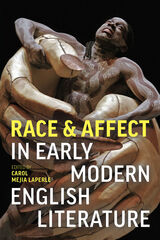 Race and Affect in Early Modern English Literature
Carole Mejia LaPerle
Arizona Center for Medieval and Renaissance Studies, 2021 This collection brings together critical race studies and affect theory to examine the emotional dimensions of race in early modern literature.
Race and Affect in Early Modern English Literature puts the fields of critical race studies and affect theory into dialogue. Doing so opens a new set of questions: What are the emotional experiences of racial formation and racist ideologies? How do feelings—through the physical senses, emotional passions, or sexual encounters—come to signify race? What is the affective register of anti-blackness that pervades canonical literature? How can these visceral forms of racism be resisted in discourse and in practice? By investigating how race feels, this book offers new ways of reading and interpreting literary traditions, religious differences, gendered experiences, class hierarchies, sexuality, and social identities. So far scholars have shaped the discussion of race in the early modern period by focusing on topics such as genealogy, language, economics, religion, skin color, and ethnicity. This book, however, offers something new: it considers racializing processes as visceral, affective experiences.
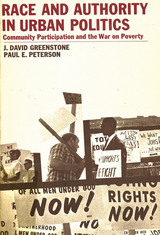 Race and Authority in Urban Politics
David J. Greenstone
Russell Sage Foundation, 1974 What really happened when citizens were asked to participate in their community’s poverty programs? In this revealing new book, the authors provide an answer to this question through a systematic empirical analysis of a single public policy issue—citizen participation in the Community Action Program of the Johnson Administration’s “War on Poverty.” Beginning with a brief case study description and analysis of the politics of community action in each of America’s five largest cities—New York, Chicago, Los Angeles, Detroit, and Philadelphia—the authors move on to a fascinating examination of race and authority structures in our urban life. In a series of lively chapters, Professors Greenstone and Peterson show how the coalitions that formed around the community action question developed not out of electoral or organizational interests alone, but were strongly influenced by our conceptions of the nature of authority in America. They discuss the factors that affected the development of the action program and they note that democratic elections of low-income representatives, however much preferred by democratic reformers, were an ineffective way of representing the interests of the poor. The book stresses the way in which both machine and reform structures affected the ability of minority groups to organize effectively and to form alliances in urban politics. It considers the wide-ranging critiques made of the Community Action Program by conservative, liberal, and radical analysts and finds that all of them fail to appreciate the significance and intensity of the racial cleavage in American politics.
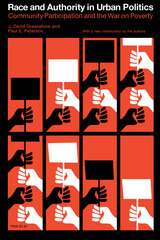 Race and Authority in Urban Politics: Community Relations and the War on Poverty
David Greenstone and Paul E. Peterson
University of Chicago Press, 1976 In this penetrating book, the authors provide a systematic empirical analysis of an important public policy issue—citizen participation in the Community Action Program of the Johnson administration's "War on Poverty." This Phoenix edition includes a new introduction in which the authors explicate the most important themes in their analysis.
In a series of lively chapters, Greenstone and Peterson show how the coalitions that formed around the community action question developed not out of electoral or organizational interests alone but were strongly influenced by prevailing conceptions of the nature of authority in America. The book stresses the way in which both machine and reform structures affected the ability of minority groups to organize effectively and to form alliances in urban politics. It considers the wide-ranging critiques made of the Community Action Program by conservative, liberal, and radical analysts and finds that all of them fail to appreciate the significance and intensity of the racial cleavage in American politics.
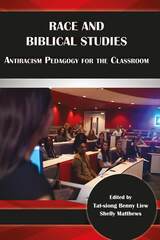 Race and Biblical Studies: Antiracism Pedagogy for the Classroom
Tat-siong Benny Liew
SBL Press, 2022 Classrooms as communities are temporary, but the racial effects can be long term.
The biblical studies classroom can be a site of personal and social transformation. To make it a space for positive change, the contributors to this volume question and reevaluate traditional teaching practices and assessment tools that foreground white, Western scholarship in order to offer practical guidance for an antiracist pedagogy. The introduction and fifteen essays provide tools for engaging issues of social context and scriptural authority, nationalism and religious identities, critical race theory, and how race, gender, and class can be addressed empathetically. Contributors Sonja Anderson, Randall C. Bailey, Eric D. Barreto, Denise Kimber Buell, Greg Carey, Haley Gabrielle, Wilda C. Gafney, Julián Andrés González Holguín, Sharon Jacob, Tat-siong Benny Liew, Francisco Lozada Jr., Shelly Matthews, Roger S. Nam, Wongi Park, Jean-Pierre Ruiz, Abraham Smith, and Kay Higuera Smith share their experience creating classrooms that are spaces that enable the production of new knowledge without reproducing a white subject of the geopolitical West.
Race and Class in the Southwest: A Theory of Racial Inequality
Mario Barrera
University of Notre Dame Press, 1989 Focusing on the economic foundations of inequality as they have affected Chicanos in the Southwest from the Mexican-American War to the present, Mario Barrera develops his theory as a synthesis of class and colonial analyses.
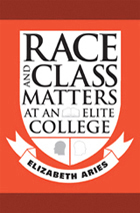 Race and Class Matters at an Elite College
Elizabeth Aries
Temple University Press, 2008 In Race and Class Matters at an Elite College, Elizabeth Aries provides a rare glimpse into the challenges faced by black and white college students from widely different class backgrounds as they come to live together as freshmen. Based on an intensive study Aries conducted with 58 students at Amherst College during the 2005-2006 academic year, this book offers a uniquely personal look at the day-to-day thoughts and feelings of students as they experience racial and economic diversity firsthand, some for the first time. Through online questionnaires and face-to-face interviews, Aries followed four groups of students throughout their first year of college: affluent whites, affluent blacks, less financially advantaged whites from families with more limited education, and less financially advantaged blacks from the same background. Drawing heavily on the voices of these freshmen, Aries chronicles what they learned from racial and class diversity—and what colleges might do to help their students learn more.
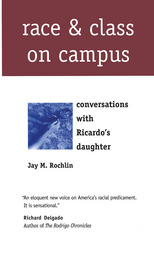 Race and Class on Campus: Conversations with Ricardo’s Daughter
Jay M. Rochlin
University of Arizona Press, 1997 Racism. Is it alive and well and living on college campuses across the United States? Is it a factor in high dropout rates and other crises affecting minority college students, and if so, how? Are controversial programs of affirmative action proving to be a solution--or are they part of the problem?
Here are some insights into the hot issues sparking debate over equal opportunity and American education. In these pages, through the use of a fictional character, author Jay Rochlin presents more than forty very real African American and Mexican American men and women who struggled to earn degrees at a large, nationally recognized university in the west. Their goals, their gains, and their disappointments echo the experiences of millions of others around the country during much of the twentieth century. Perhaps most important, their true stories will provide inspiration to the many young people who wonder whether pursuing the dream of a college education is possible for them.
Readers will warm to the words of Carlos Vélez-Ibáñez, learning as a toddler from his father that the university represented toda la sabiduría del mundo,"all the wisdom in the world." Their hearts will go out to young Laura Banks, barred as a black woman from a "whites only" pool and the swimming class required for her degree in physical education. In the face of open hostility and closed doors, these students and many others persevered. When they were shunned by Anglo social clubs, they created their own. When they were assigned "back of the room" seating because of discrimination, they rose above it. And when their ultimate goal--graduation--was threatened by racism, they fought it.
Looking back, many in the book remember coming from poor families who nonetheless considered themselves middle class and, as such, simply expected their children to go to college. This family support--bolstered by the students' own drive, ambition, and sense of responsibility--seemed to be pivotal to their success. Thus the book comes out strongly on the side of critical race theorists, who emphasize individual effort as a means of combating racism and personal narratives as a way of analyzing the complex issue.
These pages are filled with the voices of everyday men and women. Their language is straightforward and from the heart. Their message is timely, in the midst of current debates over race, class, and affirmative action. And their words--for American education and for the country as a whole--carry force and meaning guaranteed to reach far into the future.
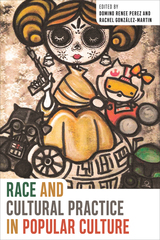 Race and Cultural Practice in Popular Culture
Perez, Domino
Rutgers University Press, 2019 Race and Cultural Practice in Popular Culture is an innovative work that freshly approaches the concept of race as a social factor made concrete in popular forms, such as film, television, and music. The essays collectively push past the reaffirmation of static conceptions of identity, authenticity, or conventional interpretations of stereotypes and bridge the intertextual gap between theories of community enactment and cultural representation. The book also draws together and melds otherwise isolated academic theories and methodologies in order to focus on race as an ideological reality and a process that continues to impact lives despite allegations that we live in a post-racial America. The collection is separated into three parts: Visualizing Race (Representational Media), Sounding Race (Soundscape), and Racialization in Place (Theory), each of which considers visual, audio, and geographic sites of racial representations respectively.
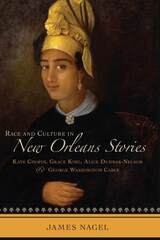 Race and Culture in New Orleans Stories: Kate Chopin, Grace King, Alice Dunbar-Nelson, and George Washington Cable
James Nagel
University of Alabama Press, 2013 Race and Culture in New Orleans Storiesposits that the Crescent City and the surrounding Louisiana bayous were a logical setting for the literary exploration of crucial social problems in America.
Race and Culture in New Orleans Stories is a study of four volumes of interrelated short stories set in New Orleans and the surrounding Louisiana bayous: Kate Chopin’s Bayou Folk; George Washington Cable’s Old Creole Days; Grace King’s Balcony Stories; and Alice Dunbar-Nelson’s The Goodness of St. Rocque and Other Stories. James Nagel argues that the conflicts and themes in these stories cannot be understood without a knowledge of the unique historical context of the founding of Louisiana, its four decades of rule by the Spanish, the Louisiana Purchase and the resulting cultural transformations across the region, Napoleonic law, the Code Noir, the plaçage tradition, the immigration of various ethnic and natural groups into the city, and the effects of the Civil War and Reconstruction. All of these historical factors energize and enrich the fiction of this important region.
The literary context of these volumes is also central to understanding their place in literary history. They are short-story cycles—collections of short fiction that contain unifying settings, recurring characters or character types, and central themes and motifs. They are also examples of the “local color” tradition in fiction, a movement that has been much misunderstood. Nagel maintains that regional literature was meant to be the highest form of American writing, not the lowest, and its objective was to capture the locations, folkways, values, dialects, conflicts, and ways of life in the various regions of the country in order to show that the lives of common citizens were sufficiently important to be the subject of serious literature.
Finally, Nagel shows that New Orleans provided a profoundly rich and complex setting for the literary exploration of some of the most crucial social problems in America, including racial stratification, social caste, economic exploitation, and gender roles, all of which were undergoing rapid transformation at the end of the nineteenth century and the beginning of the twentieth.
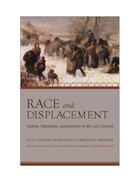 Race and Displacement: Nation, Migration, and Identity in the Twenty-First Century
Edited by Maha Marouan and Merinda Simmons
University of Alabama Press, 2013 Race and Displacement captures a timely set of discussions about the roles of race in displacement, forced migrations, nation and nationhood, and the way continuous movements of people challenge fixed racial definitions. The multifaceted approach of the essays in Race and Displacement allows for nuanced discussions of race and displacement in expansive ways, exploring those issues in transnational and global terms. The contributors not only raise questions about race and displacement as signifying tropes and lived experiences; they also offer compelling approaches to conversations about race, displacement, and migration both inside and outside the academy. Taken together, these essays become a case study in dialogues across disciplines, providing insight from scholars in diaspora studies, postcolonial studies, literary theory, race theory, gender studies, and migration studies. The contributors to this volume use a variety of analytical and disciplinary methodologies to track multiple articulations of how race is encountered and defined. The book is divided by editors Maha Marouan and Merinda Simmons into four sections: “Race and Nation” considers the relationships between race and corporality in transnational histories of migration using literary and oral narratives. Essays in “Race and Place” explore the ways spatial mobility in the twentieth century influences and transforms notions of racial and cultural identity. Essays in “Race and Nationality” address race and its configuration in national policy, such as racial labeling, federal regulations, and immigration law. In the last section, “Race and the Imagination” contributors explore the role imaginative projections play in shaping understandings of race. Together, these essays tackle the question of how we might productively engage race and place in new sociopolitical contexts. Tracing the roles of "race" from the corporeal and material to the imaginative, the essays chart new ways that concepts of origin, region, migration, displacement, and diasporic memory create understandings of race in literature, social performance, and national policy. Contributors: Regina N. Barnett, Walter Bosse, Ashon T. Crawley, Matthew Dischinger, Melanie Fritsh, Jonathan Glover, Delia Hagen, Deborah Katz, Kathrin Kottemann, Abigail G.H. Manzella, Yumi Pak, Cassander L. Smith, Lauren Vedal
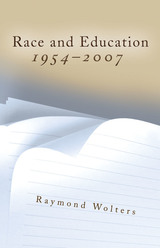 Race and Education, 1954-2007
Raymond Wolters
University of Missouri Press, 2008
With the Supreme Court’s landmark Brown decisions of 1954 and 1955, American education changed forever. But Brown was just the beginning, and Raymond Wolters contends that its best intentions have been taken to unnecessary extremes.
In this compelling study, a scholar who has long observed the traumas of school desegregation uncovers the changes and difficulties with which public education has dealt over the last fifty years—and argues that some judicial decisions were ill-advised. Dealing candidly with matters usually considered taboo in academic discourse, Wolters argues that the Supreme Court acted correctly and in accordance with public sentiment in Brown but that it later took a wrong turn by equating desegregation with integration.
Retracing the history of desegregation and integration in America’s schools, Wolters distinguishes between several Court decisions, explaining that while Brown called for desegregation by requiring that schools deal with students on a racially nondiscriminatory basis, subsequent decisions— Green, Swann, Keyes—required actual integration through racial balancing. He places these decisions in the context of educational reform in the 1950s that sought to encourage bright students through advanced placement and honors courses—courses in which African American and Hispanic students were less likely to be enrolled. Then with the racial unrest of the 1960s, the pursuit of academic excellence yielded to concerns for uplifting disadvantaged youths and ensuring the predominance of middle-class peer groups in schools.
Wolters draws on rich historical records to document the devastating consequences of requiring racial balance and sheds new light on America’s legal, social, and cultural landscapes. He reexamines the educational theories of Kenneth Clark and James Coleman, and he challenges statistics that support the results of racial balancing by describing how school desegregation and integration actually proceeded in several towns, cities, and counties.
Race and Education is a bold challenge to political correctness in education and a corrective to the now widely accepted notion that desegregation and racially balanced integration are one and the same. It is essential reading for scholars of law and education and a wake-up call for citizens concerned about the future of America’s schools.
Race and Environmental Justice in the Era of Climate Change and COVID-19
Tatiana Konrad
Michigan State University Press, 2025 Informed by transdisciplinary research in social and environmental justice, Race and Environmental Justice in the Era of Climate Change and COVID-19 is a contribution to the scholarly discourse as well as a form of activism for environmental, climate, and health justice. Using race and Indigeneity as an analytical lens, the book explores how justice in the era of climate change and COVID-19 is envisioned, depicted, and achieved. With a focus largely on humans and environments, its explorations of (in)justice illustrate the wide health and safety gaps between individuals, communities, and even nations living under different environmental conditions. The volume also moves beyond the human toward justice for all beings. This book foregrounds voices from world communities, provides solutions to environmental and health crises, and advances environmental justice.
 Race and Erudition
Maurice Olender
Harvard University Press, 2009 Nineteenth-century theories of race were meant to provide a comprehensive account of the history and evolution of civilizations. What they produced instead were the modern foundations for prejudice and its politics. In this enlightening book, with a new preface and postscript for the Anglophone audience, Maurice Olender investigates the unsuspected links between erudition and race, showing the affinities between the social sciences and the concept of “race.”
Beginning with a brilliant study of the Protocols of Zion, the book turns to Indo-European origins of language, culture, and human “types” and moves on to studying some of the more important figures in the twentieth century, such as Eliade, Dumézil, and Momigliano. Olender elegantly teases out the cultural history of the word “race,” a history that explains its diverse political uses and its continuing relevance to our global contemporary society. In doing so, he provides an accessible and lucid pathway through the labyrinth of race and erudition and examines how to deal with diversity without the problematic heritage of racial stereotypes.
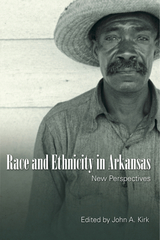 Race and Ethnicity in Arkansas: New Perspectives
John A. Kirk
University of Arkansas Press, 2014 Race and Ethnicity in Arkansas brings together the work of leading experts to cast a powerful light on the rich and diverse history of Arkansas’s racial and ethic relations. The essays span from slavery to the civil rights era and cover a diverse range of topics including the frontier experience of slavery; the African American experience of emancipation and after; African American migration patterns; the rise of sundown towns; white violence and its continuing legacy; women’s activism and home demon¬stration agents; African American religious figures from the better know Elias Camp (E. C.) Morris to the lesser-known Richard Nathaniel Hogan; the Mexican-American Bracero program; Latina/o and Asian American refugee experiences; and contemporary views of Latina/o immigration in Arkansas. Informing debates about race and ethnicity in Arkansas, the South, and the nation, the book provides both a primer to the history of race and ethnicity in Arkansas and a prospective map for better understanding racial and ethnic relations in the United States.
Race and Ethnicity in Latin America
Peter Wade
Pluto Press, 2010 For over ten years, Race and Ethnicity in Latin America has been an essential text for students studying the region. This second edition adds new material and brings the analysis up to date.
Race and ethnic identities are increasingly salient in Latin America. Peter Wade examines changing perspectives on Black and Indian populations in the region, tracing similarities and differences in the way these peoples have been seen by academics and national elites. Race and ethnicity as analytical concepts are re-examined in order to assess their usefulness.
This book should be the first port of call for anthropologists and sociologists studying identity in Latin America.
Race and Ethnicity in the Middle Ages, Volume 31
Thomas Hahn, ed.
Duke University Press This special issue brings together some of the most dynamic current scholarship addressing race and ethnicity in the medieval and early modern periods. The contents include:
"The Difference the Middle Ages Makes: Color and Race before the Modern World" by Thomas Hahn
"Medieval and Modern Concepts of Race and Ethnicity" by Robert Bartlett
"Black Servant, Black Demon: Color Ideology in the Ashburnham Pentateuch" by Dorothy Hoogland Verkerk
"Pagans are wrong and Christians are right: Alterity, Gender, and Nation in the Chanson de Roland" by Sharon Kinoshita
"On Saracen Enjoyment: Some Fantasies of Race in Late Medieval France and England" by Jeffrey Jerome Cohen
"Medieval Travel Writing and the Question of Race" by Linda Lomperis
"Why ‘Race’?" by William Chester Jordan
 Race And Excellence: Dialogue With Chester Pierce
Ezra E.H. Griffith
University of Iowa Press, 1998
Chester Pierce was born in 1927; by 1952 he was a graduate of the Harvard Medical School. He went on to become president of the American Board of Psychiatry and Neurology and president of the American Orthopsychiatric Association. He was elected to the Institute of Medicine at the National Academy of Sciences and had an annual research seminar named after him by the National Medical Association.
Founding chair of the Black Psychiatrists of America, Pierce has profoundly affected American psychiatry and the thinking of African American psychiatrists during the last two decades. While recognized for his substantive scholarship on coping with extreme environments such as the South Pole, he is probably best known for his theories regarding how blacks cope with racism in the United States.
In Race and Excellence, Ezra Griffith, also an African American professor of psychiatry, engages Pierce in a dialogue with the goal of clarifying the inter-connection between the personal and the professional in the lives of both black scholars. The text melds the story of Pierce's life and his achievements, with particular attention to his theories about the predictable nature of racist behavior and the responses of oppressed groups. Having earned his doctorate a generation after Pierce, Griffith approaches his conversation with Pierce as a face-to-face meeting between mentor and student. Retelling Pierce's life story ultimately becomes for Griffith an exercise in conceptualizing his own experience. As he writes, “I never just wanted to tell Chet's story; I wanted to work his story out, to measure it, to try it on, to figure out which parts are good for me and other blacks so earnestly seeking heroes.”
Race and Gender at War: Writing American Military History
Edited by Lesley J. Gordon and Andrew J. Huebner
University of Alabama Press, 2024 Fresh perspectives on the implications of gender and race in US military history from a diverse group of scholars in the field of war and society
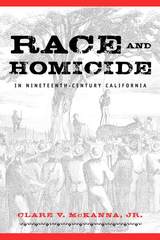 Race And Homicide In Nineteenth-Century California
Clare V. McKanna
University of Nevada Press, 2007 Nineteenth-century California was a society in turmoil, with a rapidly growing population, booming mining camps, insufficient or nonexistent law-enforcement personnel, and a large number of ethnic groups with differing attitudes toward law and personal honor. Violence, including murder, was common, and legal responses varied broadly. Available now for the first time in paperback, Race and Homicide in Nineteenth-Century California examines coroners’ inquest reports, court case files, prison registers, and other primary and printed sources to analyze patterns of homicide and the state’s embryonic justice system. Author Clare V. McKanna discovers that the nature of crimes varied with the ethnicity of perpetrators and victims, as did the conduct and results of trials and sentencing patterns. He presents specific case studies and a vivid portrait of an unruly society in flux. Enhanced with testimony from contemporary sources and illustrated with period photographs, this study richly portrays a frontier society where the law was neither omnipotent nor impartial.
Race and Human Rights
Curtis Stokes
Michigan State University Press, 2008 The terrorist attacks against U.S. targets on September 11, 2001, and the subsequent wars in Afghanistan and Iraq, sparked an intense debate about "human rights." According to contributors to this provocative book, the discussion of human rights to date has been far too narrow. They argue that any conversation about human rights in the United States must include equal rights for all residents.
Essays examine the historical and intellectual context for the modern debate about human rights, the racial implications of the war on terrorism, the intersection of racial oppression, and the national security state. Others look at the Pinkerton detective agency as a forerunner of the Federal Bureau of Investigation, the role of Africa in post–World War II American attempts at empire-building, and the role of immigration as a human rights issue.
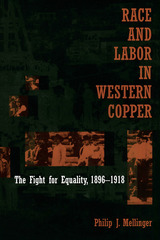 Race and Labor in Western Copper: The Fight for Equality, 1896-1918
Philip J. Mellinger
University of Arizona Press, 1995 This is the story of immigrant copper workers and their attempts to organize at the turn of the century in Arizona, New Mexico, Nevada, Utah, and El Paso, Texas. These Mexican and European laborers of widely varying backgrounds and languages had little social, economic, or political power. Yet they achieved some surprising successes in their struggles—all in the face of a racist society and the unbridled power of the mine owners.
Mellinger's book is the first regional history of these ordinary working people—miners, muckers, millhands, and smelter workers—who labored in the thousands of mountain and desert mining camps across the western heartland early in this century. These men, largely uneducated, frequently moving from camp to camp, subjected to harsh and dangerous conditions, often poorly paid, nevertheless came together for a common purpose.
They came from Mexico, from the U.S. Hispanic Southwest, and from several European countries, especially from Greece, Italy, the former Yugoslavia, and Spain. They were far from a homogeneous group. Yet, in part because they set aside ethnic differences to pursue cooperative labor action, they were able to make demands, plan strikes, carry them out, and sometimes actually win. They also won the aid of the Western Federation of Miners and the more radical Industrial Workers of the World. After initial rejection, they were eventually accepted by mainstream unionists.
Mellinger discusses towns, mines, camps, companies, and labor unions, but this book is largely about people. In order to reconstruct their mining-community lives, he has used little-known union and company records, personal interviews with old-time workers and their families, and a variety of regional sources that together have enabled him to reveal a complex and significant pattern of social, economic, and political change in the American West.
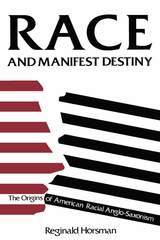 Race and Manifest Destiny: The Origins of American Racial Anglo-Saxonism
Reginald Horsman
Harvard University Press, 1981 American myths about national character tend to overshadow the historical realities. Reginald Horsman’s book is the first study to examine the origins of racialism in America and to show that the belief in white American superiority was firmly ensconced in the nation’s ideology by 1850.
The author deftly chronicles the beginnings and growth of an ideology stressing race, basic stock, and attributes in the blood. He traces how this ideology shifted from the more benign views of the Founding Fathers, which embraced ideas of progress and the spread of republican institutions for all. He finds linkages between the new, racialist ideology in America and the rising European ideas of Anglo-Saxon, Teutonic, and scientific ideologies of the early nineteenth century. Most importantly, however, Horsman demonstrates that it was the merging of the Anglo-Saxon rhetoric with the experience of Americans conquering a continent that created a racialist philosophy. Two generations before the “new” immigrants began arriving in the late nineteenth century, Americans, in contact with blacks, Indians, and Mexicans, became vociferous racialists.
In sum, even before the Civil War, Americans had decided that peoples of large parts of this continent were incapable of creating or sharing in efficient, prosperous, democratic governments, and that American Anglo-Saxons could achieve unprecedented prosperity and power by the outward thrust of their racialism and commercial penetration of other lands. The comparatively benevolent view of the Founders of the Republic had turned into the quite malevolent ideology that other peoples could not be “regenerated” through the spread of free institutions.
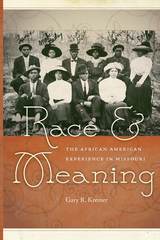 Race and Meaning: The African American Experience in Missouri
Gary R. Kremer
University of Missouri Press, 2014 No one has written more about the African American experience in Missouri over the past four decades than Gary Kremer, and now for the first time fourteen of his best articles on the subject are available in one place with the publication of Race and Meaning: The African American Experience in Missouri. By placing the articles in chronological order of historical events rather than by publication date, Kremer combines them into one detailed account that addresses issues such as the transition from slavery to freedom for African Americans in Missouri, all-black rural communities, and the lives of African Americans seeking new opportunities in Missouri’s cities.
In addition to his previously published articles, Kremer includes a personal introduction revealing how he first became interested in researching African American history and how his education at Lincoln University--and specifically the influence of his mentor, Lorenzo Greene--helped him to realize his eventual career path. Race and Meaning makes a collection of largely unheard stories spanning much of Missouri history accessible for the first time in one place, allowing each article to be read in the context of the others, and creating a whole that is much greater than the sum of its parts. Whether you are a student, researcher, or general reader, this book will be essential to anyone with an interest in Missouri history.
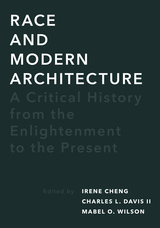 Race and Modern Architecture: A Critical History from the Enlightenment to the Present
Irene Cheng, Charles L. Davis II, & Mabel O. Wilson
University of Pittsburgh Press, 2020 Although race—a concept of human difference that establishes hierarchies of power and domination—has played a critical role in the development of modern architectural discourse and practice since the Enlightenment, its influence on the discipline remains largely underexplored. This volume offers a welcome and long-awaited intervention for the field by shining a spotlight on constructions of race and their impact on architecture and theory in Europe and North America and across various global contexts since the eighteenth century. Challenging us to write race back into architectural history, contributors confront how racial thinking has intimately shaped some of the key concepts of modern architecture and culture over time, including freedom, revolution, character, national and indigenous style, progress, hybridity, climate, representation, and radicalism. By analyzing how architecture has intersected with histories of slavery, colonialism, and inequality—from eighteenth-century neoclassical governmental buildings to present-day housing projects for immigrants—Race and Modern Architecture challenges, complicates, and revises the standard association of modern architecture with a universal project of emancipation and progress.
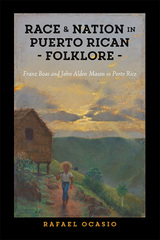 Race and Nation in Puerto Rican Folklore: Franz Boas and John Alden Mason in Porto Rico
Rafael Ocasio
Rutgers University Press, 2020 Race and Nation in Puerto Rican Folklore: Franz Boas and John Alden Mason in Porto Rico explores the historic research trip taken to Puerto Rico in 1915. As a component of the Scientific Survey of Porto Rico and the Virgin Islands, Boas intended to perform field research in the areas of anthropology and ethnography while other scientists explored the island’s natural resources. A young anthropologist working under Boas, John Alden Mason, rescued hundreds of oral folklore samples, ranging from popular songs, poetry, conundrums, sayings, and, most particularly, folktales while documenting native Puerto Rican cultural practices. Through his extensive excursions, Mason came in touch with the rural lives of Puerto Rican peasants, the jíbaros, who served as both his cultural informants and writers of the folklore samples. These stories, many of which are still part of the island’s literary traditions and collected in a bilingual companion volume by Rafael Ocasio, reflect a strong Puerto Rican identity coalescing in the face of the U.S. political intervention on the island. A fascinating slice of Puerto Rican history and culture sure to delight any reader!
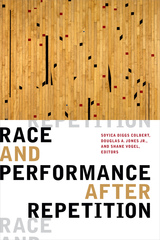 Race and Performance after Repetition
Soyica Diggs Colbert, Douglas A. Jones Jr., and Shane Vogel, editors
Duke University Press, 2020 The contributors to Race and Performance after Repetition explore how theater and performance studies account for the complex relationship between race and time. Pointing out that repetition has been the primary point of reference for understanding both the complex temporality of theater and the historical persistence of race, they identify and pursue critical alternatives to the conceptualization, organization, measurement, and politics of race in performance. The contributors examine theater, performance art, music, sports, dance, photography, and other forms of performance in topics that range from the movement of boxer Joe Louis to George C. Wolfe's 2016 reimagining of the 1921 all-black musical comedy Shuffle Along to the relationship between dance, mourning, and black adolescence in Flying Lotus's music video “Never Catch Me.” Proposing a spectrum of coexisting racial temporalities that are not tethered to repetition, this collection reconsiders central theories in performance studies in order to find new understandings of race.
Contributors. Joshua Chambers-Letson, Soyica Diggs Colbert, Nicholas Fesette, Patricia Herrera, Jasmine Elizabeth Johnson, Douglas A. Jones Jr., Mario LaMothe, Daphne P. Lei, Jisha Menon, Tavia Nyong’o, Tina Post, Elizabeth W. Son, Shane Vogel, Catherine M. Young, Katherine Zien
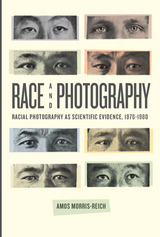 Race and Photography: Racial Photography as Scientific Evidence, 1876-1980
Amos Morris-Reich
University of Chicago Press, 2015 Race and Photography studies the changing function of photography from the 1870s to the 1940s within the field of the “science of race,” what many today consider the paradigm of pseudo-science. Amos Morris-Reich looks at the ways photography enabled not just new forms of documentation but new forms of perception. Foregoing the political lens through which we usually look back at race science, he holds it up instead within the light of the history of science, using it to explore how science is defined; how evidence is produced, used, and interpreted; and how science shapes the imagination and vice versa.
Exploring the development of racial photography wherever it took place, including countries like France and England, Morris-Reich pays special attention to the German and Jewish contexts of scientific racism. Through careful reconstruction of individual cases, conceptual genealogies, and patterns of practice, he compares the intended roles of photography with its actual use in scientific argumentation. He examines the diverse ways it was used to establish racial ideologies—as illustrations of types, statistical data, or as self-evident record of racial signs. Altogether, Morris-Reich visits this troubling history to outline important truths about the roles of visual argumentation, imagination, perception, aesthetics, epistemology, and ideology within scientific study.
Race and Place: School Desegregation in Prince George's County, Maryland
Deirdre Mayer Dougherty
Rutgers University Press, 2025 Race and Place considers the everyday experiences of community members throughout the process of school desegregation and how race, place, and truth came to matter in this process in Prince George’s County, Maryland, from 1945 through 1973. The book is organized around several successive policies that emerged in this time: school equalization, school choice, neighborhood schools, school construction, school closure, busing for racial integration, and school discipline. Dougherty shows how these policies contained and reinforced assumptions about place and created new racial truths about people and schooling.
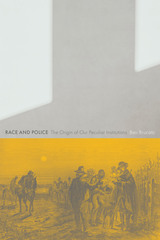 Race and Police: The Origin of Our Peculiar Institutions
Ben Brucato
Rutgers University Press, 2024 In the United States, race and police were founded along with a capitalist economy dependent on the enslavement of workers of African descent. Race and Police builds a critical theory of American policing by analyzing a heterodox history of policing, drawn from the historiography of slavery and slave patrols. Beginning by tracing the historical origins of the police mandate in British colonial America, the book shows that the peculiar institution of racialized chattel slavery originated along with a novel, binary conception of race. On one side, for the first time Europeans from various nationalities were united in a single racial category. Inclusion in this category was necessary for citizenship. On the other, Blacks were branded as slaves, cast as social enemies, and assumed to be threats to the social order. The state determined not only that it would administer slavery, but that it would regulate slaves, authorizing the use of violence by agents of the state and white citizens to secure the social order. In doing so, slavery, citizenship, and police mutually informed one another, and together they produced racial capitalism, a working class defined and separated by the color line, and a racial social order.
Race and Police corrects the Eurocentrism in the orthodox history of American police and in predominating critical theories of police. That orthodoxy rests on an origin story that begins with Sir Robert Peel and the London Metropolitan Police Service. Predating the Met by more than a century, America’s first police, often called slave patrols, did more than maintain order—it fabricated a racial order. Prior to their creation, all white citizens were conscripted to police all Blacks. Their participation in the coercive control of Blacks gave definition to their whiteness. Targeted as threats to the security of the economy and white society, being policed defined Blacks who, for the first time, were treated as a single racial group. The boundaries of whiteness were first established on the basis of who was required to regulate slaves, given a specific mandate to prevent Black insurrection, a mandate that remains core to the police role to this day.
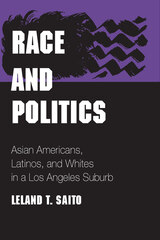 Race and Politics: Asian Americans, Latinos, and Whites in a Los Angeles Suburb
Leland T. Saito. Foreword by Roger Daniels
University of Illinois Press, 1998 Located a mere fifteen minutes from Los Angeles, the San Gabriel Valley is an incubator for California's new ethnic politics. Here, Latinos and Asian Americans are the dominant groups. Politics are Latino-dominated, while a large infusion of Chinese immigrants and capital has made the San Gabriel Valley the center of the nation's largest Chinese ethnic economy. The white population, meanwhile, has dropped from an overwhelming majority in 1970 to a minority in 1990. Leland T. Saito presents an insider's view of the political, economic, and cultural implications of this ethnic mix. He examines how diverse residents of the region have worked to overcome their initial antagonisms and develop new, more effective political alliances. Tracing grassroots political organization along racial and ethnic lines, Race and Politics focuses on the construction of new identities in general and the panethnic affiliation "Asian American" in particular.
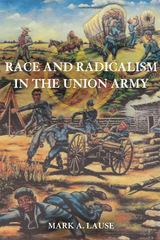 Race and Radicalism in the Union Army
Mark A. Lause
University of Illinois Press, 2013 In this compelling portrait of interracial activism, Mark A. Lause documents the efforts of radical followers of John Brown to construct a triracial portion of the Federal Army of the Frontier. Mobilized and inspired by the idea of a Union that would benefit all, black, Indian, and white soldiers fought side by side, achieving remarkable successes in the field. Against a backdrop of idealism, racism, greed, and the agonies and deprivations of combat, Lause examines links between radicalism and reform, on the one hand, and racialized interactions among blacks, Indians, and whites, on the other. Lause examines how this multiracial vision of American society developed on the Western frontier. Focusing on the men and women who supported Brown in territorial Kansas, Lause examines the impact of abolitionist sentiment on relations with Indians and the crucial role of nonwhites in the conflict. Through this experience, Indians, blacks, and whites began to see their destinies as interdependent, and Lause discusses the radicalizing impact of this triracial Unionism upon the military course of the war in the upper Trans-Mississippi. The aftermath of the Civil War destroyed much of the memory of the war in the West, particularly in the Indian Territory (now Oklahoma). The opportunity for an interracial society was quashed by the government's willingness to redefine the lucrative field of Indian exploitation for military and civilian officials and contractors. Assessing the social interrelations, ramifications, and military impact of nonwhites in the Union forces, Race and Radicalism in the Union Army explores the extent of interracial thought and activity among Americans in this period and greatly expands the historical narrative on the Civil War in the West.
 Race And Reconciliation: Essays From The New South Africa
Daniel Herwitz
University of Minnesota Press, 2003 A meditation on the lessons to be learned from South Africa’s transformation in the wake of apartheid Justice, truth, and identity; race, society, and law—all come into dramatic play as South Africa makes the tumultuous transition to a post-apartheid democracy. Seeking the timeless through the timely and trying to find the deeper meaning in the sweep of events, Daniel Herwitz brings the vast resources of the philosophical essay to bear on the new realities of post-apartheid South Africa—from racial identity to truth commissions, from architecture to film and television. A public intellectual’s reflections on public life, Herwitz’s essays question how the new South Africa has constructed its concepts of reconciliation and return and how its historical emergence has meant a rethinking, reimagining, reexperiencing, relabeling, and repoliticizing of race. Herwitz’s purpose is to give a philosophical reading of society—a society already relying on implicitly philosophical concepts in its social and political agendas. Working through these concepts, testing their relevance for reading society, his book itself becomes a part of the politics of definition and description in the new South Africa.
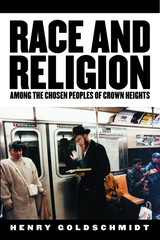 Race and Religion Among the Chosen People of Crown Heights
Goldschmidt, Henry
Rutgers University Press, 2006 In August of 1991, the Brooklyn neighborhood of Crown Heights was engulfed in violence following the deaths of Gavin Cato and Yankel Rosenbaum—a West Indian boy struck by a car in the motorcade of a Hasidic spiritual leader and an orthodox Jew stabbed by a Black teenager. The ensuing unrest thrust the tensions between the Lubavitch Hasidic community and their Afro-Caribbean and African American neighbors into the media spotlight, spurring local and national debates on diversity and multiculturalism. Crown Heights became a symbol of racial and religious division. Yet few have paused to examine the nature of Black-Jewish difference in Crown Heights, or to question the flawed assumptions about race and religion that shape the politics—and perceptions—of conflict in the community.
In Race and Religion among the Chosen Peoples of Crown Heights, Henry Goldschmidt explores the everyday realities of difference in Crown Heights. Drawing on two years of fieldwork and interviews, he argues that identity formation is particularly complex in Crown Heights because the neighborhood’s communities envision the conflict in remarkably diverse ways. Lubavitch Hasidic Jews tend to describe it as a religious difference between Jews and Gentiles, while their Afro-Caribbean and African American neighbors usually define it as a racial difference between Blacks and Whites. These tangled definitions are further complicated by government agencies who address the issue as a matter of culture, and by the Lubavitch Hasidic belief—a belief shared with a surprising number of their neighbors—that they are a “chosen people” whose identity transcends the constraints of the social world.
The efforts of the Lubavitch Hasidic community to live as a divinely chosen people in a diverse Brooklyn neighborhood where collective identities are generally defined in terms of race illuminate the limits of American multiculturalism—a concept that claims to celebrate diversity, yet only accommodates variations of certain kinds. Taking the history of conflict in Crown Heights as an invitation to reimagine our shared social world, Goldschmidt interrogates the boundaries of race and religion and works to create space in American society for radical forms of cultural difference.
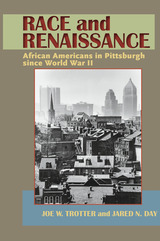 Race and Renaissance: African Americans in Pittsburgh since World War II
Joe W. Trotter
University of Pittsburgh Press, 2013 African Americans from Pittsburgh have a long and distinctive history of contributions to the cultural, political, and social evolution of the United States. From jazz legend Earl Fatha Hines to playwright August Wilson, from labor protests in the 1950s to the Black Power movement of the late 1960s, Pittsburgh has been a force for change in American race and class relations.
Race and Renaissance presents the first history of African American life in Pittsburgh after World War II. It examines the origins and significance of the second Great Migration, the persistence of Jim Crow into the postwar years, the second ghetto, the contemporary urban crisis, the civil rights and Black Power movements, and the Million Man and Million Woman marches, among other topics.
In recreating this period, Trotter and Day draw not only from newspaper articles and other primary and secondary sources, but also from oral histories. These include interviews with African Americans who lived in Pittsburgh during the postwar era, uncovering firsthand accounts of what life was truly like during this transformative epoch in urban history.
In these ways, Race and Renaissance illuminateshow African Americans arrived at their present moment in history. It also links movements for change to larger global issues: civil rights with the Vietnam War; affirmative action with the movement against South African apartheid. As such, the study draws on both sociology and urban studies to deepen our understanding of the lives of urban blacks.
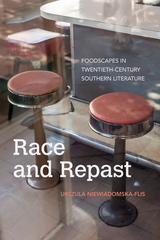 Race and Repast: Foodscapes in Twentieth-Century Southern Literature
Urszula Niewiadomska-Flis
University of Arkansas Press, 2022 Race and Repast: Foodscapes in Twentieth-Century Southern Literature examines the literary foodscapes of the American South—from Jim Crow–era kitchens where White and Black Southerners reacted against racial mores, to the public dining spaces where Southerners probed the limits of racial identity, to the lunch counters that became touchstones of the Black Freedom movement. Mining literary texts by iconic authors like Ernest Gaines and Walker Percy to demonstrate that “food reflects and refracts power,” Urszula Niewiadomska-Flis wields food studies as a revelatory lens through which to view a radically segregated society that was often on the cusp of violence. Niewiadomska-Flis also provides a rich and succinct introduction to scholarship in Southern studies and food studies, making Race and Repast a compelling read that offers countless insights to experts as well as readers exploring these areas of research for the first time.
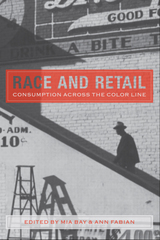 Race and Retail: Consumption across the Color Line
Bay, Mia
Rutgers University Press, 2015 Race has long shaped shopping experiences for many Americans. Retail exchanges and establishments have made headlines as flashpoints for conflict not only between blacks and whites, but also between whites, Mexicans, Asian Americans, and a wide variety of other ethnic groups, who have at times found themselves unwelcome at white-owned businesses. Race and Retail documents the extent to which retail establishments, both past and present, have often catered to specific ethnic and racial groups. Using an interdisciplinary approach, the original essays collected here explore selling and buying practices of nonwhite populations around the world and the barriers that shape these habits, such as racial discrimination, food deserts, and gentrification. The contributors highlight more contemporary issues by raising questions about how race informs business owners’ ideas about consumer demand, resulting in substandard quality and higher prices for minorities than in predominantly white neighborhoods. In a wide-ranging exploration of the subject, they also address revitalization and gentrification in South Korean and Latino neighborhoods in California, Arab and Turkish coffeehouses and hookah lounges in South Paterson, New Jersey, and tourist capoeira consumption in Brazil. Race and Retail illuminates the complex play of forces at work in racialized retail markets and the everyday impact of those forces on minority consumers. The essays demonstrate how past practice remains in force in subtle and not-so-subtle ways.
 Race and Reunion: The Civil War in American Memory
David W. Blight
Harvard University Press, 2001 Winner of the Bancroft Prize
Winner of the Gilder Lehrman Lincoln Prize
Winner of the Merle Curti award
Winner of the Frederick Douglass Prize
No historical event has left as deep an imprint on America's collective memory as the Civil War. In the war's aftermath, Americans had to embrace and cast off a traumatic past. David Blight explores the perilous path of remembering and forgetting, and reveals its tragic costs to race relations and America's national reunion.In 1865, confronted with a ravaged landscape and a torn America, the North and South began a slow and painful process of reconciliation. The ensuing decades witnessed the triumph of a culture of reunion, which downplayed sectional division and emphasized the heroics of a battle between noble men of the Blue and the Gray. Nearly lost in national culture were the moral crusades over slavery that ignited the war, the presence and participation of African Americans throughout the war, and the promise of emancipation that emerged from the war. Race and Reunion is a history of how the unity of white America was purchased through the increasing segregation of black and white memory of the Civil War. Blight delves deeply into the shifting meanings of death and sacrifice, Reconstruction, the romanticized South of literature, soldiers' reminiscences of battle, the idea of the Lost Cause, and the ritual of Memorial Day. He resurrects the variety of African-American voices and memories of the war and the efforts to preserve the emancipationist legacy in the midst of a culture built on its denial.
Blight's sweeping narrative of triumph and tragedy, romance and realism, is a compelling tale of the politics of memory, of how a nation healed from civil war without justice. By the early twentieth century, the problems of race and reunion were locked in mutual dependence, a painful legacy that continues to haunt us today.
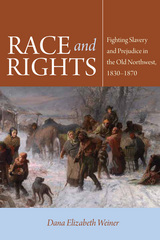 Race and Rights: Fighting Slavery and Prejudice in the Old Northwest, 1830-1870
Dana Elizabeth Weiner
Northern Illinois University Press, 2012
In the Old Northwest from 1830-1870, a bold set of activists battled slavery and racial prejudice. This book is about their expansive efforts to eradicate southern slavery and its local influence in the contentious milieu of four new states carved out of the Northwest Territory: Illinois, Indiana, Michigan, and Ohio. While the Northwest Ordinance outlawed slavery in the region in 1787, in reality both it and racism continued to exert strong influence in the Old Northwest, as seen in the race-based limitations of civil liberties there. Indeed, these states comprised the central battleground over race and rights in antebellum America, in a time when race's social meaning was deeply infused into all aspects of Americans' lives, and when people struggled to establish political consensus.
Antislavery and anti-prejudice activists from a range of institutional bases crossed racial lines as they battled to expand African American rights in this region. Whether they were antislavery lecturers, journalists, or African American leaders of the Black Convention Movement, women or men, they formed associations, wrote publicly to denounce their local racial climate, and gave controversial lectures. In the process, they discovered that they had to fight for their own right to advocate for others. This bracing new history by Dana Elizabeth Weiner is thus not only a history of activism, but also a history of how Old Northwest reformers understood the law and shaped new conceptions of justice and civil liberties.
The newest addition to the Mellon-sponsored Early American Places Series, Race and Rights will be a much-welcomed contribution to the study of race and social activism in 19th-century America.
Race and Role: The Mixed-Race Asian Experience in American Drama
Rena M. Heinrich
Rutgers University Press, 2023 Mixed-race Asian American plays are often overlooked for their failure to fit smoothly into static racial categories, rendering mixed-race drama inconsequential in conversations about race and performance. Since the nineteenth century, however, these plays have long advocated for the social significance of multiracial Asian people.
Race and Role: The Mixed-Race Experience in American Drama traces the shifting identities of multiracial Asian figures in theater from the late-nineteenth century to the present day and explores the ways that mixed-race Asian identity transforms our understanding of race. Mixed-Asian playwrights harness theater’s generative power to enact performances of “double liminality” and expose the absurd tenacity with which society clings to a tenuous racial scaffolding.
Race and Romance: Coloring the Past
Margo Hendricks
Arizona Center for Medieval and Renaissance Studies, 2021 This study brings race and the literary tradition of romance into dialogue.
Race and Romance: Coloring the Past explores the literary and cultural genealogy of colorism, white passing, and white presenting in the romance genre. The scope of the study ranges from Heliodorus’ Aithiopika to the short novels of Aphra Behn, to the modern romance novel Forbidden by Beverly Jenkins. This analysis engages with the troublesome racecraft of “passing” and the instability of racial identity and its formation from the premodern to the present. The study also looks at the significance of white settler colonialism to early modern romance narratives. A bridge between studies of early modern romance and scholarship on twenty-first-century romance novels, this book is well-suited for those interested in the romance genre.
 Race and Schooling in the City
Adam Yarmolinsky
Harvard University Press, 1981 Here is a sober report by fifteen of the nations leading experts on desegregation, the product of an American Academy study group that met to assess the radically changed character of the urban school desegregation struggle over the quarter century since the Supreme Court”s landmark decision. The distinguished contributors differ sharply in their ideas about the nature of this vexing social problem and in their proposed remedies. They grapple with the range of relevant issues, from the effects of desegregation on children to societal attitudes, demographic developments, “white flight,” resegregation, incentives and other policy options, individual versus group rights, and ethical and legal considerations.
This is a book that reaches beyond the old disputes about busing to consider the issue in new ways and to suggest new options. If there are no quick solutions to the schooling problems in the nation’s big cities, neither is there any excuse for ignorance about this matter. Rich in its implications for the future, Race and Schooling in the City offers fresh assessments of one of the country’s most visible and intractable controversies.
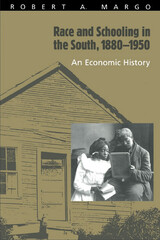 Race and Schooling in the South, 1880-1950: An Economic History
Robert A. Margo
University of Chicago Press, 1990 The interrelation among race, schooling, and labor market opportunities of American blacks can help us make sense of the relatively poor economic status of blacks in contemporary society. The role of these factors in slavery and the economic consequences for blacks has received much attention, but the post-slave experience of blacks in the American economy has been less studied. To deepen our understanding of that experience, Robert A. Margo mines a wealth of newly available census data and school district records. By analyzing evidence concerning occupational discrimination, educational expenditures, taxation, and teachers' salaries, he clarifies the costs for blacks of post-slave segregation.
"A concise, lucid account of the bases of racial inequality in the South between Reconstruction and the Civil Rights era. . . . Deserves the careful attention of anyone concerned with historical and contemporary race stratification."—Kathryn M. Neckerman, Contemporary Sociology
"Margo has produced an excellent study, which can serve as a model for aspiring cliometricians. To describe it as 'required reading' would fail to indicate just how important, indeed indispensable, the book will be to scholars interested in racial economic differences, past or present."—Robert Higgs, Journal of Economic Literature
"Margo shows that history is important in understanding present domestic problems; his study has significant implications for understanding post-1950s black economic development."—Joe M. Richardson, Journal of American History
Race and Sex in Latin America
Peter Wade
Pluto Press, 2009 The intersection of race and sex in Latin America is a subject touched upon by many disciplines but this is the first book to deal solely with these issues.
Interracial sexual relations are often a key mythic basis for Latin American national identities, but the importance of this has been underexplored. Peter Wade provides a pioneering overview of the growing literature on race and sex in the region, covering historical aspects and contemporary debates. He includes both black and indigenous people in the frame, as well as mixed and white people, avoiding the implication that "race" means "black-white" relations.
Challenging but accessible, this book will appeal across the humanities and social sciences, particularly to students of anthropology, gender studies, history and Latin American studies.
Race and State (CW2)
Eric Voegelin, Edited & Intro by Klaus Vondung, & Translated by Ruth Hein
University of Missouri Press
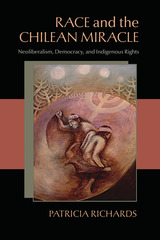 Race and the Chilean Miracle: Neoliberalism, Democracy, and Indigenous Rights
Patricia Richards
University of Pittsburgh Press, 2013 The economic reforms imposed by Augusto Pinochet’s regime (1973–1990) are often credited with transforming Chile into a global economy and setting the stage for a peaceful transition to democracy, individual liberty, and the recognition of cultural diversity. The famed economist Milton Friedman would later describe the transition as the “Miracle of Chile.” Yet, as Patricia Richards reveals, beneath this veneer of progress lies a reality of social conflict and inequity that has been perpetuated by many of the same neoliberal programs.
In Race and the Chilean Miracle, Richards examines conflicts between Mapuche indigenous people and state and private actors over natural resources, territorial claims, and collective rights in the Araucanía region. Through ground-level fieldwork, extensive interviews with local Mapuche and Chileans, and analysis of contemporary race and governance theory, Richards exposes the ways that local, regional, and transnational realities are shaped by systemic racism in the context of neoliberal multiculturalism..
Richards demonstrates how state programs and policies run counter to Mapuche claims for autonomy and cultural recognition. The Mapuche, whose ancestral lands have been appropriated for timber and farming, have been branded as terrorists for their activism and sometimes-violent responses to state and private sector interventions. Through their interviews, many Mapuche cite the perpetuation of colonialism under the guise of development projects, multicultural policies, and assimilationist narratives. Many Chilean locals and political elites see the continued defiance of the Mapuche in their tenacious connection to the land, resistance to integration, and insistence on their rights as a people. These diametrically opposed worldviews form the basis of the racial dichotomy that continues to pervade Chilean society.
In her study, Richards traces systemic racism that follows both a top-down path (global, state, and regional) as well as a bottom-up one (local agencies and actors), detailing their historic roots. Richards also describes potential positive outcomes in the form of intercultural coalitions or indigenous autonomy. Her compelling analysis offers new perspectives on indigenous rights, race, and neoliberal multiculturalism in Latin America and globally.
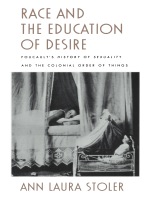 Race and the Education of Desire: Foucault's History of Sexuality and the Colonial Order of Things
Ann Laura Stoler
Duke University Press, 1995 Michel Foucault’s History of Sexuality has been one of the most influential books of the last two decades. It has had an enormous impact on cultural studies and work across many disciplines on gender, sexuality, and the body. Bringing a new set of questions to this key work, Ann Laura Stoler examines volume one of History of Sexuality in an unexplored light. She asks why there has been such a muted engagement with this work among students of colonialism for whom issues of sexuality and power are so essential. Why is the colonial context absent from Foucault’s history of a European sexual discourse that for him defined the bourgeois self? In Race and the Education of Desire, Stoler challenges Foucault’s tunnel vision of the West and his marginalization of empire. She also argues that this first volume of History of Sexuality contains a suggestive if not studied treatment of race.
Drawing on Foucault’s little-known 1976 College de France lectures, Stoler addresses his treatment of the relationship between biopower, bourgeois sexuality, and what he identified as “racisms of the state.” In this critical and historically grounded analysis based on cultural theory and her own extensive research in Dutch and French colonial archives, Stoler suggests how Foucault’s insights have in the past constrained—and in the future may help shape—the ways we trace the genealogies of race.
Race and the Education of Desire will revise current notions of the connections between European and colonial historiography and between the European bourgeois order and the colonial treatment of sexuality. Arguing that a history of European nineteenth-century sexuality must also be a history of race, it will change the way we think about Foucault.
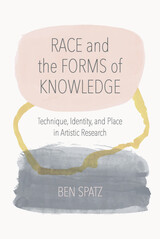 Race and the Forms of Knowledge: Technique, Identity, and Place in Artistic Research
Ben Spatz
Northwestern University Press, 2024 Enacts a radically interdisciplinary intersectionality to position performance-based research in solidarity with decoloniality
This boldly innovative work interrogates the form and meaning of artistic research (also called practice research, performance as research, and research-creation), examining its development within the context of predominately white institutions that have enabled and depoliticized it while highlighting its radical potential when reframed as a lineage of critical whiteness practice.
Ben Spatz crafts a fluid yet critical new framework, explored via a series of case studies that includes Spatz’s own practice-as-research, to productively confront hegemonic modes of white writing and white institutionality. Ultimately taking jewishness as a paradigmatically “molecular” identity—variously configured as racial, ethnic, religious, or national—they offer a series of concrete methodological and formal proposals for working at the intersections of embodied identities, artistic techniques, and alternative forms of knowledge.
Race and the Forms of Knowledge: Technique, Identity, and Place in Artistic Research takes inspiration from recent critical studies of blackness and indigeneity to show how artistic research is always involved in the production and transformation of identity. Spatz offers a toolkit of practical methods and concepts—from molecular identities to audiovisual ethnotechnics and earthing the laboratory—for reimagining the university and other contemporary institutions.
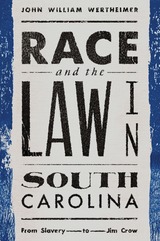 Race and the Law in South Carolina: From Slavery to Jim Crow
John W. Wertheimer
Amherst College Press, 2023 This first title in the “Law, Literature & Culture” series uses six legal disputes from the South Carolina courts to illuminate the complex legal history of race in the U.S. South from slavery through Jim Crow. The first two cases—one criminal, one civil—both illuminate the extreme oppressiveness of slavery. The third explores labor relations between newly emancipated Black agricultural workers and white landowners during Reconstruction. The remaining cases investigate three prominent features of the Jim Crow system: segregated schools, racially biased juries, and lynching, respectively. Throughout the century under consideration, South Carolina’s legal system obsessively drew racial lines, always to the detriment of non-white people, but it occasionally provided a public forum within which racial oppression could be challenged. The book emphasizes how dramatically the degree of legal oppressiveness experienced by Black South Carolinians varied during the century under study, based largely on the degree of Black access to political and legal power.
“Recent arguments in African American History have emphasized the theme of continuity. . . . Race and Law in South Carolina recovers the theme of change over time by showing just how things have changed, and it does so through patient, thick description.” —H. Robert Baker, Georgia State University
“This book and its concomitant student project is an exciting endeavor. . . . The cases are captivating and accessibly written, making this a possible college classroom read.” —Vanessa Blanck, Rowan University
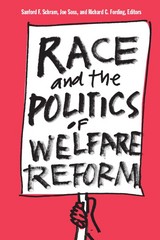 Race and the Politics of Welfare Reform
Sanford F. Schram, Joe Soss, and Richard C. Fording, Editors
University of Michigan Press, 2003 It's hard to imagine discussing welfare policy without discussing race, yet all too often this uncomfortable factor is avoided or simply ignored. Sometimes the relationship between welfare and race is treated as so self-evident as to need no further attention; equally often, race in the context of welfare is glossed over, lest it raise hard questions about racism in American society as a whole. Either way, ducking the issue misrepresents the facts and misleads the public and policy-makers alike.
Many scholars have addressed specific aspects of this subject, but until now there has been no single integrated overview. Race and the Politics of Welfare Reform is designed to fill this need and provide a forum for a range of voices and perspectives that reaffirm the key role race has played--and continues to play--in our approach to poverty.
The essays collected here offer a systematic, step-by-step approach to the issue. Part 1 traces the evolution of welfare from the 1930s to the sweeping Clinton-era reforms, providing a historical context within which to consider today's attitudes and strategies. Part 2 looks at media representation and public perception, observing, for instance, that although blacks accounted for only about one-third of America's poor from 1967 to 1992, they featured in nearly two-thirds of news stories on poverty, a bias inevitably reflected in public attitudes. Part 3 discusses public discourse, asking questions like "Whose voices get heard and why?" and "What does 'race' mean to different constituencies?" For although "old-fashioned" racism has been replaced by euphemism, many of the same underlying prejudices still drive welfare debates--and indeed are all the more pernicious for being unspoken. Part 4 examines policy choices and implementation, showing how even the best-intentioned reform often simply displaces institutional inequities to the individual level--bias exercised case by case but no less discriminatory in effect. Part 5 explores the effects of welfare reform and the implications of transferring policy-making to the states, where local politics and increasing use of referendum balloting introduce new, often unpredictable concerns. Finally, Frances Fox Piven's concluding commentary, "Why Welfare Is Racist," offers a provocative response to the views expressed in the pages that have gone before--intended not as a "last word" but rather as the opening argument in an ongoing, necessary, and newly envisioned national debate.
Sanford Schram is Visiting Professor of Social Work and Social Research, Bryn Mawr Graduate School of Social Work and Social Research.
Joe Soss teaches in the Department of Government at the Graduate school of Public Affairs, American University, Washington, D.C.
Richard Fording is Associate Professor in the Department of Political Science, University of Kentucky.
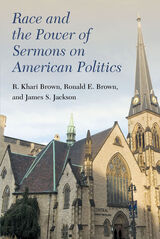 Race and the Power of Sermons on American Politics
R. Khari Brown, Ronald E. Brown, and James S. Jackson
University of Michigan Press, 2021 This book examines the intersection of race, political sermons, and social justice. Religious leaders and congregants who discuss and encourage others to do social justice embrace a form of civil religion that falls close to the covenantal wing of American civil religious thought. Clergy and members who share this theological outlook frame the nation as being exceptional in God’s sight. They also emphasize that the nation’s special relationship with the Creator is contingent on the nation working toward providing opportunities for socioeconomic well-being, freedom, and creative pursuits. God’s covenant, thus, requires inclusion of people who may have different life experiences but who, nonetheless, are equally valued by God and worthy of dignity. Adherents to such a civil religious worldview would believe it right to care for and be in solidarity with the poor and powerless, even if they are undocumented immigrants, people living in non-democratic and non-capitalist nations, or members of racial or cultural out-groups. Relying on 44 national and regional surveys conducted between 1941 and 2019, Race and the Power of Sermons on American Politics explores how racial experiences impact the degree to which religion informs social justice attitudes and political behavior. This is the most comprehensive set of analyses of publicly available survey data on this topic.
Race and the Rhetoric of Resistance
Jeffrey B. Ferguson
Rutgers University Press, 2021 Jeffrey B. Ferguson is remembered as an Amherst College professor of mythical charisma and for his long-standing engagement with George Schuyler, culminating in his paradigm changing book The Sage of Sugar Hill. Continuing in the vein of his ever questioning the conventions of “race melodrama” through the lens of which so much American cultural history and storytelling has been filtered, Ferguson’s final work is brought together here in Race and the Rhetoric of Resistance.
 Race and the Subject of Masculinities
Harry Stecopoulos and Michael Uebel, eds.
Duke University Press, 1997 Although in recent years scholars have explored the cultural construction of masculinity, they have largely ignored the ways in which masculinity intersects with other categories of identity, particularly those of race and ethnicity. The essays in Race and the Subject of Masculinities address this concern and focus on the social construction of masculinity—black, white, ethnic, gay, and straight—in terms of the often complex and dynamic relationships among these inseparable categories. Discussing a wide range of subjects including the inherent homoeroticism of martial-arts cinema, the relationship between working-class ideologies and Elvis impersonators, the emergence of a gay, black masculine aesthetic in the works of James Van der Zee and Robert Mapplethorpe, and the comedy of Richard Pryor, Race and the Subject of Masculinities provides a variety of opportunities for thinking about how race, sexuality, and "manhood" are reinforced and reconstituted in today’s society. Editors Harry Stecopoulos and Michael Uebel have gathered together essays that make clear how the formation of masculine identity is never as obvious as it might seem to be. Examining personas as varied as Eddie Murphy, Bruce Lee, Tarzan, Malcolm X, and Andre Gidé, these essays draw on feminist critique and queer theory to demonstrate how cross-identification through performance and spectatorship among men of different races and cultural backgrounds has served to redefine masculinity in contemporary culture. By taking seriously the role of race in the making of men, Race and the Subject of Masculinities offers an important challenge to the new studies of masculinity. Contributors. Herman Beavers, Jonathan Dollimore, Richard Dyer, Robin D. G. Kelly, Christopher Looby, Leerom Medovoi, Eric Lott, Deborah E. McDowell, José E. Muñoz, Harry Stecopoulos, Yvonne Tasker, Michael Uebel, Gayle Wald, Robyn Wiegman
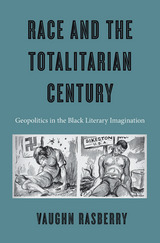 Race and the Totalitarian Century: Geopolitics in the Black Literary Imagination
Vaughn Rasberry
Harvard University Press, 2016 Few concepts evoke the twentieth century’s record of war, genocide, repression, and extremism more powerfully than the idea of totalitarianism. Today, studies of the subject are usually confined to discussions of Europe’s collapse in World War II or to comparisons between the Soviet Union and Nazi Germany. In Race and the Totalitarian Century, Vaughn Rasberry parts ways with both proponents and detractors of these normative conceptions in order to tell the strikingly different story of how black American writers manipulated the geopolitical rhetoric of their time.
During World War II and the Cold War, the United States government conscripted African Americans into the fight against Nazism and Stalinism. An array of black writers, however, deflected the appeals of liberalism and its antitotalitarian propaganda in the service of decolonization. Richard Wright, W. E. B. Du Bois, Shirley Graham, C. L. R. James, John A. Williams, and others remained skeptical that totalitarian servitude and democratic liberty stood in stark opposition. Their skepticism allowed them to formulate an independent perspective that reimagined the antifascist, anticommunist narrative through the lens of racial injustice, with the United States as a tyrannical force in the Third World but also as an ironic agent of Asian and African independence.
Bringing a new interpretation to events such as the Bandung Conference of 1955 and the Suez Canal Crisis of 1956, Rasberry’s bird’s-eye view of black culture and politics offers an alternative history of the totalitarian century.
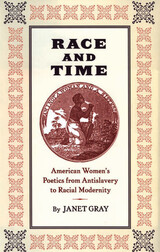 Race and Time: American Women's Poetics from Antislavery to Racial Modernity
Janet Gray
University of Iowa Press, 2004 Race and Time urges our attention to women’s poetry in considering the cultural history of race. Building on close readings of well known and less familiar poets—including Elizabeth Margaret Chandler, Sarah Louisa Forten, Hannah Flagg Gould, Frances Ellen Watkins Harper, Sarah Piatt, Mary Eliza Tucker Lambert, Sarah Josepha Hale, Eliza Follen, and Mary Mapes Dodge—Gray traces tensions in women’s literary culture from the era of abolitionism to the rise of the Plantation tradition. She devotes a chapter to children’s verse, arguing that racial stereotypes work as “nonsense” that masks conflicts in the construction of white childhood. A compilation of the poems cited, most of which are difficult to find elsewhere, is included as an appendix.
Gray clarifies the cultural roles women’s poetry played in the nineteenth-century United States and also reveals that these poems offer a fascinating, dynamic, and diverse field for students of social and cultural history. Gray’s readings provide a rich sense of the contexts in which this poetry is embedded and examine its aesthetic and political vitality in meticulous detail, linking careful explication of the texts with analysis of the history of poetry, canons, literacy, and literary authority.
Race and Time distinguishes itself from other critical studies not only through its searching, in-depth readings but also through its sustained attention to less known poets and its departure from a Dickinson-centered model. Most significantly, it offers a focus on race, demonstrating how changes in both the U.S. racial structure and women’s place in public culture set the terms for change in how women poets envisioned the relationship between poetry and social power.
Gray’s work makes contributions to several fields of study: poetry, U.S. literary history and American studies, women’s studies, African American studies and whiteness studies, children’s literature, and cultural studies. While placing the works of figures who have been treated elsewhere (e.g., Dickinson and Harper) into revealing new relationships, Race and Time does much to open interdisciplinary discussion of unfamiliar works.
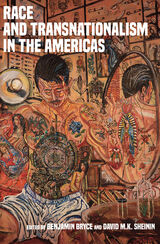 Race and Transnationalism in the Americas
Benjamin Bryce and David M. K. Sheinin
University of Pittsburgh Press, 2021 National borders and transnational forces have been central in defining the meaning of race in the Americas. Race and Transnationalism in the Americas examines the ways that race and its categorization have functioned as organizing frameworks for cultural, political, and social inclusion—and exclusion—in the Americas. Because racial categories are invariably generated through reference to the “other,” the national community has been a point of departure for understanding race as a concept. Yet this book argues that transnational forces have fundamentally shaped visions of racial difference and ideas of race and national belonging throughout the Americas, from the late nineteenth century to the present. Examining immigration exclusion, indigenous efforts toward decolonization, government efforts to colonize, sport, drugs, music, populism, and film, the authors examine the power and limits of the transnational flow of ideas, people, and capital. Spanning North America, Central America, South America, and the Caribbean, the volume seeks to engage in broad debates about race, citizenship, and national belonging in the Americas.
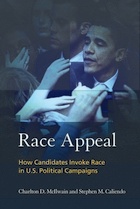 Race Appeal: How Candidates Invoke Race in U.S. Political Campaigns
Authored by Charlton D. McIlwain and Stephen M. Caliendo
Temple University Press, 2011 In our evolving American political culture, whites and blacks continue to respond very differently to race-based messages and the candidates who use them. Race Appeal examines the use and influence such appeals have on voters in elections for federal office in which one candidate is a member of a minority group.
Charlton McIlwain and Stephen Caliendo use various analysis methods to examine candidates who play the race card in political advertisements. They offer a compelling analysis of the construction of verbal and visual racial appeals and how the news media covers campaigns involving candidates of color.
Combining rigorous analyses with in-depth case studies-including an examination of race-based appeals in the historic 2008 presidential election—Race Appeal is a groundbreaking work that represents the most extensive and thorough treatment of race-based appeals in American political campaigns to date.
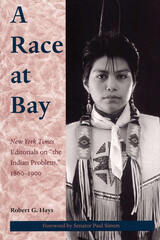 A Race at Bay: New York Times Editorials on "the Indian Problem," 1860 - 1900
Robert G. Hays. Foreword by Paul Simon
Southern Illinois University Press, 1997
Robert G. Hays chronicles the "Indian problem" precisely as it was explained to Americans through the editorial columns of the New York Times between 1860 and 1900, the years when battles between white settlers and Native Americans split a nation and its spirit apart.
Covering the final forty-one years of the nineteenth century, Hays’s collection of Times editorials gives readers what current accounts cannot: perspectives by contemporary writers with unique insights into the public images of Native Americans and their place in a nation bent on expansion. The authentic voices of a national newspaper’s daily record speak with an urgency both immediate and real.
These editorials express the unbridled bitterness and raw ambition of a nation immersed in an agenda of conquest. They also resonate with the struggle to find a common ground. Some editorials are patronizing and ironic: "Yet it seems pitiful to cage so fine a savage among a herd of vulgar criminals in a penitentiary." Others include a willingness to poke fun: "Many persons on the platform were astonished to find that an ‘illiterate barbarian’ could handle the weapon of sarcasm. The truth is that the Indians spoke far better than ninety-nine out of a hundred members of congress." And yet others evince an attitude of respect, which set the tone for reconciling national ambition with natural rights.
In some instances, the Times allowed Native Americans to tell their own stories, as in this eloquent, moving account of the testimony of Satanta, the warrior chief of the Kiowas: "A certain dim foreboding of the Indians’ fate swept across his mind, and in its passage lit his eyes up with a fierce light, and his voice rose to a pitch of frenzy as he exclaimed: ‘We don’t want to settle—I love to roam over the prairie; there I am free and happy."
History demonstrates that the costs of owning one’s soil and one’s destiny remain without measure. Many of the problems blocking the progress of Native Americans continue unsolved: unemployment, infant mortality, suicide, crime, alcoholism, and poverty. Following such works as Helen Hunt Jackson’s A Century of Dishonor and Dee Brown’s Bury My Heart at Wounded Knee, Hays looks back on the records of national history for the roots of our challenges today.
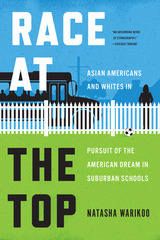 Race at the Top: Asian Americans and Whites in Pursuit of the American Dream in Suburban Schools
Natasha Warikoo
University of Chicago Press, 2022 An illuminating, in-depth look at competition in suburban high schools with growing numbers of Asian Americans, where white parents are determined to ensure that their children remain at the head of the class.
The American suburb conjures an image of picturesque privilege: manicured lawns, quiet streets, and—most important to parents—high-quality schools. These elite enclaves are also historically white, allowing many white Americans to safeguard their privileges by using public schools to help their children enter top colleges. That’s changing, however, as Asian American professionals increasingly move into wealthy suburban areas to give their kids that same leg up for their college applications and future careers.
As Natasha Warikoo shows in Race at the Top, white and Asian parents alike will do anything to help their children get to the top of the achievement pile. She takes us into the affluent suburban East Coast school she calls “Woodcrest High,” with a student body about one-half white and one-third Asian American. As increasing numbers of Woodcrest’s Asian American students earn star-pupil status, many whites feel displaced from the top of the academic hierarchy, and their frustrations grow. To maintain their children’s edge, some white parents complain to the school that schoolwork has become too rigorous. They also emphasize excellence in extracurriculars like sports and theater, which maintains their children’s advantage.
Warikoo reveals how, even when they are bested, white families in Woodcrest work to change the rules in their favor so they can remain the winners of the meritocracy game. Along the way, Warikoo explores urgent issues of racial and economic inequality that play out in affluent suburban American high schools. Caught in a race for power and privilege at the very top of society, what families in towns like Woodcrest fail to see is that everyone in their race is getting a medal—the children who actually lose are those living beyond their town’s boundaries.
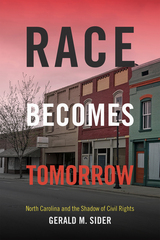 Race Becomes Tomorrow: North Carolina and the Shadow of Civil Rights
Gerald M. Sider
Duke University Press, 2015 In Race Becomes Tomorrow Gerald M. Sider weaves together stories from his civil rights activism, his youth, and his experiences as an anthropologist to investigate the dynamic ways race has been constructed and lived in America since the 1960s. Tacking between past and present, Sider describes how political power, economic control, and racism inject chaos into the lives of ordinary people, especially African Americans, with surprising consequences. In addition to recounting his years working on voter registration in rural North Carolina, Sider makes connections between numerous issues, from sharecropping and deindustrialization to the recessions of the 1970s and 2008, the rise of migrant farm labor, and contemporary living-wage campaigns. Sider's stories—whether about cockroach races in immigrant homes, degrading labor conditions, or the claims and failures of police violence—provide numerous entry points into gaining a deeper understanding of how race and power both are and cannot be lived. They demonstrate that race is produced and exists in unpredictability, and that the transition from yesterday to tomorrow is anything but certain.
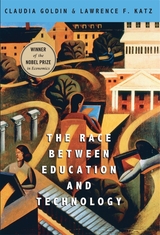 The Race between Education and Technology
Claudia Goldin and Lawrence F. Katz
Harvard University Press, 2008 An incisive history of American education—its great success in creating prosperity and equality during the twentieth century and its relative decline since the 1970s.
“As Goldin and Katz have argued, the 20th century was the American century in large part because it was the human-capital century. Education—knowledge—can help people live better by allowing them to learn from past errors and make new discoveries.” —David Leonhardt, New York Times
This book provides a careful historical analysis of the co-evolution of educational attainment and the wage structure in the United States through the twentieth century. The authors propose that the twentieth century was not only the American Century but also the Human Capital Century. That is, the American educational system is what made America the richest nation in the world. Its educational system had always been less elite than that of most European nations. By 1900 the U.S. had begun to educate its masses at the secondary level, not just in the primary schools that had remarkable success in the nineteenth century.
The book argues that technological change, education, and inequality have been involved in a kind of race. During the first eight decades of the twentieth century, the increase of educated workers was higher than the demand for them. This had the effect of boosting income for most people and lowering inequality. However, the reverse has been true since about 1980. This educational slowdown was accompanied by rising inequality. The authors discuss the complex reasons for this, and what might be done to ameliorate it.
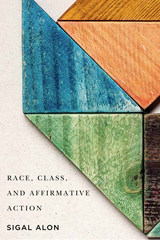 Race, Class, and Affirmative Action
Sigal Alon is an associate professor in the Department of Sociology and Anthropology at Tel-Aviv University.
Russell Sage Foundation, 2015 No issue in American higher education is more contentious than that of race-based affirmative action. In light of the ongoing debate around the topic and recent Supreme Court rulings, affirmative action policy may be facing further changes. As an alternative to race-based affirmative action, some analysts suggest affirmative action policies based on class. In Race, Class, and Affirmative Action, sociologist Sigal Alon studies the race-based affirmative action policies in the United States. and the class-based affirmative action policies in Israel. Alon evaluates how these different policies foster campus diversity and socioeconomic mobility by comparing the Israeli policy with a simulated model of race-based affirmative action and the U.S. policy with a simulated model of class-based affirmative action.
Alon finds that affirmative action at elite institutions in both countries is a key vehicle of mobility for disenfranchised students, whether they are racial and ethnic minorities or socioeconomically disadvantaged. Affirmative action improves their academic success and graduation rates and leads to better labor market outcomes. The beneficiaries of affirmative action in both countries thrive at elite colleges and in selective fields of study. As Alon demonstrates, they would not be better off attending less selective colleges instead.
Alon finds that Israel’s class-based affirmative action programs have provided much-needed entry slots at the elite universities to students from the geographic periphery, from high-poverty high schools, and from poor families. However, this approach has not generated as much ethnic diversity as a race-based policy would. By contrast, affirmative action policies in the United States have fostered racial and ethnic diversity at a level that cannot be matched with class-based policies. Yet, class-based policies would do a better job at boosting the socioeconomic diversity at these bastions of privilege. The findings from both countries suggest that neither race-based nor class-based models by themselves can generate broad diversity. According to Alon, the best route for promoting both racial and socioeconomic diversity is to embed the consideration of race within class-based affirmative action. Such a hybrid model would maximize the mobility benefits for both socioeconomically disadvantaged and minority students.
Race, Class, and Affirmative Action moves past political talking points to offer an innovative, evidence-based perspective on the merits and feasibility of different designs of affirmative action.
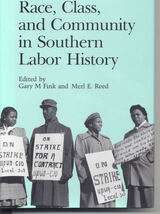 Race, Class, and Community in Southern Labor History
Gary M. Fink
University of Alabama Press, 1994 Under the leadership of Gary M. Fink and Merl E. Reed, Georgia State University hosts the Southern Labor Studies Conferences approximately every two years. The conferences have yielded two previous volumes, published in 1977 and 1981, and this volume, which contains selected papers from the seventh conference held in 1991. As evidence by the quality of these essays, the field of southern labor history has come into its own. Research interest is peaking: the practitioners are younger scholars, and much of their work emphasizes the new social and political history. While the topics covered in this volume usually reflect that methodology, their chronology ranges from the antebellum period to the 1970s, suggesting the variety of sources and changing research approaches that can be used in rendering new meaning to the past. Although the subject of gender was generally a minor theme in these sessions, work now being done leaves no doubt that at some future conference gender will attract a commanding amount of attention. In introducing and describing their respective areas, the associate editors, Robert H. Zieger (textile workers), Joe W. Trotter (African Americans), and Clifford Kuhn (labor politics), have provided a rich historiographical background. The essays in this volume will enlighten the reader on many important aspects of the history of southern labor, and they will also raise new questions to be explained by other scholars and future conferences.
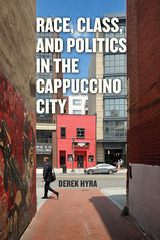 Race, Class, and Politics in the Cappuccino City
Derek S. Hyra
University of Chicago Press, 2017 For long-time residents of Washington, DC’s Shaw/U Street, the neighborhood has become almost unrecognizable in recent years. Where the city’s most infamous open-air drug market once stood, a farmers’ market now sells grass-fed beef and homemade duck egg ravioli. On the corner where AM.PM carryout used to dish out soul food, a new establishment markets its $28 foie gras burger. Shaw is experiencing a dramatic transformation, from “ghetto” to “gilded ghetto,” where white newcomers are rehabbing homes, developing dog parks, and paving the way for a third wave coffee shop on nearly every block.
Race, Class, and Politics in the Cappuccino City is an in-depth ethnography of this gilded ghetto. Derek S. Hyra captures here a quickly gentrifying space in which long-time black residents are joined, and variously displaced, by an influx of young, white, relatively wealthy, and/or gay professionals who, in part as a result of global economic forces and the recent development of central business districts, have returned to the cities earlier generations fled decades ago. As a result, America is witnessing the emergence of what Hyra calls “cappuccino cities.” A cappuccino has essentially the same ingredients as a cup of coffee with milk, but is considered upscale, and is double the price. In Hyra’s cappuccino city, the black inner-city neighborhood undergoes enormous transformations and becomes racially “lighter” and more expensive by the year.
Race, Class, and Power in the Alabama Coalfields, 1908-21
Brian Kelly
University of Illinois Press, 2001 Brian Kelly's acclaimed look at the fault lines in the society of an Alabama city challenges the notion that white workers led the resistance to racial equality in the Jim Crow South. Kelly focuses on the forces that brought the black and white miners of Birmingham, Alabama, together during the hard-fought strikes of 1908 and 1920. He examines the systematic efforts by the region's powerful industrialists to create racial divisions as a means of splitting the workforce, preventing unionization, and keeping wages the lowest in the United States. He also details the role played by Birmingham's small but influential black middle class, whose espousal of industrial accommodation outraged black miners and revealed significant tensions within the African American community.
Race Course Against White Supremacy: Against White Supremacy
Bill Ayers
Northwestern University Press, 2009
White supremacy and its troubling endurance in American life is debated in these personal essays by two veteran political activists. Arguing that white supremacy has been the dominant political system in the United States since its earliest days—and that it is still very much with us—the discussion points to unexamined bigotry in the criminal justice system, election processes, war policy, and education. The book draws upon the authors' own confrontations with authorities during the Vietnam era, reasserts their belief that racism and war are interwoven issues, and offers personal stories about their lives today as parents, teachers, and reformers.
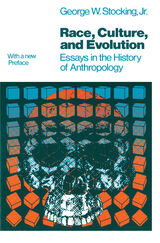 Race, Culture, and Evolution: Essays in the History of Anthropology
George W. Stocking, Jr
University of Chicago Press, 1982 "We have, at long last, a real historian with real historical skills and no intra-professional ax to grind. . . . All these pieces show the virtues one finds missing in . . . nearly all of anthropological history work but [Stocking's]: extensive and critical use of archival sources, tracing of real rather than merely plausible intellectual connections, and contextualization of ideas and movements in terms of broader social and cultural currents. Stocking writes very clearly; attacks important topics—race and evolution, the influence of scientism, the interaction between anthropology and other disciplines; and is methodologically very sophisticated. Though his main theme is the development of racialism and of opposition to it, his book bears on a range of issues very much alive in anthropology. . . . I would think no apprentice anthropologist ought to be pronounced a journeyman until he or she has absorbed what Stocking has to say."—Clifford Geertz, The Institute for Advanced Study, Princeton
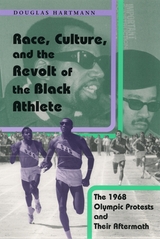 Race, Culture, and the Revolt of the Black Athlete: The 1968 Olympic Protests and Their Aftermath
Douglas Hartmann
University of Chicago Press, 2003 Ever since 1968 a single iconic image of race in American sport has remained indelibly etched on our collective memory: sprinters Tommie Smith and John Carlos accepting medals at the Mexico City Olympics with their black-gloved fists raised and heads bowed. But what inspired their protest? What happened after they stepped down from the podium? And how did their gesture impact racial inequalities?
Drawing on extensive archival research and newly gathered oral histories, Douglas Hartmann sets out to answer these questions, reconsidering this pivotal event in the history of American sport. He places Smith and Carlos within the broader context of the civil rights movement and the controversial revolt of the black athlete. Although the movement drew widespread criticism, it also led to fundamental reforms in the organizational structure of American amateur athletics. Moving from historical narrative to cultural analysis, Hartmann explores what we can learn about the complex relations between race and sport in contemporary America from this episode and its aftermath.
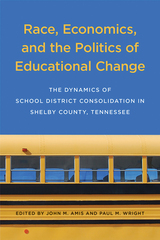 Race, Economics, and the Politics of Educational Change: The Dynamics of School District Consolidation in Shelby County, Tennessee
John M. Amis
University of Tennessee Press, 2018 The 2010 national midterm elections produced Republican majorities in Tennessee for the first time since Reconstruction. In the wake of that election, leaders of the Shelby County Schools (SCS) school district began legislative maneuvering to advance a long-cherished goal: granting their schools “special school district” status—a move that would permanently sever the relationship between the SCS and the other school district in the county, Memphis City Schools (MCS). Leaders of MCS realized this action would deprive it of funding from a significant part of the county’s tax base. So they made a stunning move of their own: they renounced the MCS charter. Ironically, under Tennessee law this action required SCS to take over the running of Memphis’s schools; SCS would actually be forced to merge with MCS. Thus began the largest school district consolidation in the history of the United States.
Race, Economics, and the Politics of Educational Change progresses through nine chapters that examine the MCS/SCS merger from a variety of disciplinary perspectives. Historical, sociological, political, legal, institutional, urban planning, media studies, and educational analyses of the consolidation render John M. Amis and Paul M. Wright’s volume a valuable tool for researchers, students, policy-makers and educators alike. The investigations in this work reveal deeply entrenched inequalities that have thwarted education, particularly for poor minority students, throughout the region’s history. This text presents insight into factors that have shaped not just the school system in Shelby County, but similar systems across the United States. A model for other urban areas that face similar challenges, this volume will serve as a significant resource for those seeking to understand the trajectory of large-scale educational transformations.
 Race, Ethnicity, and Economic Statistics for the 21st Century
Edited by Randall Akee, Lawrence F. Katz, and Mark A. Loewenstein
University of Chicago Press, 2026 Categorizing race and ethnicity for twenty-first-century statistics and economics. The increasing racial and ethnic diversity of the US population raises the question of whether the race and ethnicity categories and definitions used by federal statistical agencies to create demographic statistics on which government officials, business decision-makers, and private citizens rely fully reflect the changing population. Official definitions of existing race and ethnic groups do not always command wide agreement, and over time, some definitions that were once widely accepted may become less so based on political, legal, and social factors. Comparable measures of race and ethnicity over time are needed to accurately track historical changes in economic and social outcomes, as well as racial and ethnic segregation. This volume explores the production of economic statistics that accurately depict the complex racial and ethnic diversity of the US population in the twenty-first century. The chapters examine the consequences for economic analyses of different measurement choices concerning race and ethnicity, assess the likely implications of the 2024 changes in federal race and ethnicity measurement standards, introduce new data sets with richer demographic information, and compare measures of race and ethnicity in administrative versus survey data. They also apply existing data in creative ways to develop alternative characterizations of the changing US workforce and to illuminate important policy questions related to criminal justice, immigration, labor market discrimination, the social safety net, health care, and child welfare.
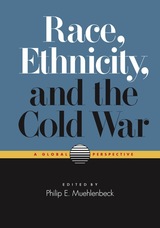 Race, Ethnicity, and the Cold War: A Global Perspective
Philip E. Muehlenbeck
Vanderbilt University Press, 2012 A white American woman is raped by a black Panamanian laborer in 1946 in the Panama Canal Zone, and the aftermath affects labor relations in the Western hemisphere for the next two decades. And numerous nations use the African continent to exercise their colonial muscle and postwar power, only to encounter the financial and military burdens that will exhaust and alienate their own citizenry half a world away. As Race, Ethnicity, and the Cold War reveals, during this dangerous era there were no longer any "isolated incidents." Like the butterfly flapping its wings and changing the weather on the other side of the globe, an instance of racial or ethnic hostility had ripple effects across a Cold War world of brinksmanship between bitter national rivals and ideological opponents.
Table of Contents
Preface
Introduction: The Borders of Race and Nation
Nico Slate
Part I: Race and the International System
Token Diplomacy: The United States, Race, and the Cold War
Michael L. Krenn
A Wind of Change? White Redoubt and the Postcolonial Moment in South Africa, 1960-1963
Ryan M. Irwin
Part II: Race, Ethnicity, and Decolonization
Race, Labor, and Security in the Panama Canal Zone: The 1946 Greaves Rape Case, Local 713, and the Isthmian Cold War Crackdown
Michael Donoghue
Race, Identity, and Diplomacy in the Papua Decolonization Struggle, 1949-1962
David Webster
"For a Better Guinea": Winning Hearts and Minds in Portuguese Guinea
Luís Nuno Rodrigues
Part III: Race and the Interplay of Domestic and International Politics
Testing the Limits of Soviet Internationalism: African Students in the Soviet Union
Maxim Matusevich
Crimes against Humanity in the Congo: Nazi Legacies and the German Cold War in Africa
Katrina M. Hagen
Race and the Cuban Revolution: The Impact of Cuba's Intervention in Angola
Henley Adams
Part IV: Ethnicity and the Interplay of Domestic and International Politics
Ethnic Nationalism in the Cold War Context: The Cyprus Issue in the Greek and Greek American Public Debate, 1954-1989
Zinovia Lialiouti and Philip E. Muehlenbeck
God Bless Reagan and God Help Canada: The Polish Canadian Action Group and Solidarność in Toronto
Eric L. Payseur
Ethnic Nationalism and the Collapse of Soviet Communism
Mark R. Beissinger
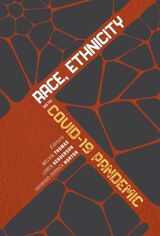 Race, Ethnicity, and the COVID-19 Pandemic
Edited by Melvin E. Thomas, Loren M. Henderson, and Hayward Derrick Horton
University of Minnesota Press, 2022 The first authoritative source on the consequences of the COVID-19 pandemic for racial and ethnic minorities.
To understand racial disparities in COVID-19 infections and deaths, we must first understand how they are linked to racial inequality. In the United States, the material advantages afforded by whiteness lead to lower rates of infections and deaths from COVID-19 when compared to the rates among Black, Latino, and Native American populations. Most experts point to differences in population density, underlying health conditions, and proportions of essential workers as the primary determinants in the levels of COVID-19 deaths.
The national response to the pandemic has laid bare the fundamentals of a racialized social structure. Assembled by a prestigious group of sociologists, this volume examines how particularly during the first year of COVID-19, the socioeconomic impact of the pandemic led to different and poorer outcomes for Black, Latino, and Native American populations. While color-blindness shaped national discussions on essential workers, charity, and differential mortality, minorities were overwhelmingly affected. The essays in this collection provide a mix of critical examination of the progress and direction of our COVID-19 response, personal accounts of the stark difference in care and outcomes for minorities throughout the United States, and offer recommendations to create a foundation for future response and research during the critical early days.
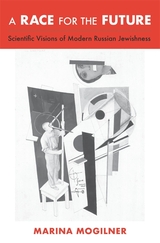 A Race for the Future: Scientific Visions of Modern Russian Jewishness
Marina Mogilner
Harvard University Press, 2022 The forgotten story of a surprising anti-imperial, nationalist project at the turn of the twentieth century: a grassroots movement of Russian Jews to racialize themselves.
In the rapidly nationalizing Russian Empire of the late nineteenth century, Russian Jews grew increasingly concerned about their future. Jews spoke different languages and practiced different traditions. They had complex identities and no territorial homeland. Their inability to easily conform to new standards of nationality meant a future of inevitable assimilation or second-class minority citizenship. The solution proposed by Russian Jewish intellectuals was to ground Jewish nationhood in a structure deeper than culture or territory—biology.
Marina Mogilner examines three leading Russian Jewish race scientists— Samuel Weissenberg, Alexander El’kind, and Lev Shternberg—and the movement they inspired. Through networks of race scientists and political activists, Jewish medical societies, and imperial organizations like the Society for the Protection of the Health of the Jewish Population, they aimed to produce “authentic” knowledge about the Jewish body, which would motivate an empowering sense of racially grounded identity and guide national biopolitics. Activists vigorously debated eugenic and medical practices, Jews’ status as Semites, Europeans, and moderns, and whether the Jews of the Caucasus and Central Asia were inferior. The national science, and the biopolitics it generated, became a form of anticolonial resistance, and survived into the early Soviet period, influencing population policies in the new state.
Comprehensive and meticulously researched, A Race for the Future reminds us of the need to historically contextualize racial ideology and politics and makes clear that we cannot fully grasp the biopolitics of the twentieth century without accounting for the imperial breakdown in which those politics thrived.
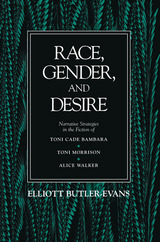 Race Gender & Desire
Elliott Butler-Evans
Temple University Press, 1991 "Butler-Evans's work is everywhere sensitive to the nuances of textual disruptions, to subtle shifts of point of view and to rhetorical dissonance. His dense and adroit readings of even the most familiar writings force the reader to reconsider his or her relation to and understanding of the text in question.... An influential contribution to one of the most exciting new areas of literary study and critical/theoretical debate."
--Valerie Smith, Princeton University
Employing interpretive strategies from semiotics, narratology, feminist theory, and ideological analysis, Elliott Butler-Evans explores the manner in which the politics of race and gender overdetermine the narrative structures of the fiction of Toni Cade Bambara, Toni Morrison, and Alice Walker. He argues that their writing is "often the site of dissonance, ruptures, and...a kind of narrative violence generated by...these two distinctly different, and often contending, expressions of desire."
For novelists such as those considered, the identification "black women writers" suggests the ideological duality that both limits and expands the meanings within their literature. After locating the nationalist, black aesthetic, and black feminist discourses in the writings of Morrison, Bambara, and Walker, Butler-Evans argues for a problematic tension between the racial and gender ideologies in the authors' fictions of the 1970s. In a concluding chapter, he demonstrates how the writers' use of post-modern narrative strategies enables them to figure a black feminist ideological position in their fictions of the 1980s.
"A work of engaging, challenging scholarship. The critical matrix that informs many of the important issues in contemporary critical/literary theory and a fine understanding of the often-dismissed Black Arts Movement whose suppositions, as he demonstrates, find refiguration in--and are challenged by--the work of Bambara, Morrison, and Walker.... He offers a much-needed study that boldly asserts the appropriateness of poststructuralist Afrocentric/feminist literary analysis. Many scholars are starving for sophisticated theoretical analysis of the brilliant work of Afro American writers such as Morrison, Walker, and Bambara. Butler-Evans's provocative study will provide such readers with much food for though, and may permanently alter the ways in which we read these writers."
--Michael Awkward, Center of Afro-American and African Studies, University of Michigan, Ann Arbor
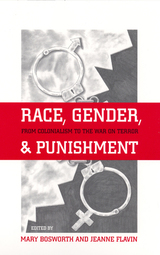 Race, Gender, and Punishment: From Colonialism to the War on Terror
Edited by Mary Bosworth and Jeanne Flavin
Rutgers University Press, 2006 The disproportionate representation of black Americans in the U.S. criminal justice system is well documented. Far less well-documented are the entrenched systems and beliefs that shape punishment and other official forms of social control today.
In Race, Gender, and Punishment, Mary Bosworth and Jeanne Flavin bring together twelve original essays by prominent scholars to examine not only the discrimination that is evident, but also the structural and cultural forces that have influenced and continue to perpetuate the current situation. Contributors point to four major factors that have impacted public sentiment and criminal justice policy: colonialism, slavery, immigration, and globalization. In doing so they reveal how practices of punishment not only need particular ideas about race to exist, but they also legitimate them.
The essays unearth troubling evidence that testifies to the nation's brutally racist past, and to white Americans' continued fear of and suspicion about racial and ethnic minorities. The legacy of slavery on punishment is considered, but also subjects that have received far less attention such as how colonizers' notions of cultural superiority shaped penal practices, the criminalization of reproductive rights, the link between citizenship and punishment, and the global export of crime control strategies.
Uncomfortable but necessary reading, this book provides an original critique of why and how the criminal justice system has emerged as such a racist institution.
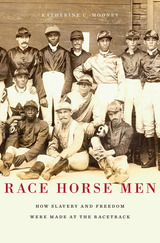 Race Horse Men: How Slavery and Freedom Were Made at the Racetrack
Katherine C. Mooney
Harvard University Press, 2014 Race Horse Men recaptures the vivid sights, sensations, and illusions of nineteenth-century thoroughbred racing, America’s first mass spectator sport. Inviting readers into the pageantry of the racetrack, Katherine C. Mooney conveys the sport’s inherent drama while also revealing the significant intersections between horse racing and another quintessential institution of the antebellum South: slavery.
A popular pastime across American society, horse racing was most closely identified with an elite class of southern owners who bred horses and bet large sums of money on these spirited animals. The central characters in this story are not privileged whites, however, but the black jockeys, grooms, and horse trainers who sometimes called themselves race horse men and who made the racetrack run. Mooney describes a world of patriarchal privilege and social prestige where blacks as well as whites could achieve status and recognition and where favored slaves endured an unusual form of bondage. For wealthy white men, the racetrack illustrated their cherished visions of a harmonious, modern society based on human slavery.
After emancipation, a number of black horsemen went on to become sports celebrities, their success a potential threat to white supremacy and a source of pride for African Americans. The rise of Jim Crow in the early twentieth century drove many horsemen from their jobs, with devastating consequences for them and their families. Mooney illuminates the role these too often forgotten men played in Americans’ continuing struggle to define the meaning of freedom.
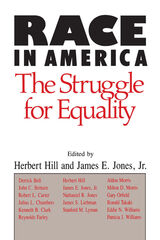 Race in America: The Struggle for Equality
Herbert Hill
University of Wisconsin Press, 1993 Race in America is a multidisciplinary analysis of race and injustice by some of the nation’s foremost scholar-activists who helped shape the course of the struggle for civil rights during the recent past. These essays provide a historical retrospective, an assessment of where we are now, and an outline of possibilities for the future.
The major controversial issues in race relations, in the past and in the present, such as affirmative action, educational segregation, racial practices of labor unions, legal strategies for protest movements, the persistence of racism in American institutions, and the sources of resistance to change are discussed at length by major authorities in their respective fields.
Many of the most important events in recent American history come alive in these pages as the strategies and programs, the victories and defeats of the civil rights movement are rigorously examined. A unique aspect of the book is that the human experience of active participants in this rich history is evoked through personal and often poignant accounts, such as those of Kenneth B. Clark, who in a memorable autobiographical essay describes a long life devoted to the pursuit of racial justice, and Patricia J. Williams, who relates the contemporary struggles of African American women to the historical context of slavery and its aftermath.
As no other book can, this collection provides the basis for the critical insights and historical perspectives that are essential for an understanding of the central issue still confronting American society: race and racism.
 Race in Mind: Critical Essays
Paul Spickard
University of Notre Dame Press, 2015 Race in Mind presents fourteen critical essays on race and mixed race by one of America's most prolific and influential ethnic studies scholars. Collected in one volume are all of Paul Spickard's theoretical writings over the past two decades. Ten of the articles have been revised and updated from previous publications. Four appear here for the first time. Spickard's work embraces three overarching themes: race as biology versus race as something constructed by social and political relationships; race as a phenomenon that exists not just in the United States, but in every part of the world, and even in the relationships between nations; and the question of racial multiplicity.
These essays analyze how race affects people's lives and relationships in all settings, from the United States to Great Britain and from Hawai?i to Chinese Central Asia. They contemplate the racial positions in various societies of people called Black and people called White, of Asians and Pacific Islanders, and especially of those people whose racial ancestries and identifications are multiple. Here for the first time are Spickard's trenchant analyses of the creation of race in the South Pacific, of DNA testing for racial ancestry, and of the meaning of multiplicity in the age of Barack Obama.
"Paul Spickard is one of the most innovative, controversial, and powerful voices in the scholarship on race and racial multiplicity, both in the U.S. and on a global scale. This volume traces his unique scholarly contributions to the field from the 1980s to the present. Like no other scholar in American history, he writes American history as world history: the essays in this volume negotiate transnational perspectives, on the one hand, and, on the other, they combine the world history paradigm with thorough investigations into the specificity of time, particular people, locales, cultures, and social systems." —Maria I. Diedrich, Westfälische Wilhelms-Universität Münster
"This is a collection of masterful writings by one of the nation’s most cogent and sensitive race scholars. National and global as well as comparative historical in scope, these essays display Spickard’s signature sharp wit combined with an incisive intellect in deliberations on wide-ranging topics in history and ethnic studies, particularly in terms of race and multiplicity. It is wonderful that we now have an opportunity to experience the full import of some of Spickard’s most representative analyses compiled into one volume." —G. Reginald Daniel, author of Race and Multiraciality in Brazil and the United States: Converging Paths?
"A pioneer in mixed race studies, Paul Spickard is one of the most innovative historians to study race and ethnicity in the past generation. Race in Mind captures the essence of his originality and its relevance for understanding today’s increasingly multiracial America. This book is essential reading for the twenty-first century." —Lon Kurashige, University of Southern California
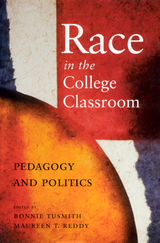 Race in the College Classroom
TuSmith, Bonnie
Rutgers University Press, 2002 Winner of the 2003 American Educational Studies Association Critics' Choice Awards
Winner of the 2003 Gustavus Myers Outstanding Book Award
Did affirmative action programs solve the problem of race on American college campuses, as several recent books would have us believe? If so, why does talking about race in anything more than a superficial way make so many students uncomfortable? Written by college instructors from many disciplines, this volume of essays takes a bold first step toward a nationwide conversation. Each of the twenty-nine contributors addresses one central question: what are the challenges facing a college professor who believes that teaching responsibly requires an honest and searching examination of race?
Professors from the humanities, social sciences, sciences, and education consider topics such as how the classroom environment is structured by race; the temptation to retreat from challenging students when faced with possible reprisals in the form of complaints or negative evaluations; the implications of using standardized evaluations in faculty tenure and promotion when the course subject is intimately connected with race; and the varying ways in which white faculty and faculty of color are impacted by teaching about race.
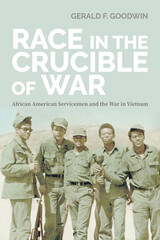 Race in the Crucible of War: African American Servicemen and the War in Vietnam
Gerald F. Goodwin
University of Massachusetts Press, 2023 When African American servicemen went to fight in the Vietnam War, discrimination and prejudice followed them. Even in a faraway country, their military experiences were shaped by the racial environment of the home front. War is often viewed as a crucible that can transform society, but American race relations proved remarkably durable. In Race in the Crucible of War, Gerald F. Goodwin examines how Black servicemen experienced and interpreted racial issues during their time in Vietnam. Drawing on more than fifty new oral interviews and significant archival research, as well as newspapers, periodicals, memoirs, and documentaries, Goodwin reveals that for many African Americans the front line and the home front were two sides of the same coin. Serving during the same period as the civil rights movement and the race riots in Chicago, Detroit, and dozens of other American cities, these men increasingly connected the racism that they encountered in the barracks and on the battlefields with the tensions and violence that were simmering back home.
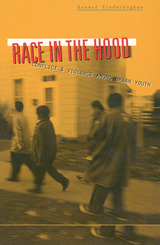 Race In The Hood: Conflict and Violence among Urban Youth
Howard Pinderhughes
University of Minnesota Press, 1997 A compelling study of the origins of racial conflict and violence in America. “We’ll just be hanging out, partying. And somebody will say, ‘Hey, let’s go on a mission.’ That’s when you go looking for people who don’t belong in the neighborhood, and you beat ’em up. Sometimes we go out lookin’ for blacks to jump. Sometimes we look for anybody who ain’t supposed to be there.” —Sal, Avenue T Boys Why are racial conflict and violence among the most enduring problems in American society? Why do some youths express racism violently while others develop tolerance and respect for those who are different? What can we as a society do to foster open-mindedness among children and teenagers? Seeking answers to these questions, Howard Pinderhughes spent two years talking to and studying three groups of New York City adolescents: the predominantly Italian American Avenue T Boys from the Bensonhurst section of Brooklyn; a group of African American teenagers from Schomberg Plaza in East Harlem; and a group of Albanian American youth from Pelham Park in the Bronx. Through the voices of these young people, Pinderhughes examines how racial attitudes and identities develop in communities and are then expressed as either tolerance, resulting in territorial cooperation, or hatred, resulting in racial conflict. Race in the Hood draws a picture of young people who grew up in similar class circumstances, facing remarkably similar problems and issues, with one significant difference in their lives-their race or ethnicity. Pinderhughes argues that the key to success in developing racial tolerance lies in the transformation of racialized grassroots ideologies through community and school-based multicultural education. A sophisticated and nuanced study of race relations in New York City, Race in the Hood points to areas of concern and directions for change in all of our communities.
 Race in the Multiethnic Literature Classroom
Edited by Cristina Stanciu and Gary Totten
University of Illinois Press, 2024 The contemporary rethinking and relearning of history and racism has sparked creative approaches for teaching the histories and representations of marginalized communities. Cristina Stanciu and Gary Totten edit a collection that illuminates these ideas for a variety of fields, areas of education, and institutional contexts. The authors draw on their own racial and ethnic backgrounds to examine race and racism in the context of addressing necessary and often difficult classroom conversations about race, histories of exclusion, and racism. Case studies, reflections, and personal experiences provide guidance for addressing race and racism in the classroom. In-depth analysis looks at attacks on teaching Critical Race Theory and other practices for studying marginalized histories and voices. Throughout, the contributors shine a light on how a critical framework focused on race advances an understanding of contemporary and historical US multiethnic literatures for students around the world and in all fields of study. Contributors: Kristen Brown, Nancy Carranza, Luis Cortes, Marilyn Edelstein, Naomi Edwards, Joanne Lipson Freed, Yadira Gamez, Lauren J. Gantz, Jennifer Ho, Shermaine M. Jones, Norell Martinez, Sarah Minslow, Crystal R. Pérez, Kevin Pyon, Emily Ruth Rutter, Ariel Santos, and C. Anneke Snyder
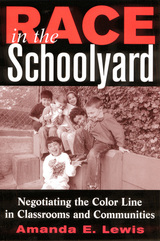 Race in the Schoolyard: Negotiating the Color Line in Classrooms and Communities
Lewis, Amanda E
Rutgers University Press, 2003 "Race in the Schoolyard is a wonderful book for social scientists studying race, education, and childhood studies. The book showcases the talents of a gifted fieldworker whose theoretically rich work sits on the cutting edge of a growing body of scholarship examining the social worlds of children. School officials, parents, and, most especially, a new generation of teachers will benefit from these lessons on race."-American Journal of Sociology "Instructors may recommend this book to students to whom the topic is surely vital and engrossing and for whom the text will be lively and engaging."-Contemporary Sociology "Lewis moves beyond traditional research methods used to examine achievement gaps and differences in test scores to look closely at the realities of schooling. I highly recommend this work for every person involved in teaching and learning."-Multicultural Review "Through eloquent case studies of three California elementary schools-a white-majority 'good' school, a mostly minority 'tough' school, and an integrated 'alternative' school-[Lewis] demonstrates that schools promote racial inequalities through their daily rituals and practices. Even the notion of a "color-blind" America-an especially popular ideal in the white school-perpetuates racism, Lewis argues, because it denies or dismisses the very real constraints that schools place on minorities. Lewis is nevertheless an optimist, insisting that schools can change ideas of race. . . . Highly recommended. Undergraduate collections and above."-Choice "In this pioneering ethnography in elementary schools, Lewis shows brilliantly how racism is taught and learned in the small places of everyday life."-Joe Feagin, University of Florida and author of Racist America "A wonderful and timely book. Ethnographically rich, theoretically sophisticated, and clearly written, this book addresses the ubiquitous issue of race in all its complexity."-Michèle Foster, author of Black Teachers on Teaching "A compelling ethnography of the racial landscape of contemporary schools."-Barrie Thorne, author of Gender Play: Girls and Boys in School Could your kids be learning a fourth R at school: reading, writing, 'rithmatic, and race? Race in the Schoolyard takes us to a place most of us seldom get to see in action¾ our children's classrooms¾ and reveals the lessons about race that are communicated there. Amanda E. Lewis spent a year observing classes at three elementary schools, two multiracial urban and one white suburban. While race of course is not officially taught like multiplication and punctuation, she finds that it nonetheless insinuates itself into everyday life in schools. Lewis explains how the curriculum, both expressed and hidden, conveys many racial lessons. While teachers and other school community members verbally deny the salience of race, she illustrates how it does influence the way they understand the world, interact with each other, and teach children. This eye-opening text is important reading for educators, parents, and scholars alike.
Race, Jobs, and the War
Andrew E. Kersten
University of Illinois Press, 1999 A richly detailed look at the crucial role of federally supported civil rights activism In this rigorous and thoroughly documented study focusing on the pivotal Midwest, Andrew E. Kersten shows how a tiny government agency--the President's Committee on Fair Employment Practice (FEPC)--influenced the course of civil rights reform, moving the United States closer to a national fair employment policy and laying the foundation for today's contested affirmative action practices. Rejecting claims that black advancement during the war was due primarily to shortages of labor, Race, Jobs, and the War contends that the FEPC made significant strides in breaking racial barriers, settling complaints, and pursuing a vigorous educational campaign to foster more harmonious industrial relations between white and minority workers.
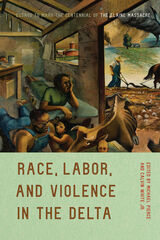 Race, Labor, and Violence in the Delta: Essays to Mark the Centennial of the Elaine Massacre
Michael Pierce
University of Arkansas Press, 2022 Race, Labor, and Violence in the Delta examines the history of labor relations and racial conflict in the Mississippi Valley from the Civil War into the late twentieth century. This essay collection grew out of a conference marking the hundredth anniversary of one of the nation’s deadliest labor conflicts—the 1919 Elaine Massacre, during which white mobs ruthlessly slaughtered over two hundred African Americans across Phillips County, Arkansas, in response to a meeting of unionized Black sharecroppers. The essays here demonstrate that the brutality that unfolded in Phillips County was characteristic of the culture of race- and labor-based violence that prevailed in the century after the Civil War. They detail how Delta landowners began seeking cheap labor as soon as the slave system ended—securing a workforce by inflicting racial terror, eroding the Reconstruction Amendments in the courts, and obstructing federal financial-relief efforts. The result was a system of peonage that continued to exploit Blacks and poor whites for their labor, sometimes fatally. In response, laborers devised their own methods for sustaining themselves and their communities: forming unions, calling strikes, relocating, and occasionally operating outside the law. By shedding light on the broader context of the Elaine Massacre, Race, Labor, and Violence in the Delta reveals that the fight against white supremacy in the Delta was necessarily a fight for better working conditions, fair labor practices, and economic justice.
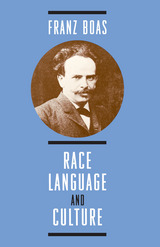 Race, Language, and Culture
Franz Boas
University of Chicago Press, 1940 This volume is a collection of the most important essays written by Franz Boas on the science of anthropology.
"Franz Boas is the father of American anthropology and one of the founders of the field of modern anthropology. The book, Race, Language, and Culture, is a collection of some of his most important essays."—David Schneider, University of Chicago
"An exceptional book. Exceptional because it brings into one volume sixty-two papers written by the most influential figure in American anthropology. . . . Exceptional in that it exhibits the wide range of interests and scientific exactness which made it possible for one man to exert such a profound influence on the growing science of anthropology. . . . This is a volume every student of anthropology will wish to possess; it will also have a wide distribution among other students of the social sciences, and all interested in the problems of race."—Fay-Cooper Cole, American Anthropologist
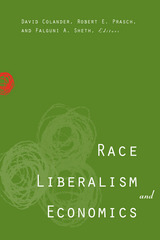 Race, Liberalism, and Economics
David Colander, Robert E. Prasch, and Falguni A. Sheth, Editors
University of Michigan Press, 2009 Noneconomists often think that economists' approach to race is almost exclusively one of laissez-faire. Racism, Liberalism, and Economics argues that economists' ideas are more complicated. The book considers economists' support of markets in relation to the challenge of race and race relations and argues that their support of laissez-faire has traditionally been based upon a broader philosophical foundation of liberalism and history: what markets have and have not achieved in the past, and how that past relates to the future. The book discusses the concepts of liberalism and racism, the history and use of these terms, and how that history relates to policy issues. It argues that liberalism is consistent with a wide variety of policies and that the broader philosophical issues are central in choosing policies.
The contributors show how the evolution of racist ideas has been a subtle process that is woven into larger movements in the development of scientific thought; economic thinking is embedded in a larger social milieu. Previous discussions of policies toward race have been constrained by that social milieu, and, since World War II, have largely focused on ending legislated and state-sanctioned discrimination. In the past decade, the broader policy debate has moved on to questions about the existence and relative importance of intangible sources of inequality, including market structure, information asymmetries, cumulative processes, and cultural and/or social capital. This book is a product of, and a contribution to, this modern discussion. It is uniquely transdisciplinary, with contributions by and discussions among economists, philosophers, anthropologists, and literature scholars.
The volume first examines the early history of work on race by economists and social scientists more generally. It continues by surveying American economists on race and featuring contributions that embody more modern approaches to race within economics. Finally it explores several important policy issues that follow from the discussion.
". . . adds new insights that contribute significantly to the debate on racial economic inequality in the U.S. The differing opinions of the contributors provide the broad perspective needed to examine this extremely complex issue."
--James Peoples, University of Wisconsin-Milwaukee
"There is an immense economic literature on racial discrimination, employing a variety of models and decomposition methods. This volume makes a unique contribution by focusing on the philosophical assumptions at the root of this analysis and by presenting many sides of the very vigorous debate surrounding these controversial issues."
--Thomas Maloney, University of Utah
"By focusing upon the progress of analytical technique, historians of economic thought have grossly neglected the symbiotic relation of economics to public policy and ideology. This collection of essays offers a most welcome breach of disciplinary apartheid. Seizing upon recent research in the almost forgotten writings about race of Classical economists and their contemporaries, it relates nineteenth-century ideas to current debates about economic discrimination and other manifestations of racism. As the writing is both learned and lively, the book should appeal both to the generally educated reader and to teachers of courses in multiculturalism."
--Melvin Reder, Isidore Brown and Gladys J. Brown Professor Emeritus of Urban and Labor Economics, University of Chicago
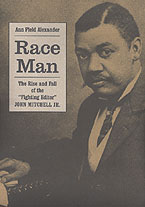 Race Man: The Rise and Fall of the "Fighting Editor," John Mitchell Jr.
Ann Field Alexander
University of Virginia Press, 2002 Although he has largely receded from the public consciousness, John Mitchell Jr., the editor and publisher of the Richmond Planet, was well known to many black, and not a few white, Americans in his day. A contemporary of Booker T. Washington, Mitchell contrasted sharply with Washington in temperament. In his career as an editor, politician, and businessman, Mitchell followed the trajectory of optimism, bitter disappointment, and retrenchment that characterized African American life in the Reconstruction and Jim Crow South.
Best known for his crusade against lynching in the 1880s, Mitchell was also involved in a number of civil rights crusades that seem more contemporary to the 1950s and 1960s than the turn of that century. He led a boycott against segregated streetcars in 1904 and fought residential segregation in Richmond in 1911. His political career included eight years on the Richmond city council, which ended with disenfranchisement in 1896.
As Jim Crow strengthened its hold on the South, Mitchell, like many African American leaders, turned to creating strong financial institutions within the black community. He became a bank president and urged Planet readers to comport themselves as gentlemen, but a year after he ran for governor in 1921, Mitchell's fortunes suffered a drastic reversal. His bank failed, and he was convicted of fraud and sentenced to three years in the state penitentiary. The conviction was overturned on technicalities, but the so-called reforms that allowed state regulation of black businesses had done their worst, and Mitchell died in poverty and some disgrace.
Basing her portrait on thorough primary research conducted over several decades, Ann Field Alexander brings Mitchell to life in all his complexity and contradiction, a combative, resilient figure of protest and accommodation who epitomizes the African American experience in the late nineteenth and early twentieth centuries.
--------------------------------------------------------------------------------
"A masterful biography of one of the most important and interesting African Americans of the late nineteenth and early twentieth centuries. John Mitchell Jr. is a fascinating figure because he was--in his own eyes and in the eyes of many of his contemporaries--larger than life. Race Man will stand as the best, most comprehensive, and most important biography of a southern black editor during the era of Jim Crow."
--Fitzhugh Brundage, University of Florida, author of Lynching in the New South
--------------------------------------------------------------------------------
Ann Field Alexander is Professor of History at Mary Baldwin College and director of the College's regional center in Roanoke, Virginia.
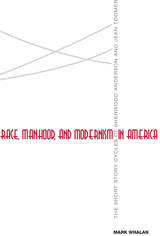 Race, Manhood, and Modernism in America: The Short Story Cycles of Sherwood Anderson and Jean Toomer
Mark Whalan
University of Tennessee Press, 2007 Race, Manhood, and Modernism in America offers the first extended comparison between American writers Sherwood Anderson (1876-1941) and Jean Toomer (1894-1967), examining their engagement with the ideas of “Young American” writers and critics such as Van Wyck Brooks, Paul Rosenfeld, and Waldo Frank. This distinctively modernist school was developing unique visions of how race, gender, and region would be transformed as America entered an age of mass consumerism.
Focusing on Anderson’s Winesburg, Ohio (1919), and Toomer’s Cane (1923), Race, Manhood, and Modernism in America brings Anderson and Toomer together in a way that allows for a thorough historical and social contextualization that is often missing from assessments of these two literary talents and of modernism as a whole. The book suggests how the gay subcultures of Chicago and the traumatic events of the Great War provoked Anderson’s anxieties over the future of male gender identity, anxieties that are reflected in Winesburg, Ohio. Mark Whalan discusses Anderson’s primitivistic attraction to African American communities and his ambivalent attitudes toward race, attitudes that were embedded in the changing cultural and gendered landscape of mass mechanical production.
The book next examines how Toomer aimed to broaden the racial basis of American cultural nationalism, often inspired by the same cultural critics who had influenced Anderson. He rejected the ethnographically based model of tapping the “buried cultures” of ethnic minorities developed by his mentor, Waldo Frank, and also parted with the “folk” aesthetic endorsed by intellectuals of the Harlem Renaissance. Instead, Toomer'’ monumental Cane turned to discourses of physical culture, machine technology, and illegitimacy as ways of conceiving of a new type of manhood that refashioned commonplace notions of racial identity.
Taken together, these discussions provide a fresh, interdisciplinary appraisal of the importance of race to “Young America,” suggest provocative new directions for scholarship, and give new insight into some of the most crucial texts of U.S. interracial modernism.
Mark Whalan is a senior lecturer in American literature and culture at the University of Exeter. He is the editor of The Letters of Jean Toomer, 1919-1924, and his articles have appeared in the Journal of American Studies, Modernism/Modernity, Studies in American Fiction, and Modern Fiction Studies.
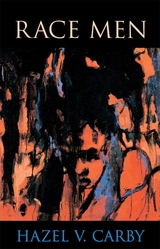 Race Men
Hazel V. Carby
Harvard University Press, 2000 Who are the “race men” standing for black America? It is a question Hazel Carby rejects, along with its long-standing assumption: that a particular type of black male can represent the race. A searing critique of definitions of black masculinity at work in American culture, Race Men shows how these defining images play out socially, culturally, and politically for black and white society—and how they exclude women altogether.
Carby begins by looking at images of black masculinity in the work of W. E. B. Du Bois. Her analysis of The Souls of Black Folk reveals the narrow and rigid code of masculinity that Du Bois applied to racial achievement and advancement—a code that remains implicitly but firmly in place today in the work of celebrated African American male intellectuals. The career of Paul Robeson, the music of Huddie Ledbetter, and the writings of C. L. R. James on cricket and on the Haitian revolutionary, Toussaint L’Ouverture, offer further evidence of the social and political uses of representations of black masculinity.
In the music of Miles Davis and the novels of Samuel R. Delany, Carby finds two separate but related challenges to conventions of black masculinity. Examining Hollywood films, she traces through the career of Danny Glover the development of a cultural narrative that promises to resolve racial contradictions by pairing black and white men—still leaving women out of the picture.
A powerful statement by a major voice among black feminists, Race Men holds out the hope that by understanding how society has relied upon affirmations of masculinity to resolve social and political crises, we can learn to transcend them.
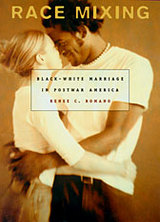 Race Mixing: Black–White Marriage in Postwar America
Renee C. Romano
Harvard University Press, 2003 Marriage between blacks and whites is a longstanding and deeply ingrained taboo in American culture. On the eve of World War II, mixed-race marriage was illegal in most states, politicians argued for segregated facilities in order to prevent race mixing, and interracial couples risked public hostility, legal action, even violence. Yet, sixty years later, black-white marriage is no longer illegal or a divisive political issue, and the number of such couples and their mixed-race children has risen dramatically. Renee Romano explains how and why such marriages have gained acceptance, and what this tells us about race relations in contemporary America.
Although significant numbers of both blacks and whites still oppose interracial marriage, larger historical forces have greatly diminished overt racism and shaped a new consciousness about mixed-race families. The social revolutions of the 1950s and '60s (with their emphasis on individualism and nonconformity), the legal sanctions of new civil rights laws, and a decline in the institutional stability of marriage have all contributed to the growing tolerance for interracial relationships. Telling the powerful stories of couples who married across the color line, Romano shows how cultural shifts are lived by individuals, and how they have enabled mixed couples to build supportive communities for themselves and their children.
However, Romano warns that the erosion of this taboo does not mean that racism no longer exists. The history of interracial marriage helps us understand the extent to which America has overcome its racist past, and how much further we must go to achieve meaningful racial equality.
 Race, Nation, and Cultural Memory, Volume 2004
Eliza Jane Reilly and David Serlin, eds.
Duke University Press Traditionalism is the primary mode by which conservatives rewrite history and reshape cultural memory. Traditionalism can be not only a reactionary, even hostile, act; in many instances, it can push back or outright erase the profound contributions of individual actors, social movements, and historic events that expose traditionalism's often illegitimate claims to political or ethical superiority. This issue of RHR is intended as an intervention into the politics of traditionalism. The articles, interviews, and reviews in this special issue help us to historicize the ways in which cultural memories are formed, challenged, and often erased for the sake of political expediency. They also demonstrate how appeals to cultural memory or national mythology can be used to transform the narratives of nationhood. Contributors. Adina Back, Eliza Jane Reilly, Jarod H. Roll, Gary Wilder, Lewis Siegelbaum, R. J. Lambrose
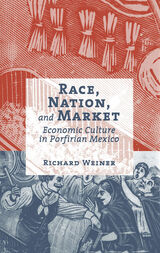 Race, Nation, and Market: Economic Culture in Porfirian Mexico
Richard Weiner
University of Arizona Press, 2004 Prior to the Revolution of 1910, economic ideals were a dominant mode of political and social discourse in Mexico. Scholars have focused considerable attention on the expansion of the market economy during this period—particularly its political, economic, and social importance. Richard Weiner now enhances our understanding of the emergence of modern Mexico by exploring the market's immense symbolic significance. Race, Nation, and Market traces the intellectual strands of economic thought during the late Porfiriato. Even in the face of Díaz's political reign, the market became the dominant theme in national discourse as contemporaries of all political persuasions underscored its social and cultural effects. This work documents the ways in which liberals, radicals, and conservatives employed market rhetoric to establish their political identities and map out their courses of action, and it shows how the market became an emblem linked to the identity of each group. Weiner explains how the dominant political interests—the científicos, the Mexican Liberal Party, and the social Catholics—each conceived economic issues, and he compares how they rhetorically used their conceptions of the market to promote their political objectives. Some worshiped it as a deity that created social peace, political harmony, and material abundance, while others demonized it as a source of social destruction. Weiner delineates their approaches and reveals how distinct notions of race, gender, community, and nationality informed economic culture and contradicted a laissez-faire conception of society and economy. By focusing on these rhetorical contests, Race, Nation, and Market offers a new perspective on social mobilization in late nineteenth-century Mexico as it also explores the related field of Porfirian economic culture and thought, about which little thus far has been written. In the face of today's controversy over globalization, it offers a unique historical perspective on the market's long-standing significance to political activism.
 Race, Nature and Culture: An Anthropological Perspective
Peter Wade
Pluto Press, 2002 Since the controversial scientific race theories of the 1930s, anthropologists have generally avoided directly addressing the issue of race, viewing it as a social construct. Challenging this tradition, Peter Wade proposes that anthropologists can in fact play an important role in the study of race.
Wade is critical of contemporary theoretical studies of race formulated within the contexts of colonial history, sociology and cultural studies. Instead he argues for a new direction; one which anthropology is well placed to explore. Taking the study of race beyond Western notions of the individual, Wade argues for new paradigms in social science, in particular in the development of connections between race, sex and gender. An understanding of these issues within an anthropological context, he contends, is vital for defining personhood and identity.
Race is often defined by its reference to biology, 'blood,' genes, nature or essence. Yet these concepts are often left unexamined. Integrating material from the history of science, science studies, and anthropological studies of kinship and new reproductive technologies, as well as from studies of race, Peter Wade explores the meaning of such terms and interrogates the relationship between nature and culture in ideas about race.
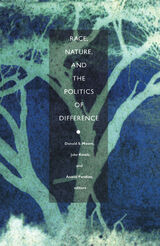 Race, Nature, and the Politics of Difference
Donald S. Moore, Jake Kosek, and Anand Pandian, eds.
Duke University Press, 2003 How do race and nature work as terrains of power? From eighteenth-century claims that climate determined character to twentieth-century medical debates about the racial dimensions of genetic disease, concepts of race and nature are integrally connected, woven into notions of body, landscape, and nation. Yet rarely are these complex entanglements explored in relation to the contemporary cultural politics of difference. This volume takes up that challenge. Distinguished contributors chart the traffic between race and nature across sites including rainforests, colonies, and courtrooms. Synthesizing a number of fields—anthropology, cultural studies, and critical race, feminist, and postcolonial theory—this collection analyzes diverse historical, cultural, and spatial locations. Contributors draw on thinkers such as Fanon, Foucault, and Gramsci to investigate themes ranging from exclusionary notions of whiteness and wilderness in North America to linguistic purity in Germany. Some essayists focus on the racialized violence of imperial rule and evolutionary science and the biopolitics of race and class in the Guatemalan civil war. Others examine how race and nature are fused in biogenetic discourse—in the emergence of “racial diseases” such as sickle cell anemia, in a case of mistaken in vitro fertilization in which a white couple gave birth to a black child, and even in the world of North American dog breeding. Several essays tackle the politics of representation surrounding environmental justice movements, transnational sex tourism, and indigenous struggles for land and resource rights in Indonesia and Brazil.
Contributors. Bruce Braun, Giovanna Di Chiro, Paul Gilroy, Steven Gregory, Donna Haraway, Jake Kosek, Tania Murray Li, Uli Linke, Zine Magubane, Donald S. Moore, Diane Nelson, Anand Pandian, Alcida Rita Ramos, Keith Wailoo, Robyn Wiegman
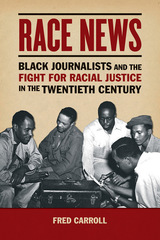 Race News: Black Journalists and the Fight for Racial Justice in the Twentieth Century
Fred Carroll
University of Illinois Press, 2017 Once distinct, the commercial and alternative black press began to crossover with one another in the 1920s. The porous press culture that emerged shifted the political and economic motivations shaping African American journalism. It also sparked disputes over radical politics that altered news coverage of some of the most momentous events in African American history. Starting in the 1920s, Fred Carroll traces how mainstream journalists incorporated coverage of the alternative press's supposedly marginal politics of anti-colonialism, anti-capitalism, and black separatism into their publications. He follows the narrative into the 1950s, when an alternative press re-emerged as commercial publishers curbed progressive journalism in the face of Cold War repression. Yet, as Carroll shows, journalists achieved significant editorial independence, and continued to do so as national newspapers modernized into the 1960s. Alternative writers' politics seeped into commercial papers via journalists who wrote for both presses and through professional friendships that ignored political boundaries. Compelling and incisive, Race News reports the dramatic history of how black press culture evolved in the twentieth century.
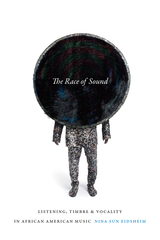 The Race of Sound: Listening, Timbre, and Vocality in African American Music
Nina Sun Eidsheim
Duke University Press, 2018 In The Race of Sound Nina Sun Eidsheim traces the ways in which sonic attributes that might seem natural, such as the voice and its qualities, are socially produced. Eidsheim illustrates how listeners measure race through sound and locate racial subjectivities in vocal timbre—the color or tone of a voice. Eidsheim examines singers Marian Anderson, Billie Holiday, and Jimmy Scott as well as the vocal synthesis technology Vocaloid to show how listeners carry a series of assumptions about the nature of the voice and to whom it belongs. Outlining how the voice is linked to ideas of racial essentialism and authenticity, Eidsheim untangles the relationship between race, gender, vocal technique, and timbre while addressing an undertheorized space of racial and ethnic performance. In so doing, she advances our knowledge of the cultural-historical formation of the timbral politics of difference and the ways that comprehending voice remains central to understanding human experience, all the while advocating for a form of listening that would allow us to hear singers in a self-reflexive, denaturalized way.
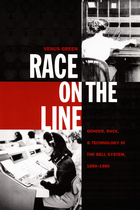 Race on the Line: Gender, Labor, and Technology in the Bell System, 1880–1980
Venus Green
Duke University Press, 2001 Race on the Line is the first book to address the convergence of race, gender, and technology in the telephone industry. Venus Green—a former Bell System employee and current labor historian—presents a hundred year history of telephone operators and their work processes, from the invention of the telephone in 1876 to the period immediately before the break-up of the American Telephone and Telegraph Company in 1984. Green shows how, as technology changed from a manual process to a computerized one, sexual and racial stereotypes enabled management to manipulate both the workers and the workplace.
More than a simple story of the impact of technology, Race on the Line combines oral history, personal experience, and archival research to weave a complicated history of how skill is constructed and how its meanings change within a rapidly expanding industry. Green discusses how women faced an environment where male union leaders displayed economic as well as gender biases and where racism served as a persistent system of division. Separated into chronological sections, the study moves from the early years when the Bell company gave both male and female workers opportunities to advance; to the era of the “white lady” image of the company, when African American women were excluded from the industry and feminist working-class consciousness among white women was consequently inhibited; to the computer era, a time when black women had waged a successful struggle to integrate the telephone operating system but faced technological displacement and unrewarding work.
An important study of working-class American women during the twentieth century, this book will appeal to a wide audience, particularly students and scholars with interest in women’s history, labor history, African American history, the history of technology, and business history.
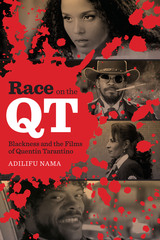 Race on the QT: Blackness and the Films of Quentin Tarantino
By Adilifu Nama
University of Texas Press, 2015 Winner, Ray & Pat Browne Award for Best Reference/Primary Source Work in Popular and American Culture, Popular Culture Association/American Culture Association, 2016 Known for their violence and prolific profanity, including free use of the n-word, the films of Quentin Tarantino, like the director himself, chronically blurt out in polite company what is extremely problematic even when deliberated in private. Consequently, there is an uncomfortable and often awkward frankness associated with virtually all of Tarantino’s films, particularly when it comes to race and blackness. Yet beyond the debate over whether Tarantino is or is not racist is the fact that his films effectively articulate racial anxieties circulating in American society as they engage longstanding racial discourses and hint at emerging trends. This radical racial politics—always present in Tarantino’s films but kept very much on the quiet—is the subject of Race on the QT. Adilifu Nama concisely deconstructs and reassembles the racial dynamics woven into Reservoir Dogs, True Romance, Pulp Fiction, Jackie Brown, Kill Bill: Vol. 1, Kill Bill: Vol. 2, Death Proof, Inglourious Basterds, and Django Unchained, as they relate to historical and current racial issues in America. Nama’s eclectic fusion of cultural criticism and film analysis looks beyond the director’s personal racial attitudes and focuses on what Tarantino’s filmic body of work has said and is saying about race in America symbolically, metaphorically, literally, impolitely, cynically, sarcastically, crudely, controversially, and brilliantly.
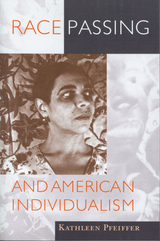 Race Passing and American Individualism
Kathleen Pfeiffer
University of Massachusetts Press, 2009 In the literature of late nineteenth- and early twentieth-century America, black characters who pass for white embody a paradox. By virtue of the "one drop" rule that long governed the nation's race relations, they are legally black. Yet the color of their skin makes them visibly-and therefore socially-white.
In this book, Kathleen Pfeiffer explores the implications of this dilemma by analyzing its treatment in the fiction of six writers: William Dean Howells, Frances E. W. Harper, Jean Toomer, James Weldon Johnson, Jessie Fauset, and Nella Larsen. Although passing for white has sometimes been viewed as an expression of racial self-hatred or disloyalty, Pfeiffer argues that the literary evidence is much more ambiguous than that. Rather than indicating a denial of "blackness" or co-optation by the dominant white culture, passing can be viewed as a form of self-determination consistent with American individualism. In their desire to manipulate personal identity in order to achieve social acceptance and upward mobility, light-skinned blacks who pass for white are no different than those Americans who reinvent themselves in terms of class, religion, or family history.
In Pfeiffer's view, to see race passing as a problematic but potentially legitimate expression of individualism is to invite richer and more complex readings of a broad range of literary texts. More than that, it represents a challenge to the segregationist logic of the "one drop" rule and, as such, subverts the ideology of racial essentialism.
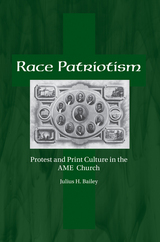 Race Patriotism: Protest and Print Culture in the A.M.E. Church
Julius H. Bailey
University of Tennessee Press, 2012
Race Patriotism: Protest and Print Culture in the A.M.E. Church examines important nineteenth-century social issues through the lens of the AME Church and its publications. This book explores the ways in which leaders and laity constructed historical narratives around varied locations to sway public opinion of the day. Drawing on the official church newspaper, the Christian Recorder, and other denominational and rare major primary sources, Bailey goes beyond previously published works that focus solely on the founding era of the tradition or the eastern seaboard or post-bellum South to produce a work than breaks new historiographical ground by spanning the entirety of the nineteenth century and exploring new geographical terrain such as the American West.
Through careful analysis of AME print culture, Bailey demonstrates that far from focusing solely on the “politics of uplift” and seeking to instill bourgeois social values in black society as other studies have suggested, black authors, intellectuals, and editors used institutional histories and other writings for activist purposes and reframed protest in new ways in the postbellum period.
Adding significantly to the literature on the history of the book and reading in the nineteenth century, Bailey examines AME print culture as a key to understanding African American social reform recovering the voices of black religious leaders and writers to provide a more comprehensive and nuanced portrayal of the central debates and issues facing African Americans in the nineteenth century such as migration westward, selecting the appropriate referent for the race, Social Darwinism, and the viability of emigration to Africa. Scholars and students of religious studies, African American studies, American studies, history, and journalism will welcome this pioneering new study.
Julius H. Bailey is the author of Around the Family Altar: Domesticity in the African Methodist Episcopal Church, 1865–1900. He is an associate professor in the Religious Studies Department at the University of Redlands in Redlands, California.
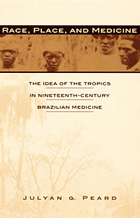 Race, Place, and Medicine: The Idea of the Tropics in Nineteenth-Century Brazil
Julyan G. Peard
Duke University Press, 1999 Race, Place, and Medicine examines the impact of a group of nineteenth-century Brazilian physicians who became known posthumously as the Bahian Tropicalista School of Medicine. Julyan G. Peard explores how this group of obscure clinicians became participants in an international debate as they helped change the scientific framework and practices of doctors in Brazil. Peard shows how the Tropicalistas adapted Western medicine and challenged the Brazilian medical status quo in order to find new answers to the old question of whether the diseases of warm climates were distinct from those of temperate Europe. They carried out innovative research on parasitology, herpetology, and tropical disorders, providing evidence that countered European assumptions about Brazilian racial and cultural inferiority. In the face of European fatalism about health care in the tropics, the Tropicalistas forged a distinctive medicine based on their beliefs that public health would improve only if large social issues—such as slavery and abolition—were addressed and that the delivery of health care should encompass groups hitherto outside the doctors’ sphere, especially women. But the Tropicalistas’ agenda, which included biting social critiques and broad demands for the extension of health measures to all of Brazil’s people, was not sustained. Race, Place, and Medicine shows how imported models of tropical medicine—constructed by colonial nations for their own needs—downplayed the connection between socioeconomic factors and tropical disorders. This study of a neglected episode in Latin American history will interest Brazilianists, as well as scholars of Latin American, medical, and scientific history.
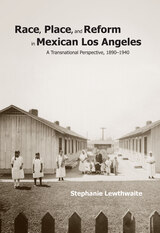 Race, Place, and Reform in Mexican Los Angeles: A Transnational Perspective, 1890-1940
Stephanie Lewthwaite
University of Arizona Press, 2009 Beginning near the end of the nineteenth century, a generation of reformers set their sights on the growing Mexican community in Los Angeles. Experimenting with a variety of policies on health, housing, education, and labor, these reformers—settlement workers, educationalists, Americanizers, government officials, and employers—attempted to transform the Mexican community with a variety of distinct and often competing agendas.
In Race, Place, and Reform in Mexican Los Angeles, Stephanie Lewthwaite presents evidence from a myriad of sources that these varied agendas of reform consistently supported the creation of racial, ethnic, and cultural differences across Los Angeles. Reformers simultaneously promoted acculturation and racialization, creating a “landscape of difference” that significantly shaped the place and status of Mexican immigrants and Mexican Americans from the Progressive era through the New Deal.
The book journeys across the urban, suburban, and rural spaces of Greater Los Angeles as it moves through time and examines the rural–urban migration of Mexicans on both a local and a transnational scale. Part 1 traverses the world of Progressive reform in urban Los Angeles, exploring the link between the region’s territorial and industrial expansion, early campaigns for social and housing reform, and the emergence of a first-generation Mexican immigrant population. Part 2 documents the shift from official Americanization and assimilation toward nativism and exclusion. Here Lewthwaite examines competing cultures of reform and the challenges to assimilation from Mexican nationalists and American nativists. Part 3 analyzes reform during the New Deal, which spawned the active resistance of second-generation Mexican Americans.
Race, Place, and Reform in Mexican Los Angeles achieves a full, broad, and nuanced account of the various—and often contradictory—efforts to reform the Mexican population of Los Angeles. With a transnational approach grounded in historical context, this book will appeal to students of history, cultural studies, and literary studies
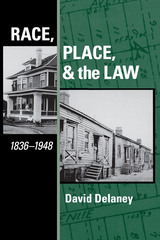 Race, Place, and the Law, 1836-1948
By David Delaney
University of Texas Press, 1998 Black and white Americans have occupied separate spaces since the days of "the big house" and "the quarters." But the segregation and racialization of American society was not a natural phenomenon that "just happened." The decisions, enacted into laws, that kept the races apart and restricted blacks to less desirable places sprang from legal reasoning which argued that segregated spaces were right, reasonable, and preferable to other arrangements. In this book, David Delaney explores the historical intersections of race, place, and the law. Drawing on court cases spanning more than a century, he examines the moves and countermoves of attorneys and judges who participated in the geopolitics of slavery and emancipation; in the development of Jim Crow segregation, which effectively created apartheid laws in many cities; and in debates over the "doctrine of changed conditions," which challenged the legality of restrictive covenants and private contracts designed to exclude people of color from white neighborhoods. This historical investigation yields new insights into the patterns of segregation that persist in American society today.
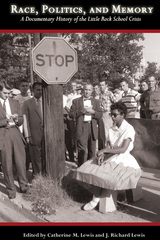 Race, Politics, and Memory: A Documentary History of the Little Rock School Crisis
Catherine M. Lewis
University of Arkansas Press, 2007 In 1957, President Dwight D. Eisenhower and Arkansas governor Orval Faubus viewed the desegregation of Little Rock Central High through very different lenses. The president worried that displays of rampant racism tarnished the nation's reputation as a global power and undermined efforts to thwart the spread of communism. The governor sided with his segregationist constituents to guarantee his political survival. For the nine teenagers caught in the middle, Central High was a cauldron of racial tension. These students represented the black and moderate-white community’s desire for social justice. The documents collected in this book–newspaper articles, political cartoons, excerpts from oral histories and memoirs, speeches, photographs, and editorials–help readers understand how this local, southern conflict became a national and international cause. The documents selected cover the period 1900–2006. Some have never been published before or are in out-of-print sources. Each reveals something significant about the event and its aftermath, while some offer an unconventional or unexpected perspective on the crisis and the issues it raised. A timeline, a list of key players in the crisis, and a selected, annotated bibliography are included.
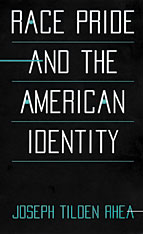 Race Pride and the American Identity
Joseph Tilden Rhea
Harvard University Press, 1997 At the close of the twentieth century American society is more diverse and tolerant than ever, yet haunted by the threat of ethnic fragmentation. Race Pride and the American Identity describes the rise of multiculturalism in America, identifying the political forces which in the last thirty years have created a country that is both pluralistic and factionalized.
In the wake of the Civil Rights movement, minority activists challenged universities, museums, and other institutions to expand their representation of minority heritage. Joseph Tilden Rhea argues that such struggles for cultural representation constitute a distinct social movement, which he terms the Race Pride movement. While the earlier Civil Rights movement focused on obtaining legal inclusion, the Race Pride movement aimed at achieving cultural inclusion.
After thirty years of Race Pride activism, multiculturalism is now the mainstream. However, Rhea suggests that multiculturalism's emphasis on diversity is not sufficient to solve America's racial problems. He concludes that Americans must now move beyond the celebration of difference by also affirming what is shared in the American experience.
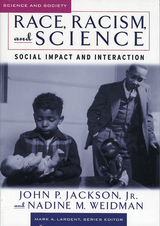 Race, Racism, and Science: Social Impact and Interaction
Jackson, John P
Rutgers University Press, 2005 Since the eighteenth century when natural historians created the idea of distinct racial categories, scientific findings on race have been a double-edged sword. For some antiracists, science holds the promise of one day providing indisputable evidence to help eradicate racism. On the other hand, science has been enlisted to promote racist beliefs ranging from a justification of slavery in the eighteenth century to the infamous twentieth-century book, The Bell Curve,whose authors argued that racial differences in intelligence resulted in lower test scores for African Americans. This well-organized, readable textbook takes the reader through a chronological account of how and why racial categories were created and how the study of “race” evolved in multiple academic disciplines, including genetics, psychology, sociology, and anthropology. In a bibliographic essay at the conclusion of each of the book’s seven sections, the authors recommend primary texts that will further the reader’s understanding of each topic. Heavily illustrated and enlivened with sidebar biographies, this text is ideal for classroom use.
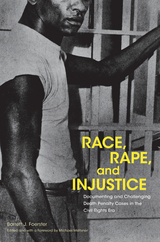 Race, Rape, and Injustice: Documenting and Challenging Death Penalty Cases in the Civil Rights Era
Barrett J. Foerster
University of Tennessee Press, 2012 This book tells the dramatic story of twenty-eight law students—one of whom was the author—who went south at the height of the civil rights era and helped change death penalty jurisprudence forever.
The 1965 project was organized by the NAACP Legal Defense and Educational Fund, which sought to prove statistically whether capital punishment in southern rape cases had been applied discriminatorily over the previous twenty years. If the research showed that a disproportionate number of African Americans convicted of raping white women had received the death penalty regardless of nonracial variables (such as the degree of violence used), then capital punishment in the South could be abolished as a clear violation of the Fourteenth Amendment’s Equal Protection Clause.
Targeting eleven states, the students cautiously made their way past suspicious court clerks, lawyers, and judges to secure the necessary data from dusty courthouse records. Trying to attract as little attention as possible, they managed—amazingly—to complete their task without suffering serious harm at the hands of white supremacists. Their findings then went to University of Pennsylvania criminologist Marvin Wolfgang, who compiled and analyzed the data for use in court challenges to death penalty convictions. The result was powerful evidence that thousands of jurors had voted on racial grounds in rape cases.
This book not only tells Barrett Foerster’s and his teammates story but also examines how the findings were used before a U.S. Supreme Court resistant to numbers-based arguments and reluctant to admit that the justice system had executed hundreds of men because of their skin color. Most important, it illuminates the role the project played in the landmark Furman v. Georgia case, which led to a four-year cessation of capital punishment and a more limited set of death laws aimed at constraining racial discrimination.
A Virginia native who studied law at UCLA, BARRETT J. FOERSTER (1942–2010) was a judge in the Superior Court in Imperial County, California.
MICHAEL MELTSNER is the George J. and Kathleen Waters Matthews Distinguished Professor of Law at Northeastern University. During the 1960s, he was first assistant counsel to the NAACP Legal Defense Fund. His books include The Making of a Civil Rights Lawyer and Cruel and Unusual: The Supreme Court and Capital Punishment.
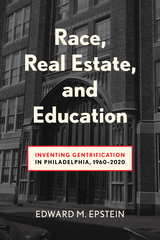 Race, Real Estate and Education: Inventing Gentrification in Philadelphia, 1960-2020
Edward M. Epstein
Temple University Press, 2025 Philadelphia’s urban renewal efforts in the 1950s, which re-envisioned the city as a residential enclave, were an early example of gentrification. In West Philadelphia in the 1960s, a coalition of universities and hospitals went further, initiating K-12 public school improvements meant to attract an affluent and whiter population. As Edward Epstein details in Race, Real Estate, and Education, these interventions discounted the negative impact they could have on neighborhood residents.
Epstein outlines the citywide context for the plan to create “University City” in West Philadelphia. He recounts the attempts to correct the segregation, overcrowding, and authoritarian management that plagued Philadelphia’s public schools. As the West Philadelphia Corporation, the proxy for the universities and hospitals, initiated gentrification efforts, the local community resisted and protested, causing the project to fail. The effort was revived with spectacular success, however, with the launch of the well-funded Penn Alexander School in 2001.
Race, Real Estate, and Education shows how the pursuit of urbanist ideals sometimes deepens neighborhood injustice. Epstein’s exploration of whether Philadelphia’s overall approach was beneficial or misguided presents a cautionary tale.
In the series Urban Life, Landscape, and Policy
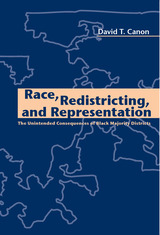 Race, Redistricting, and Representation: The Unintended Consequences of Black Majority Districts
David T. Canon
University of Chicago Press, 1999 Since the creation of minority-dominated congressional districts eight years ago, the Supreme Court has condemned the move as akin to "political apartheid," while many African-American leaders argue that such districts are required for authentic representation.
In the most comprehensive treatment of the subject to date, David Canon shows that the unintended consequences of black majority districts actually contradict the common wisdom that whites will not be adequately represented in these areas. Not only do black candidates need white votes to win, but this crucial "swing" vote often decides the race. And, once elected, even the black members who appeal primarily to black voters usually do a better job than white members of walking the racial tightrope, balancing the needs of their diverse constituents.
Ultimately, Canon contends, minority districting is good for the country as a whole. These districts not only give African Americans a greater voice in the political process, they promote a politics of commonality—a biracial politics—rather than a politics of difference.
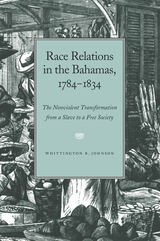 Race Relations in the Bahamas, 1784-1834: The Nonviolent Transformation from a Slave to a Free Society
Whittington Johnson
University of Arkansas Press, 2000 This deeply researched, clearly written book is a history of black society and its relations with whites in the Bahamas from the close of the American Revolution to emancipation. Whittington B. Johnson examines the communities developed by free, bonded, and mixed-race blacks on the islands as British colonists and American loyalists unsuccessfully tried to establish a plantation economy. The author explores how relations between the races developed civilly in this region, contrasting it with the harsher and more violent experiences of other Caribbean islands and the American South. Interpreting church documents and Colonial Office papers in a new light, Johnson presents a more favorable conclusion than previously advanced about the conditions endured by victims of the African Diaspora and by Creoles in the Bahama Islands. He makes use of an impressive and important body of archival and secondary research. Race Relations in the Bahamas will be a book of great interest to southern historians, historians of slave societies and black communities, scholars of race relations, and general readers.
 Race, Religion, and Black Lives Matter: Essays on a Moment and a Movement
Christopher Cameron
Vanderbilt University Press, 2021 Black Lives Matter, like its predecessor movements, embodies flesh and blood through local organizing, national and global protests, hunger strikes, and numerous acts of civil disobedience. Chants like “All night! All day! We’re gonna fight for Freddie Gray!” and “No justice, no fear! Sandra Bland is marching here!” give voice simultaneously to the rage, truth, hope, and insurgency that sustain BLM. While BLM has generously welcomed a broad group of individuals whom religious institutions have historically resisted or rejected, contrary to general perceptions, religion neither has been absent nor excluded from the movement’s activities.
This volume has a simple, but far-reaching argument: religion is an important thread in BLM. To advance this claim, Race, Religion, and Black Lives Matter examines religion’s place in the movement through the lenses of history, politics, and culture. While this collection is not exhaustive or comprehensive in its coverage of religion and BLM, it selectively anthologizes unique aspects of Black religious history, thought, and culture in relation to political struggle in the contemporary era. The chapters aim to document historical change in light of current trends and current events. The contributors analyze religion and BLM in a current historical moment fraught with aggressive, fascist, authoritarian tendencies and one shaped by profound ingenuity, creativity, and insightful perspectives on Black history and culture.
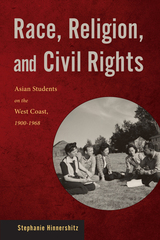 Race, Religion, and Civil Rights: Asian Students on the West Coast, 1900-1968
Hinnershitz, Stephanie
Rutgers University Press, 2015 Histories of civil rights movements in America generally place little or no emphasis on the activism of Asian Americans. Yet, as this fascinating new study reveals, there is a long and distinctive legacy of civil rights activism among foreign and American-born Chinese, Japanese, and Filipino students, who formed crucial alliances based on their shared religious affiliations and experiences of discrimination.
Stephanie Hinnershitz tells the story of the Asian American campus organizations that flourished on the West Coast from the 1900s through the 1960s. Using their faith to point out the hypocrisy of fellow American Protestants who supported segregation and discriminatory practices, the student activists in these groups also performed vital outreach to communities outside the university, from Californian farms to Alaskan canneries. Highlighting the unique multiethnic composition of these groups, Race, Religion, and Civil Rights explores how the students' interethnic activism weathered a variety of challenges, from the outbreak of war between Japan and China to the internment of Japanese Americans during World War II.
Drawing from a variety of archival sources to bring forth the authentic, passionate voices of the students, Race, Religion, and Civil Rights is a testament to the powerful ways they served to shape the social, political, and cultural direction of civil rights movements throughout the West Coast.
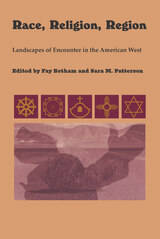 Race, Religion, Region: Landscapes of Encounter in the American West
Edited by Fay Botham and Sara M. Patterson
University of Arizona Press, 2006 Racial and religious groups have played a key role in shaping the American West, yet scholars have for the most part ignored how race and religion have influenced regional identity. In this collection, eleven contributors explore the intersections of race, religion, and region to show how they transformed the West. From the Punjabi Mexican Americans of California to the European American shamans of Arizona to the Mexican Chinese of the borderlands, historical meanings of race in the American West are complex and are further complicated by religious identities.
This book moves beyond familiar stereotypes to achieve a more nuanced understanding of race while also showing how ethnicity formed in conjunction with religious and regional identity. The chapters demonstrate how religion shaped cultural encounters, contributed to the construction of racial identities, and served as a motivating factor in the lives of historical actors. The opening chapters document how religion fostered community in Los Angeles in the first half of the twentieth century. The second section examines how physical encounters—such as those involving Chinese immigrants, Hermanos Penitentes, and Pueblo dancers—shaped religious and racial encounters in the West. The final essays investigate racial and religious identity among the Latter-day Saints and southern California Muslims. As these contributions clearly show, race, religion, and region are as critical as gender, sexuality, and class in understanding the melting pot that is the West. By depicting the West as a unique site for understanding race and religion, they open a new window on how we view all of America.
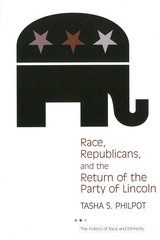 Race, Republicans, and the Return of the Party of Lincoln
Tasha S. Philpot
University of Michigan Press, 2007 Whether their slogan is “compassionate conservatism” or “hawkish liberalism,” political parties have always sought to expand their electoral coalitions by making minor adjustments to their public image. How do voters respond to these, often short-term, campaign appeals? Race, Republicans, and the Return of the Party of Lincoln is Tasha Philpot’s insightful study of how parties use racial images to shape and reshape the way citizens perceive them. “Philpot has produced a timely, provocative, and nuanced analysis of political party image change, using the Republican Party’s attempts to recast itself as a party sensitive to issues of race with its 2000, and later 2004, national conventions as case examples. Using a mixture of experiments, focus groups, national surveys, and analyses of major national and black newspaper articles, Philpot finds that if race-related issues are important to individuals, such as blacks, the ability of the party to change its image without changing its political positions is far more difficult than it is among individuals who do not consider race-related issues important, e.g., whites. This book makes a major contribution to our understanding of party image in general, and political parties’ use of race in particular. Bravo!” —Paula D. McClain, Duke University “This book does an excellent job of illuminating the linkages between racial images and partisan support. By highlighting Republican efforts to ‘play against type’ Philpot emphasizes the limits of successfully altering partisan images. That she accomplishes this in the controversial, yet salient, domain of race is no small feat. In short, by focusing on a topical issue, and by adopting a novel theoretical approach, Philpot is poised to make a significant contribution to the literatures on race and party images.” —Vincent Hutchings, University of Michigan Tasha S. Philpot is Assistant Professor of Government and African and African American Studies at the University of Texas at Austin.
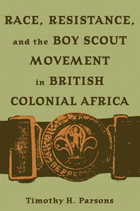 Race, Resistance, and the Boy Scout Movement in British Colonial Africa: In British Colonial Africa
Timothy H. Parsons
Ohio University Press, 2004 Conceived by General Sir Robert Baden-Powell as a way to reduce class tensions in Edwardian Britain, scouting evolved into an international youth movement. It offered a vision of romantic outdoor life as a cure for disruption caused by industrialization and urbanization. Scouting’s global spread was due to its success in attaching itself to institutions of authority. As a result, scouting has become embroiled in controversies in the civil rights struggle in the American South, in nationalist resistance movements in India, and in the contemporary American debate over gay rights. In Race, Resistance, and the Boy Scout Movement in British Colonial Africa, Timothy Parsons uses scouting as an analytical tool to explore the tensions in colonial society. Introduced by British officials to strengthen their rule, the movement targeted the students, juvenile delinquents, and urban migrants who threatened the social stability of the regime. Yet Africans themselves used scouting to claim the rights of full imperial citizenship. They invoked the Fourth Scout Law, which declared that a scout was a brother to every other scout, to challenge racial discrimination. Parsons shows that African scouting was both an instrument of colonial authority and a subversive challenge to the legitimacy of the British Empire. His study of African scouting demonstrates the implications and far-reaching consequences of colonial authority in all its guises.
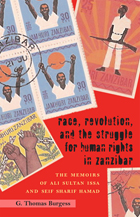 Race, Revolution, and the Struggle for Human Rights in Zanzibar: The Memoirs of Ali Sultan Issa and Seif Sharif Hamad
G. Thomas Burgess
Ohio University Press, 2009 Zanzibar has had the most turbulent postcolonial history of any part of the United Republic of Tanzania, yet few sources explain the reasons why. The current political impasse in the islands is a contest over the question of whether to revere and sustain the Zanzibari Revolution of 1964, in which thousands of islanders, mostly Arab, lost their lives. It is also about whether Zanzibar’s union with the Tanzanian mainland—cemented only a few months after the revolution—should be strengthened, reformed, or dissolved. Defenders of the revolution claim it was necessary to right a century of wrongs. They speak the language of African nationalism and aspire to unify the majority of Zanzibaris through the politics of race. Their opponents instead deplore the violence of the revolution, espouse the language of human rights, and claim the revolution reversed a century of social and economic development. They reject the politics of race, regarding Islam as a more worthy basis for cultural and political unity.
From a series of personal interviews conducted over several years, Thomas Burgess has produced two highly readable first-person narratives in which two nationalists in Africa describe their conflicts, achievements, failures, and tragedies. Their life stories represent two opposing arguments, for and against the revolution. Ali Sultan Issa traveled widely in the 1950s and helped introduce socialism into the islands. As a minister in the first revolutionary government he became one of Zanzibar’s most controversial figures, responsible for some of the government’s most radical policies. After years of imprisonment, he reemerged in the 1990s as one of Zanzibar’s most successful hotel entrepreneurs. Seif Sharif Hamad came of age during the revolution and became disenchanted with its broken promises and excesses. In the 1980s he emerged as a reformist minister, seeking to roll back socialism and authoritarian rule. After his imprisonment he has ever since served as a leading figure in what has become Tanzania’s largest opposition party
As Burgess demonstrates in his introduction, both memoirs trace Zanzibar’s postindependence trajectory and reveal how Zanzibaris continue to dispute their revolutionary heritage and remain divided over issues of memory, identity, and whether to remain a part of Tanzania. The memoirs explain how conflicts in the islands have become issues of national importance in Tanzania, testing that state’s commitment to democratic pluralism. They engage our most basic assumptions about social justice and human rights and shed light on a host of themes key to understanding Zanzibari history that are also of universal relevance, including the legacies of slavery and colonialism and the origins of racial violence, poverty, and underdevelopment. They also show how a cosmopolitan island society negotiates cultural influences from Africa, the Middle East, Asia, and Europe.
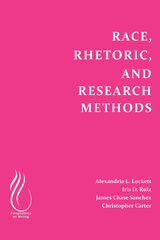 Race, Rhetoric, and Research Methods
Alexandria Lockett
University Press of Colorado, 2021 Race, Rhetoric, and Research Methods explores multiple antiracist, decolonial forms of study that are relevant to 21st-century knowledge production about language, communication, technology, and culture. The book presents a rare collaboration among scholars representing different racial and ethnic backgrounds, genders, and ranks within the field of Rhetoric, Composition, and Writing Studies (RCWS). In each chapter, the authors examine the significance of their individual experiences with race and racism across contexts. Their research engages the politics of embodiment, institutional critique, multimodal rhetoric, materiality, and public digital literacies. The book merges impassioned storytelling with unflinching analysis, offering a multi-voiced argument that spotlights the field's troubled history with theorizing about race and epistemology. Although the authors directly address aspiring and current RCWS professionals, they model how a comprehensive consideration of race adds legitimacy and integrity to any subject of study. This co-authored work charts uncommon paths forward, demonstrating reflexive engagement with legacies that are personal and transnational, as well as with technologies that are both dehumanizing and liberating.
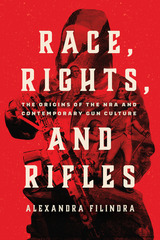 Race, Rights, and Rifles: The Origins of the NRA and Contemporary Gun Culture
Alexandra Filindra
University of Chicago Press, 2023 An eye-opening examination of the ties between American gun culture and white male supremacy from the American Revolution to today. One-third of American adults—approximately 86 million people—own firearms. This is not just for protection or hunting. Although many associate gun-centric ideology with individualist and libertarian traditions in American political culture, Race, Rights, and Rifles shows that it rests on an equally old but different foundation. Instead, Alexandra Filindra shows that American gun culture can be traced back to the American Revolution when republican notions of civic duty were fused with a belief in white male supremacy and a commitment to maintaining racial and gender hierarchies. Drawing on wide-ranging historical and contemporary evidence, Race, Rights, and Rifles traces how this ideology emerged during the Revolution and became embedded in America’s institutions, from state militias to the National Rifle Association (NRA). Utilizing original survey data, Filindra reveals how many White Americans —including those outside of the NRA’s direct orbit—embrace these beliefs, and as a result, they are more likely than other Americans to value gun rights over voting rights, embrace antidemocratic norms, and justify political violence.
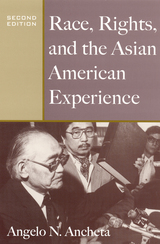 Race, Rights, and the Asian American Experience
Ancheta, Angelo N
Rutgers University Press, 2006 In Race, Rights, and the Asian American Experience, Angelo N. Ancheta demonstrates how United States civil rights laws have been framed by a black-white model of race that typically ignores the experiences of other groups, including Asian Americans. When racial discourse is limited to antagonisms between black and white, Asian Americans often find themselves in a racial limbo, marginalized or unrecognized as full participants.
Ancheta examines legal and social theories of racial discrimination, ethnic differences in the Asian American population, nativism, citizenship, language, school desegregation, and affirmative action. In the revised edition of this influential book, Ancheta also covers post-9/11 anti-Asian sentiment and racial profiling. He analyzes recent legal cases involving political empowerment, language rights, human trafficking, immigrant rights, and affirmative action in higher education-many of which move the country farther away from the ideals of racial justice. On a more positive note, he reports on the progress Asian Americans have made in the corporate sector, politics, the military, entertainment, and academia.
A skillful mixture of legal theories, court cases, historical events, and personal insights, this revised edition brings fresh insights to U.S. civil rights from an Asian American perspective.
 Race, Rights, and the Asian American Experience
Ancheta, Angelo N
Rutgers University Press, 1997
In Race, Rights, and the Asian American Experience, Angelo N. Ancheta demonstrates how United States civil rights laws have been framed by a black-white model of race that typically ignores the experiences of other groups, including Asian Americans. When racial discourse is limited to antagonisms between black and white, Asian Americans often find themselves in a racial limbo, marginalized or unrecognized as full participants.
Ancheta examines legal and social theories of racial discrimination, ethnic differences in the Asian American population, nativism, citizenship, language, school desegregation, and affirmative action. In the second edition of this influential book, Ancheta also covers post–9/11 anti-Asian sentiment and racial profiling. He analyzes recent legal cases involving political empowerment, language rights, human trafficking, immigrant rights, and affirmative action in higher education—many of which move the country farther away from the ideals of racial justice. On a more positive note, he reports on the progress Asian Americans have made in the corporate sector, politics, the military, entertainment, and academia.
A skillful mixture of legal theories, court cases, historical events, and personal insights, this second edition brings fresh insights to U.S. civil rights from an Asian American perspective.
 Race, Rigor, and Selectivity in U.S. Engineering: The History of an Occupational Color Line
Amy E. Slaton
Harvard University Press, 2010 Despite the educational and professional advances made by minorities in recent decades, African Americans remain woefully underrepresented in the fields of science, technology, mathematics, and engineering. Even at its peak, in 2000, African American representation in engineering careers reached only 5.7 percent, while blacks made up 15 percent of the U.S. population. Some forty-five years after the Civil Rights Act sought to eliminate racial differences in education and employment, what do we make of an occupational pattern that perpetually follows the lines of race?
Race, Rigor, and Selectivity in U.S. Engineering pursues this question and its ramifications through historical case studies. Focusing on engineering programs in three settings—in Maryland, Illinois, and Texas, from the 1940s through the 1990s—Amy E. Slaton examines efforts to expand black opportunities in engineering as well as obstacles to those reforms. Her study reveals aspects of admissions criteria and curricular emphases that work against proportionate black involvement in many engineering programs. Slaton exposes the negative impact of conservative ideologies in engineering, and of specific institutional processes—ideas and practices that are as limiting for the field of engineering as they are for the goal of greater racial parity in the profession.
Race Riot at East St. Louis, July 2, 1917
Elliott Rudwick
University of Illinois Press, 1982 ".
. . a well-researched and thoughtful inquiry into the circumstances and
social forces producing one of the most violent of twentieth-century American
race riots."
-- American Historical Review
"His work fills a serious
gap in the history of racial violence in the United States. Never before
analyzed by sociologists in the way that the Chicago and Detroit riots
were, the East St. Louis riot outranked both as measured by the number
of deaths."
-- American Journal of Sociology
Race Riot: CHICAGO IN THE RED SUMMER OF 1919
William M. Tuttle, Jr.
University of Illinois Press, 1996 "The origins of the Chicago race riot of 1919 are to be found, not in high-level policy, but in gut-level animosities between black and white people who were generally inarticulate and presentist-oriented, and who did not record their motivations or feelings for posterity. . . To explain the Chicago riot, this evidence has to be found; and though such evidence is not abundant by any means, it does exist."--From the preface
 Race, Rock, and Elvis
Michael T. Bertrand
University of Illinois Press, 2000 Did Elvis Presley's brand of rock 'n' roll help revise racial attitudes in postwar America? Michael T. Bertrand delves into this question and many others to investigate popular music's revolutionary influence on black-white relations in the South. Youthful fans of rhythm and blues, rock 'n' roll, and other black-inspired music often broke from their segregationist elders and ignored the color line. Not coincidentally, these same young white people--the southern branch of a national and commercialized youth culture--led a general relaxation of racist attitudes. Bertrand argues that African American music facilitated a new recognition of black people as fellow human beings. African American audiences welcomed Elvis with enthusiasm while racially mixed audiences flocked to music venues at a time when adults expected separate performances for black and white audiences. Bertrand also describes the critical role of radio and recordings in making African American culture available to white fans on an unprecedented scale. Over time, southern working-class youth used the new music to define and express new values and build their own identities.
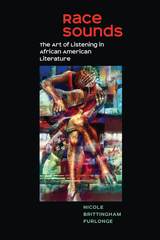 Race Sounds: The Art of Listening in African American Literature
Nicole Brittingham Furlonge
University of Iowa Press, 2018 We live in a world of talk. Yet Race Sounds argues that we need to listen more—not just hear things, but actively listen—particularly in relation to how we engage race, gender, and class differences. Forging new ideas about the relationship between race and sound, Furlonge explores how black artists—including well-known figures such as writers Ralph Ellison and Zora Neale Hurston, and singers Bettye LaVette and Aretha Franklin, among others—imagine listening. Drawing from a multimedia archive, Furlonge examines how many of the texts call on readers to “listen in print.” In the process, she gives us a new way to read and interpret these canonical, aurally inflected texts, and demonstrates how listening allows us to engage with the sonic lives of difference as readers, thinkers, and citizens. Intervening in discourses of African American and black feminist literatures, where sound and voice dominate, Furlonge shifts our attention to listening as an aural strategy of cultural, social, and civic engagement that not only enlivens how we read, write, and critique texts, but also informs how we might be more effective audiences for each other and against injustice in our midst. The result is a fascinating examination that brings new insights to African American literature and art, American literature, democratic philosophy, and sound studies.
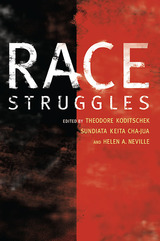 Race Struggles
Edited by Theodore Koditschek, Sundiata Keita Cha-Jua, and Helen A. Neville
University of Illinois Press, 2008 This collection is a contribution to the ongoing examination of race and its relation to class and gender. The essays in the volume start with the premise that although race, like class and gender, is socially constructed, all three categories have been shaped profoundly by their context in a capitalist society. Race, in other words, is a historical category that develops not only in dialectical relation to class and gender but also in relation to the material conditions in which all three are forged. These assumptions underlie the organization of the volume, which is divided into three parts: "Racial Structures," which explores the problem of how race has historically been structured in modern capitalist societies; "Racial Ideology and Identity," which tackles diverse but interrelated questions regarding the representation of race and racism in dominant ideologies and discourses; and "Struggle," which builds on the insight that resistance to structures and ideologies of racial oppression is always situated in a particular time and place. In addition to discussing and analyzing various dimensions of the African American experience, contributors also consider the ways in which race plays itself out in the experience of Asian Americans and in the very different geopolitical environments of the British Empire and postcolonial Africa. Contributors are Pedro Cabán, Sundiata Keita Cha-Jua, David Crockett, Theodore Koditschek, Scott Kurashige, Clarence Lang, Minkah Makalani, Helen A. Neville, Tola Olu Pearce, David Roediger, Monica M. White, and Jeffrey Williams.
 Race Talk in a Mexican Cantina
Tatcho Mindiola
Michigan State University Press, 2021 People avoid speaking about race in the presence of another racial group for fear of saying something wrong and creating friction. This was not the situation at JB’s, a small Mexican cantina located in one of Houston’s oldest Mexican barrios. Mexicans made up most of the regular patrons, but a small number of whites also visited the bar on a regular basis. This situation created the circumstances for race talk in which the Mexican patrons needled and criticized the white patrons because of their whiteness. The white patrons likewise criticized the Mexican patrons, but their remarks were not as strident in comparison to those they received. When Tatcho Mindiola visited the bar and heard the race talk, he realized that it was a unique situation. He thus became a regular patron, and over a three-year period kept notes on the racial exchanges he observed and heard, which form the basis of this insightful volume.
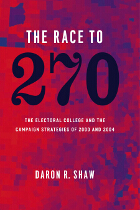 The Race to 270: The Electoral College and the Campaign Strategies of 2000 and 2004
Daron R. Shaw
University of Chicago Press, 2006 The Electoral College has played an important role in presidential politics since our nation’s founding, but surprisingly little information exists about precisely how it affects campaign strategy. Daron R. Shaw, a scholar who also worked as a strategist in both Bush-Cheney campaigns, has written the first book to go inside the past two presidential elections and reveal how the race to 270 was won—and lost.
Shaw’s nonpartisan study lays out how both the Democrats and the Republicans developed strategies to win decisive electoral votes by targeting specific states and media markets. Drawing on his own experience with Republican battle plans, candidate schedules, and advertising purchases—plus key contacts in the Gore and Kerry camps—Shaw goes on to show that both sides used information on weekly shifts in candidate support to reallocate media buys and schedule appearances. Most importantly, he uses strikingly original research to prove that these carefully constructed plans significantly affected voters’ preferences and opinions—not in huge numbers, but enough to shift critical votes in key battlegrounds.
Bridging the gap between those who study campaigns and those who conduct them, The Race to 270 will provide political scientists and practitioners alike with fresh insights about the new strategies that stem from one of our oldest institutions.
 Race to Pearl Harbor: The Failure of the Second London Naval Conference and the Onset of World War II
Stephen E. Pelz
Harvard University Press, 1974 This study challenges some widely held assumptions about the origins of the war in the Pacific by pointing out the importance of the naval race in the 1930s between the Anglo-American powers and the Japanese. Until now Japanese military history in the thirties has been viewed largely from the standpoint of the army. Stephen Pelz corrects this imbalance. After 1933, the Japanese Navy made significant technological advances, withdrew from the disarmament system during the Second London Naval Conference of 1935, and began a program of secret expansion. The Japanese naval authorities generated a naval race with the United States, and this competition was a major cause of Japan's attack on Pearl Harbor. In the author's words, the “ruin of disarmament had led first to an arms race, then to war, and finally to the destruction of Japan's navy and army.”
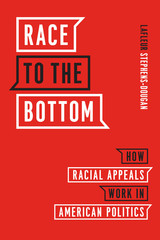 Race to the Bottom: How Racial Appeals Work in American Politics
LaFleur Stephens-Dougan
University of Chicago Press, 2020 African American voters are a key demographic to the modern Democratic base, and conventional wisdom has it that there is political cost to racialized “dog whistles,” especially for Democratic candidates. However, politicians from both parties and from all racial backgrounds continually appeal to negative racial attitudes for political gain.
Challenging what we think we know about race and politics, LaFleur Stephens-Dougan argues that candidates across the racial and political spectrum engage in “racial distancing,” or using negative racial appeals to communicate to racially moderate and conservative whites—the overwhelming majority of whites—that they will not disrupt the racial status quo. Race to the Bottom closely examines empirical data on racialized partisan stereotypes to show that engaging in racial distancing through political platforms that do not address the needs of nonwhite communities and charged rhetoric that targets African Americans, immigrants, and others can be politically advantageous. Racialized communication persists as a well-worn campaign strategy because it has real electoral value for both white and black politicians seeking to broaden their coalitions. Stephens-Dougan reveals that claims of racial progress have been overstated as our politicians are incentivized to employ racial prejudices at the expense of the most marginalized in our society.
 Race to Zero: How Companies Can Lead the Way to Climate Neutrality
Marian Krüger and Benedict Probst
Campus Verlag, 2025 Why stopping emissions isn’t enough—and what businesses must do next to truly neutralize their carbon impact.
Race to Zero is an essential guide for businesses navigating the complex path to sustainability. While cutting emissions is essential, complete carbon dioxide neutrality remains an elusive goal for many industries. Conventional carbon offsetting is not enough—what’s needed are groundbreaking technologies that actively remove greenhouse gases from the atmosphere.
In this book, Marian Krüger and Benedict Probst discuss promising carbon removal solutions available today, from direct air capture to regenerative practices, and offer clear, actionable strategies for companies committed to meaningful climate action. With a focus on innovation and feasibility, Race to Zero provides business leaders with the tools to integrate these technologies into their operations and take a leadership role in the fight against climate change.
A blueprint for executives and policymakers, this book unites climate ambition and real-world implementation, showing how businesses can drive the transition to a truly climate-neutral economy.
"Race," Writing, and Difference
Edited by Henry Louis Gates Jr. and Kwame Anthony Appiah
University of Chicago Press, 1987 A classic of cultural criticism, "Race," Writing, and Difference provides a broad introduction to the idea of "race" as a meaningful category in the study of literature and the shaping of critical theory. This collection demonstrates the variety of critical approaches through which one may discuss the complexities of racial "otherness" in various modes of discourse. Now, fifteen years after their first publication, these essays have managed to escape the cliches associated with the race-class-gender trinity of '80s criticism, and remain a provocative overview of the complex interplay between race, writing, and difference.
 Race/Class Conflict and Urban Financial Threat
Jennifer L. Hochschild
Russell Sage Foundation, 2024 Race and class inequality are at the crux of many policy disputes in American cities. But are they the only factors driving political discord? In Race/Class Conflict and Urban Financial Threat, political scientist Jennifer L. Hochschild examines significant policies in four major American cities to determine when race and class shape city politics, when they do not, and what additional forces have the power to shape urban policy choices.
Hochschild investigates the root causes of disputes in the arenas of policing, development, schooling, and budgeting. She finds that race and class are central to the Stop-Question-Frisk policing policy in New York City and the development of Atlanta’s Beltline. New York’s Stop-Question-Frisk policy was intended to fight crime and keep all New Yorkers safe. In practice, however, young Black and Latino men in low-income neighborhoods were disproportionately stopped by a predominantly White police force. The goal of the Atlanta Beltline, a redevelopment project that includes public parks, new housing, commercial development, and a robust public transit system, is to expand access around the city and keep working-class residents in the city by constructing affordable housing. Instead, the construction completed thus far has encouraged gentrification and displacement of poor, disproportionately Black residents, and has increased the wealth and power of both Black and White city elites.
However, Hochschild finds that race and class inequality are not central to all urban policy disputes. When investigating the issues of charter schools in Los Angeles and Chicago’s pension system she identifies a third driver: financial threat that feels existential to the policy and political actors. In Los Angeles, there is a battle between traditional public schools and independent charter schools. Increasingly, families with sufficient resources are moving out of L.A. to areas with better school districts. Traditional public schools and charter schools must fight for the remaining students and the funding that comes with them. There are not enough students to teach and not enough money to teach them. The school district risks school closures, layoffs, and pension deficits; in this context, race/class conflict fades into the background.
Chicago’s public sector pension debt is at least three times as large as the city’s annual budget and continues to grow. Policy actors agree that the pension system needs to be stably funded. Yet city leaders, fearful of upsetting constituents and jeopardizing their political careers, fail to implement policies that would do so. Meaningful policy change to rectify the pension deficit continues to get kicked down the line for future policy actors to address. In this context also, race/class conflict fades into the background.
Race/Class Conflict and Urban Financial Threat is a compelling examination of the role that race, class, and political and fiscal threat play in shaping urban policy.
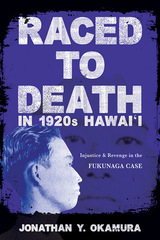 Raced to Death in 1920s Hawai i: Injustice and Revenge in the Fukunaga Case
Jonathan Y. Okamura
University of Illinois Press, 2019 On September 18, 1928, Myles Yutaka Fukunaga kidnapped and brutally murdered ten-year-old George Gill Jamieson in Waikîkî. Fukunaga, a nineteen-year-old nisei, or second-generation Japanese American, confessed to the crime. Within three weeks, authorities had convicted him and sentenced him to hang, despite questions about Fukunaga's sanity and a deeply flawed defense by his court-appointed attorneys. Jonathan Y. Okamura argues that officials "raced" Fukunaga to death—first viewing the accused only as Japanese despite the law supposedly being colorblind, and then hurrying to satisfy the Haole (white) community's demand for revenge. Okamura sets the case against an analysis of the racial hierarchy that undergirded Hawai‘ian society, which was dominated by Haoles who saw themselves most threatened by the islands' sizable Japanese American community. The Fukunaga case and others like it in the 1920s reinforced Haole supremacy and maintained the racial boundary that separated Haoles from non-Haoles, particularly through racial injustice. As Okamura challenges the representation of Hawai i as a racial paradise, he reveals the ways Haoles usurped the criminal justice system and reevaluates the tense history of anti-Japanese racism in Hawai i.
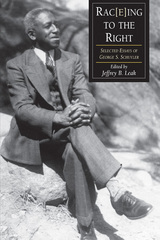 Rac(e)Ing To The Right: Selected Essays George S. Schuyler
George S. Schuyler
University of Tennessee Press, 2011 “Rac(e)ing to the Right is a great read and brings overdue attention to one of the most popular and controversial African American writers in history. . . . These writings reveal both the presence and the limits of conservatism in the African American intellectual tradition.”—Jeffrey A. Tucker, University of Rochester
From the 1920s to the 1970s, George S. Schuyler was one of the country’s most prolific—and controversial—observers of African American life. As journalist, socialist, novelist, right-wing conservative, and, finally, political outcast, his thought was rife with insight and contradiction. Until now, only Schuyler’s fiction has found its way back into print. Rac(e)ing to the Right is the first collection of his political and cultural criticism.
The essays gathered by Jeffrey Leak encompass three key periods of Schuyler’s development. The first section follows his literary evolution in the 1920s and 1930s, during which time he deserted the U.S. Army and briefly became a member of the Socialist Party. Part II reveals his shift toward political conservatism in response to World War II and the perceived threat of Communism. Part III covers the civil rights movement of the 1960s—an era that prompted some of his most extreme and volatile critiques of black leadership and liberal ideology. The book includes many essays that are not well known as well as pieces that have never before been published. One notable example is the first printed transcript of Schuyler’s 1961 debate on the Black Muslims with Malcolm X, James Baldwin, and C. Eric Lincoln.
Because African American experience is more often than not associated with liberalism and the left, the idea of a black conservative strikes many as an anomaly. Schuyler’s writings, however, force us to broaden and rethink our political and cultural conceptions. At times misguided, at times prophetic, his work expands our understanding of black intellectual thought in the twentieth century.
The Editor: Jeffrey B. Leak is assistant professor of African American literature at the University of North Carolina at Charlotte. He has published articles and reviews in Callaloo, African American Review, and The Oxford Companion to African American Literature.
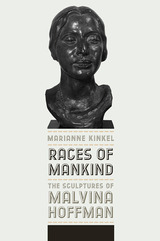 Races of Mankind: The Sculptures of Malvina Hoffman
Marianne Kinkel
University of Illinois Press, 2011 In 1930, Chicago's Field Museum of Natural History commissioned sculptor Malvina Hoffman to produce three-dimensional models of racial types for an anthropology display called The Races of Mankind. Marianne Kinkel’s cultural biography of the long-running exhibition measures how Hoffman’s ninety-one bronze and stone sculptures impacted perceptions of race in twentieth-century visual culture. Kinkel looks at how Hoffman's collaborations with curators and anthropologists transformed the commission from a traditional physical anthropology display into a fine art exhibit. She also tracks appearances of statuettes of the works in New York and Paris exhibitions and looks at how publishers used images of the sculptures to illustrate atlases, maps, and encyclopedias. The volume concludes with the dismantling of the exhibit in 1969 and the Field Museum’s redeployment of some of the sculptures in new educational settings. A fascinating cultural history, Races of Mankind examines how we continually re-negotiate the veracity of race through collaborative processes involved in the production, display, and circulation of visual representations.
 Races to Modernity: Metropolitan Aspirations in Eastern Europe, 1890–1940
Martin Kohlrausch
Central European University Press, 2014 The comparative presentation of the birth of metropolises like St. Petersburg, Helsinki, Kiev, Belgrade, or Athens confirms the importance of the Western model as well as the influence of international experts on city planning at the periphery of Europe. In addition, this volume presents an alternative perspective that aims to understand the genesis of Eastern European cities with a metropolitan character or metropolitan aspirations as a process sui generis. The rapid expansion of metropolitan cities such as London and Paris began in the 17th and 18th centuries. Large parts of Central and Eastern Europe underwent urbanization and industrialization with considerable delay. Nevertheless beginning in the second half of the 19th century, the towns in the Romanov and Habsburg empires, as well as in the Balkans grew into cities and metropolitan areas. They changed at an astonishing pace. This transformation has long been interpreted as an attempt to overcome the economic and cultural backwardness of the region and to catch up to Western Europe.
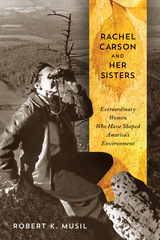 Rachel Carson and Her Sisters: Extraordinary Women Who Have Shaped America's Environment
Robert K. Musil
Rutgers University Press, 2015 In Rachel Carson and Her Sisters, Robert K. Musil redefines the achievements and legacy of environmental pioneer and scientist Rachel Carson, linking her work to a wide network of American women activists and writers and introducing her to a new, contemporary audience.Rachel Carson was the first American to combine two longstanding, but separate strands of American environmentalism—the love of nature and a concern for human health. Widely known for her 1962 best-seller, Silent Spring, Carson is today often perceived as a solitary “great woman,” whose work single-handedly launched a modern environmental movement. But as Musil demonstrates, Carson’s life’s work drew upon and was supported by already existing movements, many led by women, in conservation and public health.
On the fiftieth anniversary of her death, this book helps underscore Carson’s enduring environmental legacy and brings to life the achievements of women writers and advocates, such as Ellen Swallow Richards, Dr. Alice Hamilton, Terry Tempest Williams, Sandra Steingraber, Devra Davis, and Theo Colborn, all of whom overcame obstacles to build and lead the modern American environmental movement.
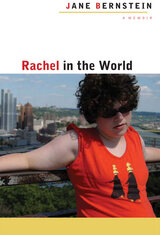 Rachel in the World: A Memoir
Jane Bernstein
University of Illinois Press, 2010 What happens when love is no longer enough? Jane Bernstein thought that learning to accept her daughter’s disabilities meant her struggles were over. But as Rachel grew up and needed more than a parent’s devotion, both mother and daughter were confronted with formidable obstacles. Rachel in the World, which begins in Rachel’s fifth year and ends when she turns twenty-two, tells of their barriers and successes with the same honesty and humor that made Loving Rachel, Bernstein’s first memoir, a classic in its field. The linked accounts in part 1 center on family issues, social services, experiences with caregivers, and Rachel herself--difficult, charming, hard to fathom, eager for her own independence. The second part of the book chronicles Bernstein’s attempt to find Rachel housing at a time when over 200,000 Americans with mental retardation were on waiting lists for residential services. As Rachel prepares to leave her mother’s constant protection, Bernstein invites the reader to share the frustrations and unexpected pleasures of finding a place for her daughter, first in her family, and then in the world.
 Rachel's Blue
Zakes Mda
Seagull Books, 2016 Novelist Zakes Mda has made a name for himself as a key chronicler of the new, post-apartheid South Africa, casting a satirical eye on its claims of political unity, its rising black middle class, and other aspects of its complicated, multiracial society.
In this novel, however, he turns his lens elsewhere: to a college town in Ohio. Here he finds human relations and the battle between the community and the individual no less compelling, or ridiculous. In Athens, Ohio, old high school friends Rachel Boucher and Jason de Klerk reconnect and rekindle a relationship that quickly becomes passionate. Initially, all seems well. Not only the couple, but their friends and family, are happy at this unexpected conjunction. But then Rachel meets someone else. Jason’s anger boils over into violence—violence that turns the community on its head, pitting friends and neighbors against one another. And all this happens before Rachel realizes she’s pregnant.
A powerful, piercing satire of contemporary life, love, and society, Rachel’s Blue is a wonderful example of the social novel, surprising us with undeniable revelations about everyday life.
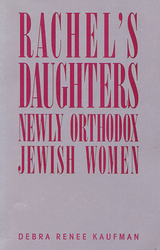 Rachel's Daughters: Newly Orthodox Jewish Women
Kaufman, Debra Renee
Rutgers University Press, 1991 Debra Kaufman writes about ba'alot teshuva women who have returned to Orthodox Judaism, a form of Judaism often assumed to be oppressive to women. She addresses many of the most challenging issues of family, feminism, and gender. Why, she asks, have these women chosen an Orthodox lifestyle? What attracts young, relatively affluent, well-educated, and highly assimilated women to the most traditional, right-wing, patriarchal, and fundamentalist branch of Judaism? The answers she discovers lead her beyond an analysis of religious renewal to those issues all women and men confront in public and private life.
Kaufman interviewed and observed 150 ba'alot teshuva. She uses their own stories, in their own words, to show us how they make sense of the choices they have made. Lamenting their past pursuit of individual freedom over social responsibility, they speak of searching for shared meaning and order, and finding it in orthodoxy.
The laws and customs of Orthodox Judaism have been formulated by men, and it is men who enforce those laws and control the Orthodox community. The leadership is dominated by men. But the women do not experience theologically-imposed subordination as we might expect. Although most ba'alot teshuva reject feminism or what they perceive as feminism, they maintain a gender consciousness that incorporates aspects of feminist ideology, and often use feminist rhetoric to explain their lives.
Kaufman does not idealize the ba'alot teshuva world. Their culture does not accommodate the non-Orthodox, the homosexual, the unmarried, the divorced. Nor do the women have the mechanisms or political power to reject what is still oppressive to them. They must live within the authority of a rabbinic tradition and social structure set by males. Like other religious right women, their choices reinforce authoritarian trends current in today's society. Rachel's Daughters provides a fascinating picture of how newly orthodox women perceive their role in society as more liberating than oppressive.
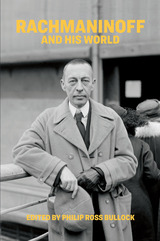 Rachmaninoff and His World
Edited by Philip Ross Bullock
University of Chicago Press, 2022 A biography of composer Sergei Rachmaninoff, published in collaboration with the Bard Music Festival.
One of the most popular classical composers of all time, Sergei Rachmaninoff (1873–1943) has often been dismissed by critics as a conservative, nostalgic holdover of the nineteenth century and a composer fundamentally hostile to musical modernism. The original essays collected here show how he was more responsive to aspects of contemporary musical life than is often thought, and how his deeply felt sense of Russianness coexisted with an appreciation of American and European culture. In particular, the essays document his involvement with intellectual and artistic circles in prerevolutionary Moscow and how the form of modernity they promoted shaped his early output. This volume represents one of the first serious explorations of Rachmaninoff’s successful career as a composer, pianist, and conductor, first in late Imperial Russia, and then after emigration in both the United States and interwar Europe. Shedding light on some unfamiliar works, especially his three operas and his many songs, the book also includes a substantial number of new documents illustrating Rachmaninoff’s celebrity status in America.
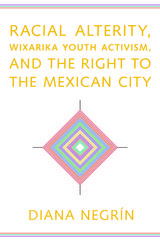 Racial Alterity, Wixarika Youth Activism, and the Right to the Mexican City
Diana Negrín
University of Arizona Press, 2019 While the population of Indigenous peoples living in Mexico’s cities has steadily increased over the past four decades, both the state and broader society have failed to recognize this geographic heterogeneity by continuing to expect Indigenous peoples to live in rural landscapes that are anathema to a modern Mexico.
This book examines the legacy of the racial imaginary in Mexico with a focus on the Wixarika (Huichol) Indigenous peoples of the western Sierra Madre from the colonial period to the present. Through an examination of the politics of identity, space, and activism among Wixarika university students living and working in the western Mexican cities of Tepic and Guadalajara, geographer Diana Negrín analyzes the production of racialized urban geographies and reveals how Wixarika youth are making claims to a more heterogeneous citizenship that challenges these deep-seated discourses and practices. Through the weaving together of historical material, critical interdisciplinary scholarship, and rich ethnography, this book sheds light on the racialized history, urban transformation, and contemporary Indigenous activism of a region of Mexico that has remained at the margins of scholarship.
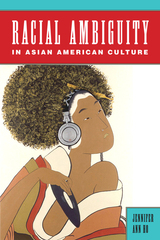 Racial Ambiguity in Asian American Culture
Ho, Jennifer Ann
Rutgers University Press, 2015 The sheer diversity of the Asian American populace makes them an ambiguous racial category. Indeed, the 2010 U.S. Census lists twenty-four Asian-ethnic groups, lumping together under one heading people with dramatically different historical backgrounds and cultures. In Racial Ambiguity in Asian American Culture, Jennifer Ann Ho shines a light on the hybrid and indeterminate aspects of race, revealing ambiguity to be paramount to a more nuanced understanding both of race and of what it means to be Asian American. Exploring a variety of subjects and cultural artifacts, Ho reveals how Asian American subjects evince a deep racial ambiguity that unmoors the concept of race from any fixed or finite understanding. For example, the book examines the racial ambiguity of Japanese American nisei Yoshiko Nakamura deLeon, who during World War II underwent an abrupt transition from being an enemy alien to an assimilating American, via the Mixed Marriage Policy of 1942. It looks at the blogs of Korean, Taiwanese, and Vietnamese Americans who were adopted as children by white American families and have conflicted feelings about their “honorary white” status. And it discusses Tiger Woods, the most famous mixed-race Asian American, whose description of himself as “Cablinasian”—reflecting his background as Black, Asian, Caucasian, and Native American—perfectly captures the ambiguity of racial classifications. Race is an abstraction that we treat as concrete, a construct that reflects only our desires, fears, and anxieties. Jennifer Ho demonstrates in Racial Ambiguity in Asian American Culture that seeing race as ambiguous puts us one step closer to a potential antidote to racism.
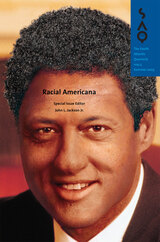 Racial Americana, Volume 104
John L. Jackson, Jr., ed.
Duke University Press If sociologist and cultural critic W. E. B. Du Bois proved prophetic about the twentieth century and its color lines, the beginning of the twenty-first century has given rise to divergent pronouncements about the potential of race relations and racial discourse in American society. Older categories of black victims and white victimizers hardly seem up to the task of making social sense out of today’s complex racial issues. Racial Americana explores new modes of racial theorizing that provide a more nuanced framework for understanding the social facts that underpin race (as belief system, as common sense, and as biological mythmaking), examining what those underpinnings forewarn about the future of social difference in the United States. Imagining America’s racialist future, the diverse contributors to this special issue—anthropologists, sociologists, historians, poets, and literary critics—offer their conceptualizations of race today, discuss how racial ideology has changed through the years, and explain its continuing ability to morph according to geopolitical, cultural, and economic strictures. Essays focus on how notions of race have helped constitute varied definitions of Americanness in the past and the present; offer critiques and recuperations of antiessentialist efforts; excavate the affective links between racism and patriotism after September 11; examine how race and gender intersect in the lives of African American jazz musicians; and determine what Du Bois's earlier arguments say about contemporary representations of “Latinidad.” Contributors. Elizabeth Alexander, Amiri Baraka, Tess Chakkalakal, Theodore A. Harris, John Hartigan Jr., Sharon P. Holland, John L. Jackson Jr., Marcyliena Morgan, Vijay Prashad, Don Robotham, Nichole T. Rustin, Brackette F. Williams
 Racial Attitudes in America: Trends and Interpretations
Howard Schuman, Charlotte Steeh, and Lawrence D. Bobo
Harvard University Press, 1985 This book traces changes in American attitudes toward racial issues that have taken place between the 1940s and the 1980s--a crucial period that encompasses the civil rights revolution, the growth of black militancy and white resistance, and the enactment of affirmative-action legislation.
The authors are the first to compare data about black and white attitudes collected by three major survey organizations: Gallup, the National Opinion Research Center, and the Institute for Social Research. They make careful distinctions between attitudes toward principles of racial equality and attitudes toward government action to implement those principles. The wide research base and methodological sophistication of their analysis yield conclusions quite different from those of earlier, more narrowly drawn studies. For example, they find that while there has been a striking increase in support for principles of equality and fairness, support for some kinds of implementation of these ideals lags far behind or has even declined among both blacks and whites. The implementation measures considered range from busing to achieve integration of schools to laws requiring equal opportunity in employment. In addition to reanalyzing survey data, the authors have also performed several innovative experiments on the wording and context of survey questions to help them interpret the data more accurately.
 Racial Attitudes in America: Trends and Interpretations, Revised Edition
Howard Schuman, Charlotte Steeh, Lawrence D. Bobo, and Maria Krysan
Harvard University Press, 1997 This new edition brings fully up-to-date a book widely praised for its clear and objective presentation of changes in American racial attitudes during the second half of the twentieth century.
The book retains the division of racial attitudes into principles of equality, government implementation of those principles, and social distance, but adds questions concerning affirmative action and beliefs about sources of inequality. A conceptual section now opens the book, evidence on social desirability has been added, and a new chapter deals with cohort effects and with the impact of income, education, and gender. In key instances, randomized experiments are introduced that test hypotheses more rigorously than is ordinarily possible with survey data. Throughout, the authors have reconsidered earlier ideas and introduced new thinking.
 Racial Beings: Experiments in Asian American New Materialisms
Michelle N. Huang
Duke University Press, 2026 In Racial Beings, Michelle N. Huang brings a feminist new materialist lens to bear on contemporary Asian American literature’s innovative play with discourses of science and technology. She argues that emerging from these works is a “molecular aesthetics”—formal experimentation that diminishes the boundaries of the human—which challenge the perception of racial identity as a trait of an individual human. Instead, molecular aesthetics reveals how race permeates the matter of the world. Reading works by authors such as Ruth Ozeki, Larissa Lai, Mei-mei Berssenbrugge, and Julie Otsuka through the language of scientific discourses like quantum physics, genetic engineering, and elemental chemistry, Huang develops a synthetic reading practice which shows both that the nexus of race and science is not reducible to scientific racism and that science can provide an unlikely creative reservoir for Asian American writers and artists which allows us to imagine alternative ways of understanding racial being beyond the limits of the human individual.
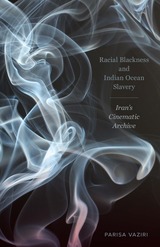 Racial Blackness and Indian Ocean Slavery: Iran's Cinematic Archive
Parisa Vaziri
University of Minnesota Press, 2023 Rethinking the history of African enslavement in the western Indian Ocean through the lens of Iranian cinema
From the East African and Red Sea coasts to the Persian Gulf ports of Bushihr, Kish, and Hurmuz, sailing and caravan networks supplied Iran and the surrounding regions with African slave labor from antiquity to the nineteenth century. This book reveals how Iranian cinema preserves the legacy of this vast and yet long-overlooked history that has come to be known as Indian Ocean slavery. How does a focus on blackness complicate traditional understandings of history and culture? Parisa Vaziri addresses this question by looking at residues of the Indian Ocean slave trade in Iranian films from the second half of the twentieth century. Revealing the politicized clash between commercial cinema (fīlmfārsī) and alternative filmmaking (the Iranian New Wave), she pays particular attention to the healing ritual zār, which is both an African slave descendent practice and a constitutive element of Iranian culture, as well as to cinematic sīyāh bāzī (Persian black play). Moving beyond other studies on Indian Ocean and trans-Saharan slavery, Vaziri highlights the crystallization of a singular mode of historicity within these cinematic examples—one of “absence” that reflects the relative dearth of archival information on the facts surrounding Indian Ocean slavery. Bringing together cinema studies, Middle East studies, Black studies, and postcolonial theory, Racial Blackness and Indian Ocean Slavery explores African enslavement in the Indian Ocean through the revelatory and little-known history of Iranian cinema. It shows that Iranian film reveals a resistance to facticity representative of the history of African enslavement in the Indian Ocean and preserves the legacy of African slavery’s longue durée in ways that resist its overpowering erasure in the popular and historical imagination. Retail e-book files for this title are screen-reader friendly with images accompanied by short alt text and/or extended descriptions.
Racial Blackness and the Discontinuity of Western Modernity
Edited by Justin A. Joyce, Dwight A. McBride, and John Carlos Rowe
University of Illinois Press, 2013 The unfinished manuscript of literary and cultural theorist Lindon Barrett, this study offers a genealogy of how the development of racial blackness within the mercantile capitalist system of Euro-American colonial imperialism was constitutive of Western modernity. Masterfully connecting historical systems of racial slavery to post-Enlightenment modernity, this pathbreaking publication shows how Western modernity depended on a particular conception of racism contested by African American writers and intellectuals from the eighteenth century to the Harlem Renaissance.
The Racial Cage
ehlers
University of Minnesota Press, 2025 The potential of biohumanities as a foundation for antiracist critique of the human
The Racial Cage delivers a spirited and polyvocal analysis of how race is materialized through both metaphorical and literal cages. It theorizes the cage, fence, dragnet, and tube as material–semiotic sites for racialization and for iteratively redefining the human–animal boundary. A collaborative conversation across continents, this work examines the racial cage as an important part of the practice of social division and bodily containment. The deeply considered result is an empirical and theoretical approach to biohumanities that productively interrogates its linkages to critical theories of race and racism.
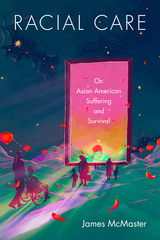 Racial Care: On Asian American Suffering and Survival
James McMaster
Duke University Press, 2025 In Racial Care, James McMaster studies the forms of care that Asian Americans have taken up to survive the suffering they experience under neoliberal capitalism and white supremacy in the United States. He shows that racialized labors of care can cut multiple ways: sustaining life for its recipients, draining life from its performers. Uplifting examples of this dynamic from Asian American theater, performance art, visual culture, film, poetry, protest, and everyday life, McMaster advances a racialized ethics and politics of care forged from the insights of feminist, queer, and disability theory. He argues that racial care in the Asian American case must respond both to the specific sort of neglect Asian Americans face as a consequence of model minority racialization and to the urgent needs for care that exist among other racialized and colonized peoples. Following the lead of artists and writers like Kristina Wong, Mark Aguhar, Kimberly Alidio, Julia Cho, kt shorb, and Jess X. Snow, Racial Care provides a path forward for all seeking to sustain multiply marginalized Asian American life in times of overlapping crisis.
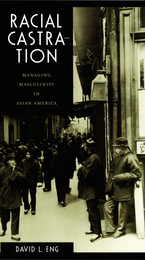 Racial Castration: Managing Masculinity in Asian America
David L. Eng
Duke University Press, 2001 Racial Castration, the first book to bring together the fields of Asian American studies and psychoanalytic theory, explores the role of sexuality in racial formation and the place of race in sexual identity. David L. Eng examines images—literary, visual, and filmic—that configure past as well as contemporary perceptions of Asian American men as emasculated, homosexualized, or queer.
Eng juxtaposes theortical discussions of Freud, Lacan, and Fanon with critical readings of works by Frank Chin, Maxine Hong Kingston, Lonny Kaneko, David Henry Hwang, Louie Chu, David Wong Louie, Ang Lee, and R. Zamora Linmark. While situating these literary and cultural productions in relation to both psychoanalytic theory and historical events of particular significance for Asian Americans, Eng presents a sustained analysis of dreamwork and photography, the mirror stage and the primal scene, and fetishism and hysteria. In the process, he offers startlingly new interpretations of Asian American masculinity in its connections to immigration exclusion, the building of the transcontinental railroad, the wartime internment of Japanese Americans, multiculturalism, and the model minority myth. After demonstrating the many ways in which Asian American males are haunted and constrained by enduring domestic norms of sexuality and race, Eng analyzes the relationship between Asian American male subjectivity and the larger transnational Asian diaspora. Challenging more conventional understandings of diaspora as organized by race, he instead reconceptualizes it in terms of sexuality and queerness.
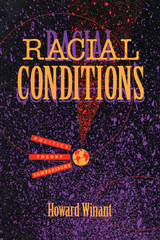 Racial Conditions: Politics, Theory, Comparisons
Howard Winant
University of Minnesota Press, 1994 More than a quarter-century after the passage of civil rights legislation in the United States and decades since the last European colonies attained their independence, race continues to play a central role in cultural, political, and economic life, both in the United States and around the globe. Race divides societies and individuals, shapes social policies of the most diverse sort, and organizes basic ideas about human identity and difference. Why? This ambitious book addresses the gaps in our understanding of contemporary racial dynamics, and develops a powerful theoretical approach to the vast subject of race. Howard Winant, one of the leading writers in the United States on the subject, argues that race cannot be understood as a "social problem" or as a "survival" of earlier, more benighted ages. Indeed, from the rise of Europe to the present, race has been a social condition, a permanent though flexible feature of human society and identity. The key to Winant's analysis is racial formation theory, an approach he refines and advances as he considers a wide range of contemporary controversies in racial theory and politics. Among these are the relationship between race and class, as well as the racial dimensions of gender, diaspora, colonialism, and fascism. Other key topics include the changing nature of racial identity in the post-civil rights era, the 1992 Los Angeles riot, and politics of race in Brazil. Intellectually challenging and clearly written, well informed and deeply committed to social and racial justice, Racial Conditions marks an important advance in critical thinking about race today. Howard Winant teaches sociology at Temple University.
 Racial Conflict and Economic Development
W. Arthur Lewis
Harvard University Press, 1985 Is economic equality necessary for social peace? Why do the strong oppress and impoverish the weak? How are developing nations overcoming the legacy of colonialism? These are a few of the many thought-provoking concerns addressed in this book. The first in a new series—The W. E. B. Du Bois Lectures—it tackles a wide range of topics dealing with the economics of racial conflict in important areas of the world. Race is often introduced as a key factor, whether it is or not, in such highly controversial subjects as colonialism, federalism, dual labor markets, affirmative action, multinational corporations, the international economic order, and of course discrimination itself. W. Arthur Lewis discerns the ways in which race and economics affect individuals and groups, bringing a personal viewpoint to the problems faced by both less-developed and more-developed countries.
How many black vice-presidents should a major North American corporation employ? Do East Indians and Canadians demonstrate more aptitude for business than West Indians? Does affirmative action work in education or business? Though he boldly confronts grave national and international problems, Lewis does so with wisdom, equanimity, optimism, even a touch of humor. His individualistic and commonsensical thoughts and opinions may not please or satisfy everyone, but they cannot fail to intrigue and invite discussion.
 Racial Conflict in Contemporary Society
John Stone
Harvard University Press, 1985 This book presents a compact, up-to-date survey of the main facts and ideas about racial conflict in the modern world. John Stone discusses the ongoing argument over the biology of race, the various aspects of the I.Q. controversy, the rise and relevance of sociobiology, and the claims of Marxist, plural-society, and modernization theories. Drawing on examples of racial and ethnic conflict throughout the world, from South African apartheid to the New World's “melting pot,” he shows how ethnic diversity affects social structure on all levels—family, education, housing, employment, government, industry.
Stone includes an illuminating analysis of policy issues such as affirmative action and busing, and an assessment of separatist, pluralist, and assimilationist strategies. He demonstrates that such strategies rarely provide simple and universal solutions to the problems of intergroup tensions. Yet, he argues, there can be no racial harmony without racial justice, and no justice until all groups have won an equal share in the social, political, and economic resources of society. The need to reconcile policies on integration with demands for cultural difference is one of the great challenges facing governments today. In an era in which genocide has been conceived as the “final solution” to the problem, this is an extremely important book.
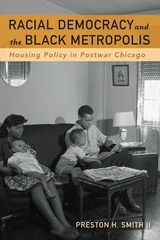 Racial Democracy and the Black Metropolis: Housing Policy in Postwar Chicago
Preston H. Smith II
University of Minnesota Press, 2012 “The African American community.” “The black position.” In accounts of black politics after the Second World War, these phrases reflect how the African American perspective generally appeared consistent, coherent, and unified. In Racial Democracy and the Black Metropolis, Preston H. Smith II examines housing debates in Chicago that go beyond black and white politics, and he shows how class and factional conflicts among African Americans actually helped to reproduce stunning segregation along economic lines. Class and factional conflicts were normal in the rough-and-tumble world of land use politics. They are, however, often not visible in accounts of the postwar fight against segregation. Smith outlines the ideological framework that black civic leaders in Chicago used to formulate housing policy, both within and outside the black community, to reveal a surprising picture of leaders who singled out racial segregation as the source of African Americans’ inadequate housing rather than attacking class inequalities. What are generally presented as black positions on housing policy in Chicago, Smith makes clear, belonged to the black elite and did not necessarily reflect black working-class participation or interests. This book details how black civic leaders fought racial discrimination in ways that promoted—or at least did not sacrifice—their class interests in housing and real estate struggles. And, as Smith demonstrates, their accommodation of the real estate practices and government policy of the time has had a lasting effect: it contributed to a legacy of class segregation in the housing market in Chicago and major metropolitan areas across the country that is still felt today.
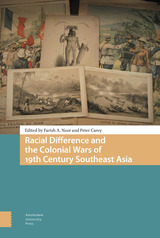 Racial Difference and the Colonial Wars of 19th Century Southeast Asia
Farish Ahmad-Noor
Amsterdam University Press, 2021 The colonisation of Southeast Asia was a long and often violent process where numerous military campaigns were waged by the colonial powers across the region. The notion of racial difference was crucial in many of these wars, as native Southeast Asian societies were often framed in negative terms as 'savage' and 'backward' communities that needed to be subdued and 'civilised'. This collection of critical essays focuses on the colonial construction of race and looks at how the colonial wars in 19th-century Southeast Asia were rationalised via recourse to theories of racial difference, making race a significant factor in the wars of Empire. Looking at the colonial wars in Java, Borneo, Siam, the Philippines, the Malay Peninsula and other parts of Southeast Asia, the essays examine the manner in which the idea of racial difference was weaponised by the colonising powers and how forms of local resistance often worked through such colonial structures of identity politics.
Racial Disparities in the Department of the Air Force Military Justice System
Shamena Anwar
RAND Corporation, 2024 Although the existence of racial disparities within the Department of the Air Force military justice system has been well established, the causes of these disparities have not yet been determined. This report uses a mixed methods approach to identify how disparities in the military justice system can arise, at what stages of the system the disparities occur, and what factors can explain the disparities.
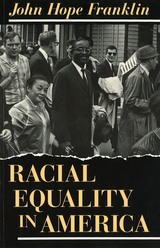 Racial Equality in America
John Hope Franklin
University of Missouri Press, 1976 This is distinguished historian John Hope Franklin's eloquent and forceful meditation on the persistent disparity between the goal of racial equality in America and the facts of discrimination. In a searing critique of Thomas Jefferson, Franklin shows that this spokesman for democracy did not include African Americans among those "created equal." Franklin chronicles the events of the nineteenth century that solidified inequality in America and shows how emancipation dealt only with slavery, not with inequality. In the twentieth century, America finally confronted the fact that equality is indivisible: it must not be divided so that it is extended to some at the expense of others. Once this indivisibility is accepted, Franklin charges, America faces the monumental task of overcoming its long heritage of inequality. Racial Equality in America is a powerful reminder that our history is more than a record of idealized democratic traditions and institutions. It is a dramatic message to all Americans, calling them to know their history and themselves.
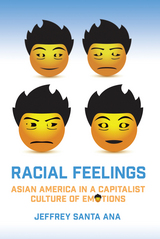 Racial Feelings: Asian America in a Capitalist Culture of Emotion
Jeffrey Santa Ana
Temple University Press, 2015 In Racial Feelings, Jeffrey Santa Ana examines how Asian American narratives communicate and critique—to varying degrees—the emotions that power the perception of Asians as racially different.
Santa Ana explores various forms of Asian American cultural production, ranging from literature and graphic narratives to film and advertising, to illuminate the connections between global economic relations and the emotions that shape aspirations for the good life. He illustrates his argument with examples including the destitute Filipino immigrant William Paulinha, in Han Ong’s Fixer Chao, who targets his anger on the capitalist forces of objectification that racially exploit him, and Nan and Pingpin in Ha Jin’s A Free Life, who seek happiness and belonging in America.
Racial Feelings addresses how Asian Americans both resist and rely on stereotypes in their writing and art work. In addition, Santa Ana investigates how capitalism shapes and structures an emotional discourse that represents Asians as both economic exemplars and threats.
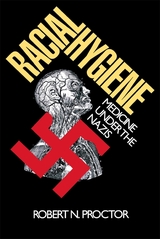 Racial Hygiene: Medicine under the Nazis
Robert N. Proctor
Harvard University Press, 1988 Scholars exploring the history of science under the Nazis have generally concentrated on the Nazi destruction of science or the corruption of intellectual and liberal values. Racial Hygiene focuses on how scientists themselves participated in the construction of Nazi racial policy. Robert Proctor demonstrates that the common picture of a passive scientific community coerced into cooperation with the Nazis fails to grasp the reality of what actually happened—namely, that many of the political initiatives of the Nazis arose from within the scientific community, and that medical scientists actively designed and administered key elements of National Socialist policy.
The book presents the most comprehensive account to date of German medical involvement in the sterilization and castration laws, the laws banning marriage between Jews and non-Jews, and the massive program to destroy “lives not worth living.” The study traces attempts on the part of doctors to conceive of the “Jewish problem” as a “medical problem,” and how medical journals openly discussed the need to find a “final solution” to Germany’s Jewish and gypsy “problems.”
Proctor makes us aware that such thinking was not unique to Germany. The social Darwinism of the late nineteenth century in America and Europe gave rise to theories of racial hygiene that were embraced by enthusiasts of various nationalities in the hope of breeding a better, healthier, stronger race of people. Proctor also presents an account of the “organic” health movement that flourished under the Nazis, including campaigns to reduce smoking and drinking, and efforts to require bakeries to produce whole-grain bread. A separate chapter is devoted to the emergence of a resistance movement among doctors in the Association of Socialist Physicians. The book is based on a close analysis of contemporary documents, including German state archives and more than two hundred medical journals published during the period.
Proctor has set out not merely to tell a story but also to urge reflection on what might be called the “political philosophy of science”—how movements that shape the policies of nations can also shape the structure and priorities of science. The broad implications of this book make it of consequence not only to historians, physicians, and people concerned with the history and philosophy of science, but also to those interested in science policy and medical ethics.
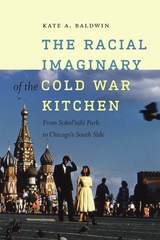 The Racial Imaginary of the Cold War Kitchen: From Sokol’niki Park to Chicago’s South Side
Kate A. Baldwin
Dartmouth College Press, 2016 This book demonstrates the ways in which the kitchen—the centerpiece of domesticity and consumerism—was deployed as a recurring motif in the ideological and propaganda battles of the Cold War. Beginning with the famous Nixon–Khrushchev kitchen debate, Baldwin shows how Nixon turned the kitchen into a space of exception, while contemporary writers, artists, and activists depicted it as a site of cultural resistance. Focusing on a wide variety of literature and media from the United States and the Soviet Union, Baldwin reveals how the binary logic at work in Nixon’s discourse—setting U.S. freedom against Soviet totalitarianism—erased the histories of slavery, gender subordination, colonialism, and racial genocide. The Racial Imaginary of the Cold War Kitchen treats the kitchen as symptomatic of these erasures, connecting issues of race, gender, and social difference across national boundaries. This rich and rewarding study—embracing the literature, film, and photography of the era—will appeal to a broad spectrum of scholars.
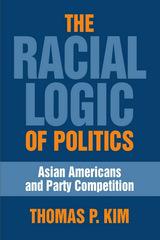 The Racial Logic of Politics: Asian Americans and Party Competition
Thomas P. Kim
Temple University Press, 2006 As he systemically studies the barriers that Asian Americans face in the electoral and legislative processes, Thomas Kim shows how racism is embedded in America's two-party political system.Here Kim examines the institutional barriers that Asian Americans face in the electoral and legislative processes. Utilizing approaches from ethnic studies and political science, including rational choice theory, he demonstrates how the political logic of two-party competition actually works against Asian American political interests. According to Kim, political party leaders recognize that Asian Americans are tagged with "ethnic markers" that label them as immutably "foreign," and as such, parties cannot afford to be too closely associated with (racialized) Asian Americans. In publicly repudiating Asian American efforts to gain political power, Kim asserts, party elites are making rational, strategic calculations.Although other commentators have blamed the diversity of the Asian American population for its lack of political success, Kim argues convincingly that race itself is the chief barrier to political participation—and it will not be overcome simply by electing or appointing more Asian Americans to political office.
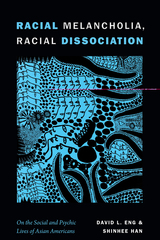 Racial Melancholia, Racial Dissociation: On the Social and Psychic Lives of Asian Americans
David L. Eng and Shinhee Han
Duke University Press, 2018 In Racial Melancholia, Racial Dissociation critic David L. Eng and psychotherapist Shinhee Han draw on case histories from the mid-1990s to the present to explore the social and psychic predicaments of Asian American young adults from Generation X to Generation Y. Combining critical race theory with several strands of psychoanalytic thought, they develop the concepts of racial melancholia and racial dissociation to investigate changing processes of loss associated with immigration, displacement, diaspora, and assimilation. These case studies of first- and second-generation Asian Americans deal with a range of difficulties, from depression, suicide, and the politics of coming out to broader issues of the model minority stereotype, transnational adoption, parachute children, colorblind discourses in the United States, and the rise of Asia under globalization. Throughout, Eng and Han link psychoanalysis to larger structural and historical phenomena, illuminating how the study of psychic processes of individuals can inform investigations of race, sexuality, and immigration while creating a more sustained conversation about the social lives of Asian Americans and Asians in the diaspora.
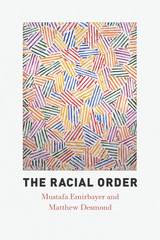 The Racial Order
Mustafa Emirbayer and Matthew Desmond
University of Chicago Press, 2015 Proceeding from the bold and provocative claim that there never has been a comprehensive and systematic theory of race, Mustafa Emirbayer and Matthew Desmond set out to reformulate how we think about this most difficult of topics in American life. In The Racial Order, they draw on Bourdieu, Durkheim, and Dewey to present a new theoretical framework for race scholarship. Animated by a deep and reflexive intelligence, the book engages the large and important issues of social theory today and, along the way, offers piercing insights into how race actually works in America. Emirbayer and Desmond set out to examine how the racial order is structured, how it is reproduced and sometimes transformed, and how it penetrates into the innermost reaches of our racialized selves. They also consider how—and toward what end—the racial order might be reconstructed.
In the end, this project is not merely about race; it is a theoretical reconsideration of the fundamental problems of order, agency, power, and social justice. The Racial Order is a challenging work of social theory, institutional and cultural analysis, and normative inquiry.
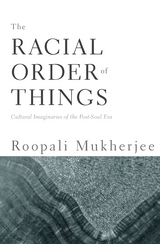 The Racial Order Of Things: Cultural Imaginaries Of The Post-Soul Era
Roopali Mukherjee
University of Minnesota Press, 2006 Why did affirmative action programs implemented during the sixties and seventies suffer vicious assaults in the nineties? How were culturally resonant appeals to individualism and colorblindness turned around during the nineties to epitomize a “toxic system of quotas, preference, and set-asides”?In The Racial Order of Things, Roopali Mukherjee analyzes reversals and reinterpretations that mark the turn from the civil rights era of the sixties to the post-soul decade of the nineties. She begins by surveying a series of intractable disagreements over race- and gender-based social justice that have played out over the past decade, framed by the 1996 passage of California’s Proposition 209 and the 2003 Supreme Court decision on admissions criteria at the University of Michigan. Examining political campaigns for and against affirmative action as well as films about dilemmas of gender and race in the mythic meritocracy, the book exposes a remarkable discursive tug-of-war over antidiscrimination policies during the nineties.Highlighting the ways in which categories such as “blackness” and “women” have operated in these debates, Mukherjee sees the public policy process as a key site where cultural identities are formed, recognized, and discarded. Considering mainstream media, including Hollywood films like Disclosure, G.I. Jane, Courage under Fire, and The Contender, Mukherjee focuses on conflicts following the introduction of women and blacks into the workplace. She explores the politics of public memory about the civil rights era through the lens of feature film, documentary, and network news. Using newspaper articles and legislative records, Mukherjee provides a comparative reading of narratives and counternarratives of the debate surrounding the 1964 Civil Rights Act and anti–affirmative action campaigns of the neoliberal nineties.Balancing policy narrative, cinematic reading, and conceptual analysis, Mukherjee demonstrates a shifting and paradoxical racial order that explains how the cultural authority and political career of affirmative action remains in flux, thoroughly contested, and contradictory.Roopali Mukherjee is assistant professor of media studies at Queens College of the City University of New York.
|
|
